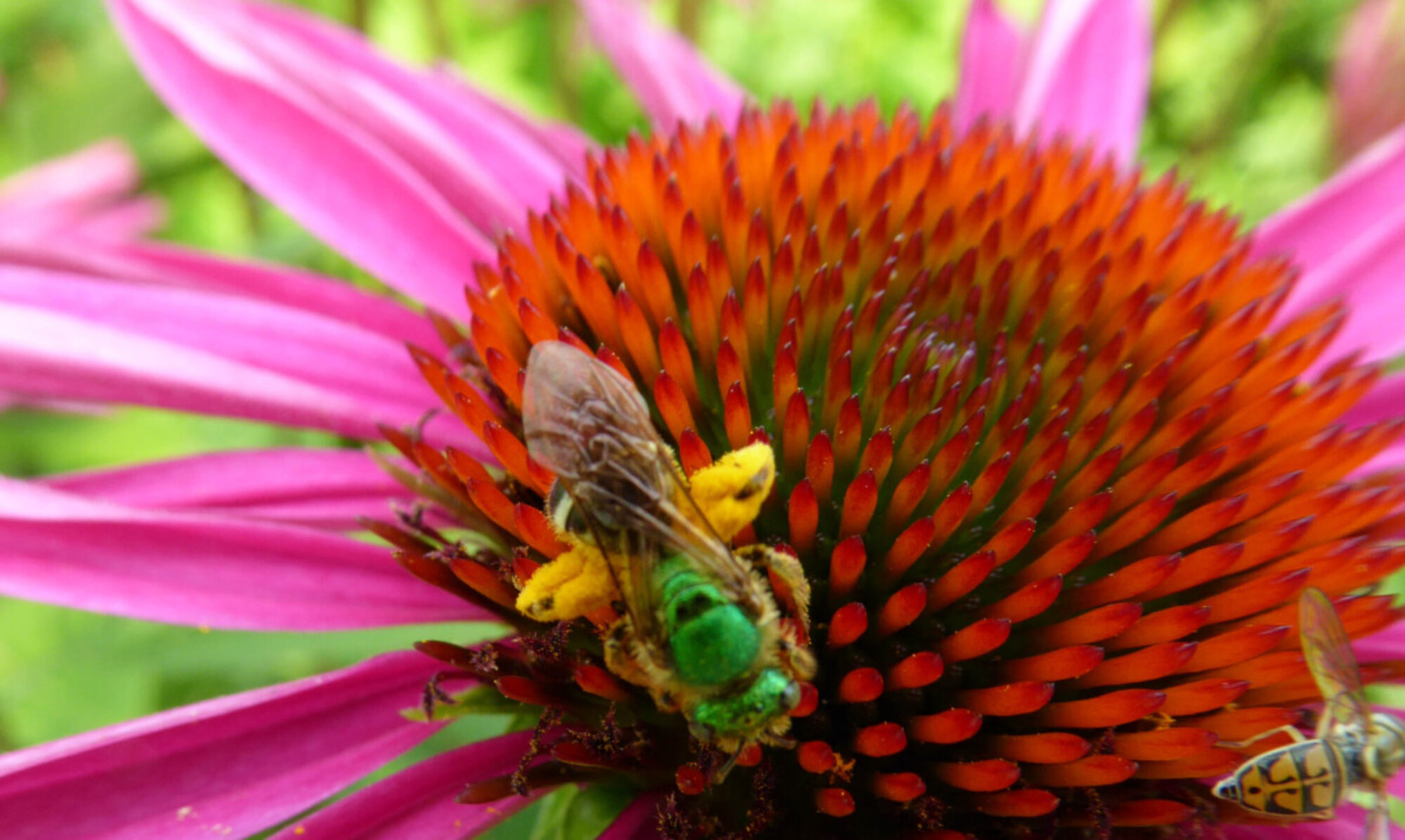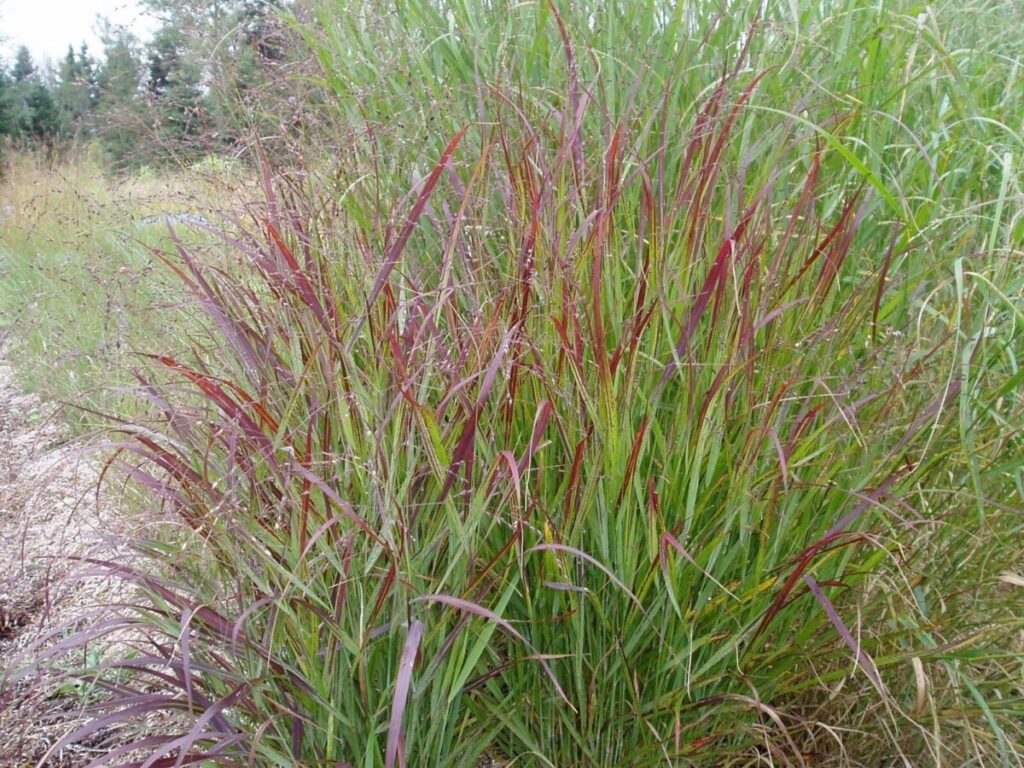
Switch Grass (Panicum Virgatum ‘Shenandoah’)

Plant Introduction
Switch Grass (Panicum Virgatum ‘Shenandoah’) is a beautiful and versatile ornamental grass. Here are some interesting facts about it:
- Appearance: This variety of switchgrass is known for its striking foliage that starts green and gradually turns to a deep red or burgundy color as the season progresses. It also produces airy, pinkish flower panicles in late summer.
- Growth: It typically grows to a height of 3-4 feet and spreads about 2-3 feet wide. It’s a clump-forming grass, which means it won’t spread aggressively.
- Habitat: ‘Shenandoah’ is native to North America and is well-suited to a variety of soil types, including clay, loam, and sandy soils. It thrives in full sun but can tolerate partial shade.
- Uses: This grass is often used in landscaping for its ornamental value. It’s great for adding texture and color to garden beds, borders, and even as a focal point in a garden. It’s also beneficial for erosion control and provides habitat for wildlife.
- Maintenance: It’s a low-maintenance plant that is drought-tolerant once established. It requires minimal watering and can be cut back in late winter or early spring to encourage new growth.
Specifications
Plant Habit: Grass/Grass-like
Life cycle: Perennial
Sun Requirements: Full Sun
Full Sun to Partial Shade
Water Preferences: Wet Mesic
Mesic
Soil pH Preferences: Slightly acid (6.1 – 6.5)
Neutral (6.6 – 7.3)
Slightly alkaline (7.4 – 7.8)
Minimum cold hardiness: Zone 4a -34.4 °C (-30 °F) to -31.7 °C (-25 °F)
Maximum recommended zone: Zone 9b
Plant Height: 4 to 5 feet
Leaves: Unusual foliage color
Other: Blue green maturing to red in summer
Fruit: Showy
Edible to birds
Fruiting Time: Late fall or early winter
Winter
Other: Seed plumes often persist throughout winter
Flowers: Showy
Flower Color: Pink
Bloom Size: Under 1″
Flower Time: Late summer or early fall
Underground structures: Rhizome
Suitable Locations: Xeriscapic
Bog gardening
Uses: Provides winter interest
Erosion control
Cut Flower
Dried Flower
Will Naturalize
Wildlife Attractant: Birds
Resistances: Deer Resistant
Pollution
Humidity tolerant
Drought tolerant
Salt tolerant
Propagation: Division
Miscellaneous: Tolerates poor soil
The Tale of Sway: Nature’s Resilient Hero
Once upon a time, in the vast prairies of North America, there thrived a remarkable plant known as Sway, or Panicum virgatum. This tall, graceful grass was a vital part of the ecosystem, providing shelter and food for countless creatures.
Sway was not just any ordinary plant. It had deep roots that could reach far into the soil, allowing it to survive even the harshest droughts. These roots also helped prevent soil erosion, making Sway a protector of the land. Its tall, slender stalks swayed gently in the breeze, creating a sea of green that stretched as far as the eye could see.
In the summer, Sway would bloom with tiny, teardrop-shaped flowers that had purplish-reddish tips. These flowers were a favorite among pollinators like bees and butterflies, who would visit them to collect nectar. As the seasons changed, the grass would turn a beautiful shade of yellow in the fall, adding a splash of color to the landscape.
But Sway was more than just a pretty plant. It played a crucial role in the lives of many animals. Bison, pronghorn, and prairie dogs roamed the prairies, relying on Sway for food and shelter. Raptors like eagles and hawks soared above, hunting for prey hidden among the tall stalks. Even the Indigenous peoples of the region found value in Sway, using it for food, shelter, and spiritual purposes.
As time passed, the prairies began to change. Farmland replaced much of the native grasslands, and the once vast expanses of Sway dwindled. However, the resilient plant never gave up. It continued to grow in the remaining patches of prairie, standing tall and proud.
In recent years, scientists and environmentalists have recognized the importance of Sway once again. They discovered that this hardy plant could be used as a sustainable biofuel, providing a renewable source of energy. Sway contains more than five times as much energy as it takes to grow and refine it into ethanol. This discovery has sparked efforts to restore Sway to its former glory, bringing back the vibrant ecosystems it once supported.
Today, Sway stands as a symbol of resilience and hope. It reminds us of the beauty and importance of our natural world and the need to protect and preserve it for future generations.

Monkey Grass (Liriope Muscari ‘Big Blue’)

Plant Introduction
Monkey Grass (Liriope muscari ‘Big Blue’), also known as Big Blue Lilyturf, is a versatile and low-maintenance perennial plant. Here are some key points about it:
- Appearance: It forms dense clumps of grass-like, dark green, strap-like leaves that are glossy and about 1/2 inch (1.2 cm) wide. The plant can reach a height of about 18 inches (45 cm) and spreads to about one foot (30 cm).
- Flowers: In late summer, it produces spikes of violet, lavender, or white flowers. These flowers add a pop of color to the landscape.
- Growth Conditions: It prefers partial shade but can tolerate full sun in cooler climates. It is adaptable to a wide range of soils but performs best in moist, well-drained conditions.
- Uses: This plant is ideal for ground cover, edging paths or borders, and preventing soil erosion. It is also tolerant of drought, high humidity, pollution, and shade.
- Maintenance: Very low maintenance and easy to care for. It is not usually severely damaged by deer or rabbits.
Specifications
Plant Habit: Grass/Grass-like
Life cycle: Perennial
Sun Requirements: Full Sun
Full Sun to Partial Shade
Water Preferences: Mesic
Dry Mesic
Dry
Minimum cold hardiness: Zone 6a -23.3 °C (-10 °F) to -20.6 °C (-5 °F)
Maximum recommended zone: Zone 10b
Plant Height: 6-12 in.
Plant Spread: 9-12 in.
Leaves: Evergreen
Fruit: Edible to birds
Flowers: Showy
Flower Color: Violet/Lavender
Flower Time: Late summer or early fall
Underground structures: Rhizome
Corm
Bulb
Suitable Locations: Xeriscapic
Uses: Provides winter interest
Erosion control
Groundcover
Wildlife Attractant: Birds
Resistances: Drought tolerant
Propagation: Stratify seeds: If growing indoors.
Suitable for winter sowing. Seed does not store well, sow as soon as possible.
Propagation: Division
Offsets
Bulbs
Corms
Rhizomes, tubers.
The Tale of the Resilient Monkey Grass
In a quiet corner of a bustling garden, there thrived a remarkable plant known as Monkey Grass, or more formally, Liriope muscari ‘Big Blue’. This evergreen perennial was a true garden gem, admired for its lush, grass-like foliage and vibrant blooms.
Monkey Grass was no ordinary plant. It formed dense clumps of dark green, strappy leaves that arched gracefully, creating a fountain-like effect. In late summer, it put on a spectacular show, sending up spikes of lilac-purple flowers that resembled tiny grape hyacinths. These blooms stood tall above the foliage, adding a splash of color to the garden.
One day, a young gardener named Sam discovered Monkey Grass while visiting a local nursery. Sam was immediately captivated by its elegant appearance and decided to bring a few plants home. He carefully planted them along the edges of his garden paths, where they could show off their beauty.
Monkey Grass quickly adapted to its new home. It thrived in the partial shade, though it could also tolerate full sun in cooler climates. Sam was delighted to find that it was incredibly low-maintenance. It didn’t mind the occasional dry spell and was even resistant to deer and rabbits, which often plagued other plants in the garden.
As the seasons passed, Monkey Grass continued to flourish. Its foliage remained lush and green year-round, providing a beautiful backdrop for other plants. In the fall, the flowers gave way to shiny black berries that persisted into winter, adding another layer of interest to the garden.
Sam’s garden became a haven for visitors, both human and animal. Butterflies and bees were drawn to the flowers, while birds enjoyed the berries. Neighbors often stopped by to admire the garden, and Sam was always happy to share the story of his beloved Monkey Grass.
And so, Monkey Grass lived happily in Sam’s garden, bringing beauty and joy to all who saw it. Its resilience and charm made it a favorite among gardeners, proving that even the simplest plants can have a big impact.
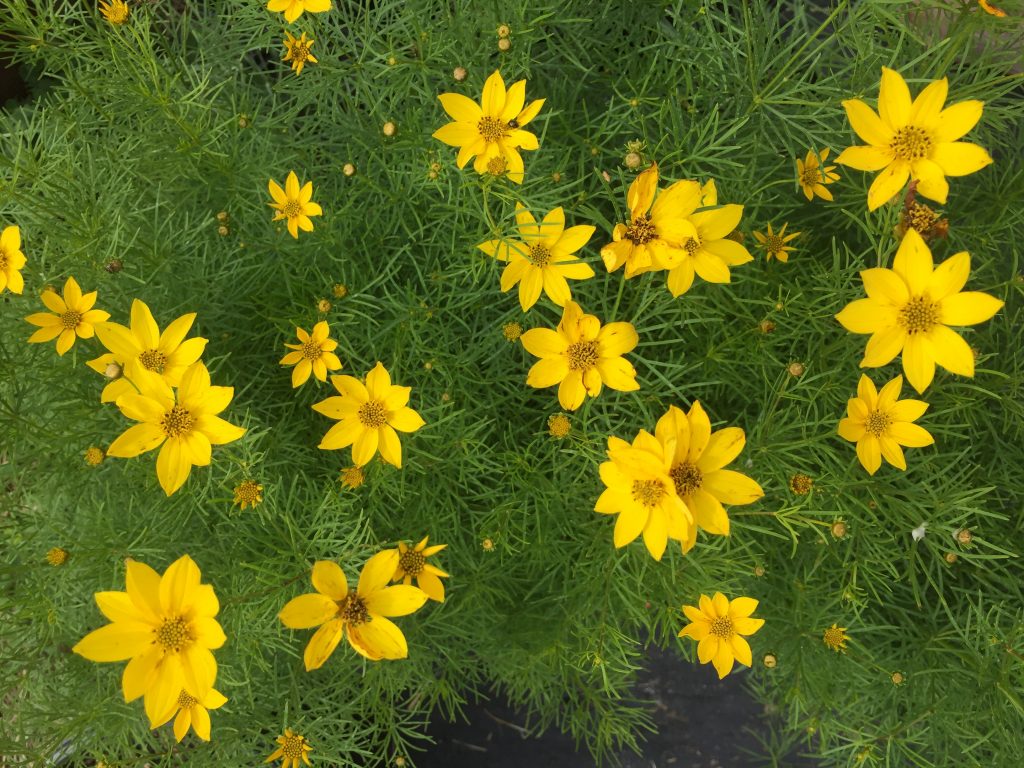
Tickseed Coreopsis (Coreopsis ‘Nana’)

Plant Introduction
Tickseed Coreopsis, also known as Coreopsis ‘Nana’, is a delightful perennial plant that adds a splash of sunshine to any garden. Here are some interesting facts about it:
- Appearance: Tickseed Coreopsis, also known as Coreopsis ‘Nana’, is a compact, bushy perennial that typically grows to about 6-12 inches tall. It has finely divided, thread-like leaves that give it a delicate, airy appearance.
- Flowers: The plant produces bright yellow, daisy-like flowers with a central disk that can sometimes have a reddish tint. These cheerful blooms appear from late spring to early summer and can continue sporadically throughout the growing season.
- Growth Conditions: Tickseed Coreopsis prefers full sun but can tolerate partial shade. It thrives in well-drained soil and can adapt to a variety of soil types, including sandy and rocky soils. While it is drought-tolerant once established, regular watering helps maintain its best appearance.
- Uses: This plant is ideal for edging garden beds and borders due to its compact size, and it is perfect for rock gardens where its bright flowers can contrast beautifully with stones. It attracts butterflies and other pollinators, making it a great addition to wildlife-friendly gardens, and it can also be grown in containers for patios and balconies.
- Maintenance: For maintenance, deadhead spent flowers to encourage continuous blooming, and divide clumps every few years to maintain vigor and prevent overcrowding. Generally, it is pest-free and disease-resistant, though it can occasionally be affected by powdery mildew.
Specifications
- Plant Habit: Herb/Forb
- Life Cycle: Perennial
- Sun Requirements: Full Sun to Partial Shade
- Water Preferences:
- Mesic to Dry
- Cold Hardiness:
- Zones 4a to 9a
- Plant Height:
- 8-12 inches
- Plant Spread:
- 8-12 inches
- Leaves:
- Unusual foliage color, can be evergreen, semi-evergreen, or deciduous depending on the growing zone
- Fruit:
- Edible to birds
- Flowers:
- Showy
- Flower Color:
- Yellow
- Bloom Size:
- 1″-2″
- Flower Time:
- Spring, Late spring or early summer, Summer, Late summer or early fall, Fall
- Uses:
- Cut Flower, Will Naturalize
- Wildlife Attractant:
- Bees, Birds, Butterflies
- Resistances:
- Deer Resistant, Humidity tolerant, Drought tolerant
- Propagation (Seeds):
- Sow in situ, Can handle transplanting, Germinates without pre-treatment, Viability 3 years stored in fridge, Sow outside in late fall or in spring
- Propagation (Other methods):
- Division, Stolons and runners
- Pollinators:
- Bees
- Containers:
- Suitable in 3 gallon or larger, Needs excellent drainage in pots
The Tale of Tickseed Coreopsis ‘Nana’
Once upon a time, in a sunny corner of a vibrant garden, there lived a charming little plant named Tickseed Coreopsis ‘Nana’. Known for its cheerful disposition, ‘Nana’ was a dwarf variety of the Coreopsis family, often called Lobed Tickseed or Ear-Leaved Tickseed due to its unique leaf shape that resembled tiny mouse ears.
‘Nana’ was a compact perennial, forming a dense, bushy mat of deep green foliage. Despite its small stature, growing only about 6 to 9 inches tall, ‘Nana’ had a big personality. Every spring, it would burst into a profusion of brilliant golden-yellow flowers, each about 2 inches across. These flowers stood proudly above the foliage, catching the sunlight and attracting butterflies from near and far.
The garden where ‘Nana’ lived was a bustling place, filled with plants of all shapes and sizes. But ‘Nana’ had a special role. Its low-growing habit made it perfect for the front of borders and edging pathways, creating a bright, welcoming edge to the garden beds. It also helped to fill in around taller plants, reducing the need for mulching and keeping the soil cool and moist.
‘Nana’ was not just a pretty face; it was also quite hardy. It thrived in full sun and well-drained soil, tolerating the summer heat and humidity with ease. While it preferred regular watering, it could handle some dry spells, though not as well as some of its more drought-tolerant cousins. Gardeners loved ‘Nana’ because it was easy to grow and maintain. Regular deadheading of spent flowers encouraged more blooms, and a midsummer shearing helped keep the plant tidy and promoted a fall rebloom.
One of ‘Nana’s’ favorite times of the year was spring, when it would put on its best show. The garden would come alive with the buzzing of bees and the fluttering of butterflies, all drawn to ‘Nana’s’ bright yellow flowers. Even the deer, who often nibbled on other plants, left ‘Nana’ alone, allowing it to flourish undisturbed.
As the seasons changed, ‘Nana’ continued to spread slowly by underground runners, forming an attractive mat that could reach up to 2 feet wide. This made it a wonderful groundcover, adding a splash of color and texture to the garden year-round.
‘Nana’ was a beloved member of the garden community, admired for its beauty, resilience, and the joy it brought to all who visited. And so, in its sunny corner of the garden, ‘Nana’ continued to bloom and spread, a testament to the wonders of nature and the simple pleasures of a well-tended garden.
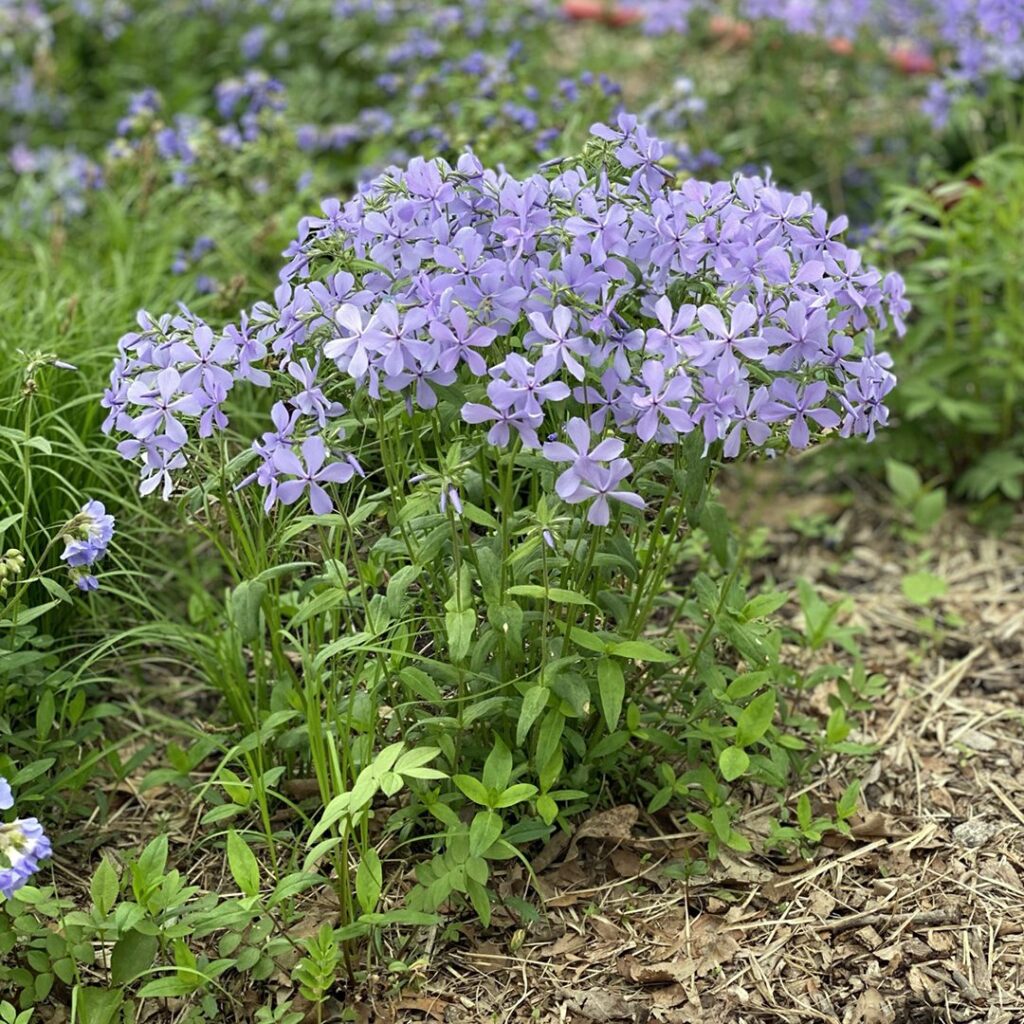
Woodland Phlox (Phlox Divaricata)

Plant Introduction
Woodland Phlox, or Phlox divaricata, is a charming perennial native to eastern North America.
Introduction: This plant is perfect for adding a touch of natural beauty to shaded garden areas.
Appearance: Woodland Phlox features clusters of slightly fragrant flowers in shades of lilac, rose, or blue. The flowers are delicate and star-shaped, adding a soft touch to any garden.
Flowers: Blooming in mid to late spring, the flowers attract butterflies and hummingbirds, bringing life and movement to your garden.
Growth Conditions: Woodland Phlox thrives in dappled shade and moist, well-drained soils. It is well-suited for woodland gardens and naturalized areas.
Uses: This plant is perfect for adding color to shaded areas and can be used in borders, rock gardens, or as ground cover.
Maintenance: Woodland Phlox requires minimal maintenance. Regular watering and occasional deadheading of spent flowers will keep the plant looking its best.
Specifications
- Plant Habit:
Herb/Forb - Life Cycle:
Perennial - Sun Requirements:
Partial or Dappled Shade
Partial Shade to Full Shade - Water Preferences:
Mesic - Soil pH Preferences:
Moderately acid (5.6 – 6.0)
Slightly acid (6.1 – 6.5)
Neutral (6.6 – 7.3) - Minimum Cold Hardiness:
Zone 3 -40 °C (-40 °F) to -37.2 °C (-35) - Maximum Recommended Zone:
Zone 9b - Plant Height:
12 – 18 inches - Plant Spread:
6 – 12 inches - Flowers:
Showy
Fragrant - Flower Color:
Blue - Bloom Size:
Under 1″ - Flower Time:
Spring
Late spring or early summer - Uses:
Will Naturalize - Wildlife Attractant:
Bees
Butterflies
The Enchanted Tale of Woodland Phlox
Hello there! I’m Woodland Phlox, but you can call me Phlox for short. I live in a magical woodland garden, where the sunlight filters through the leaves like golden fairy dust. My home is a serene and enchanting place, filled with the songs of birds and the gentle hum of insects.
I’m a petite plant, standing only 9 to 12 inches tall, but don’t let my size fool you—I have a big heart! My semi-evergreen foliage forms a lush, green carpet that as the seasons change, I continue to spread, creating a beautiful, fragrant carpet that delights all who visit the garden. My resilience and beauty make me a beloved member of the woodland community, a testament to the wonders of nature and the joy of gardening.
One of my favorite times of the year is spring, when I put on my best show. The garden comes alive with the buzzing of bees and the fluttering of butterflies, all drawn to my bright, colorful flowers. Even the deer, who often nibble on other plants, leave me alone, allowing me to flourish undisturbed.
I love making new friends in the garden. Gardeners adore me for my beauty and resilience. I’m an excellent choice for beds and borders, rock gardens, and naturalized areas. My ability to form large colonies over time makes me a wonderful groundcover, adding a carpet of color and texture to the garden. Plus, I’m deer-resistant and attract butterflies and hummingbirds, bringing life and movement to the garden.
Maintaining me is a joy for gardeners. Regular watering keeps the soil evenly moist, and an application of compost each spring mimics the natural conditions of the forest floor. Cutting back my stems after flowering helps combat powdery mildew and encourages healthy growth. Propagation is simple, with options to divide me in fall or spring, or take basal cuttings in spring.
And so, in my magical woodland garden, I continue to bloom and spread, bringing joy and enchantment to all who encounter me.
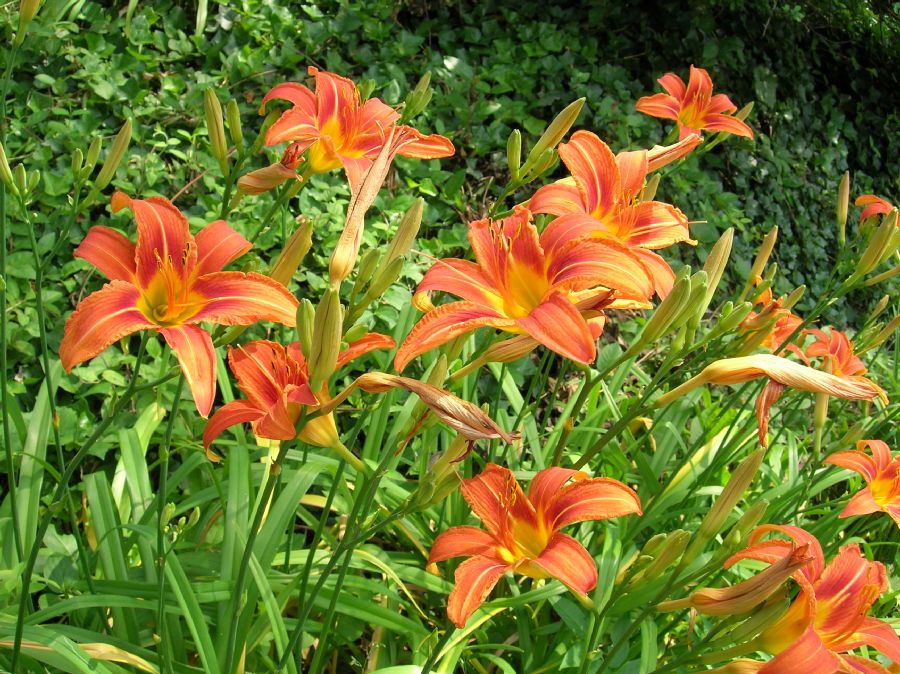
Orange Lily (Hemerocallis Fulva)

Plant Introduction
The Orange Lily, also known as Hemerocallis fulva, is a striking perennial that adds vibrant color to any garden.
Appearance: Hemerocallis fulva is an herbaceous perennial that grows from tuberous roots, with stems reaching 40-150 centimeters (16-59 inches) tall. The leaves are linear and can grow up to 1.5 meters (5 feet) long, giving the plant a lush, grass-like appearance.
Flowers: The flowers of the Orange Lily are 5-12 centimeters (2-5 inches) across and are a vivid orange-red with a pale central line on each tepal. These trumpet-shaped blooms appear from early summer through late autumn, with each flower lasting only one day, hence the name “daylily.”
Growth Conditions: Hemerocallis fulva thrives in full sun to partial shade and prefers well-drained soil. It is tolerant of a wide range of soil conditions, including poor soils, and can adapt to both moist and dry environments. This plant is known for its hardiness and can survive in USDA zones 3-9.
Uses: The Orange Lily is ideal for perennial borders, ground covers on slopes, and mass plantings. It is also well-suited for butterfly and pollinator gardens, as it attracts butterflies and hummingbirds. Additionally, it can help control erosion when planted on slopes.
Maintenance: This plant is low-maintenance and easy to care for. It requires occasional pruning and division to keep it tidy and vigorous. Watering is necessary during prolonged dry spells, but it is generally drought-tolerant once established. The Orange Lily is also resistant to most pests and diseases, though it can be toxic to cats.
Specifications
- Foliage type:
Dormant - Rust Resistance:
Shows Susceptibility - Bloom Traits:
Eye or Band - Bloom Form:
Single - Color description:
Orange with red eye, gold throat - General Plant Information:
- Plant Habit:
Herb/Forb - Life cycle:
Perennial - Sun Requirements:
Full Sun
Full Sun to Partial Shade - Water Preferences:
Mesic
Dry Mesic
Dry - Minimum cold hardiness:
Zone 3 -40 °C (-40 °F) to -37.2 °C (-35) - Maximum recommended zone:
Zone 10b - Plant Height:
24-36 inches - Plant Spread:
15-18 inches - Leaves:
Semi-evergreen - Flowers:
Showy
Other: Edible - Flower Color:
Orange - Bloom Size:
3″-4″ - Flower Time:
Late spring or early summer
Summer - Uses:
Erosion control
Groundcover
Vegetable
Will Naturalize
Suitable for forage - Edible Parts:
Stem
Roots
Flowers - Eating Methods:
Raw
Cooked - Wildlife Attractant:
Butterflies - Resistances:
Rabbit Resistant
Pollution
Drought tolerant - Propagation (Seeds):
Will not come true from seed
Other info: Plant is Non-fertile - Propagation (Other methods):
Division - Pollinators:
Moths and Butterflies - Miscellaneous:
Tolerates poor soil - Ploidy:
Diploid
The Adventures of Orange Lily
Greetings! I’m Orange Lily, but you can call me Lily. I live in a vibrant garden where the sun kisses my petals every morning, and the gentle breeze whispers secrets of the forest. My scientific name is Hemerocallis fulva, but around here, I’m known as the Daylily because each of my blooms lasts just one glorious day.
I stand tall and proud, reaching up to 2.5 feet in height. My bright orange flowers, with their tawny amber hues, are like little suns themselves, lighting up the garden. Each flower is about 5 inches in diameter, and my scapes can rise up to 6 feet tall, towering above my sword-like leaves. It’s quite a sight to behold!
I come from a long line of adventurers, originally hailing from Asia, including China and Japan. Over time, I’ve traveled far and wide, naturalizing in Europe and much of North America. You can often find me along roadsides, in ditches, and in older gardens where I’ve made myself quite at home.
I’m a hardy and low-maintenance plant, thriving in full sun to partial shade and in average, well-drained soil. I can even tolerate poor soil, which makes me quite versatile. My clumps spread rapidly by rhizomes, and I can be divided for propagation whenever needed. This makes me a favorite among gardeners who love my easy-going nature.
One of my favorite things about living in the garden is the company I keep. Butterflies and hummingbirds are frequent visitors, drawn to my showy flowers. I also play a crucial role in preventing soil erosion when planted on slopes, and I add a lovely texture to the garden even when I’m not in bloom.
But there’s more to me than just my good looks. In Asia, my roots have been used medicinally and for food. My buds and flowers are edible, with a sweet-spicy or peppery flavor, making them a colorful addition to salads. I’m also known for my resilience, as I can naturalize easily and crowd out weeds, keeping the garden neat and tidy.
As the seasons change, I continue to spread and bring joy to all who visit the garden. My bright, cheerful blooms are a testament to the beauty and resilience of nature. So, next time you see me, remember that I’m not just a pretty face—I’m a hardworking and adventurous plant with a rich history and a bright future.
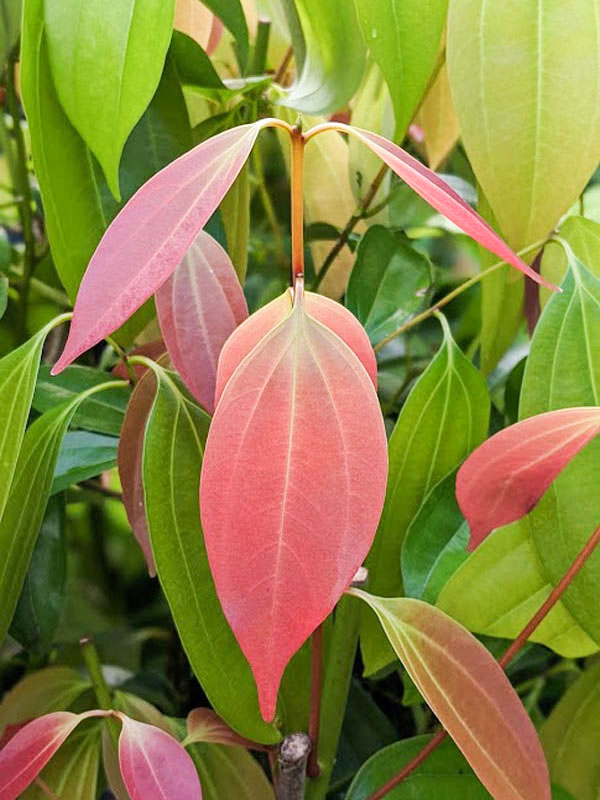
Ceylon Cinnamon (Cinnamomum Zeylanicum)

Plant Introduction
The Ceylon Cinnamon Tree, also known as Cinnamomum zeylanicum, is a small evergreen tree that is highly valued for its aromatic bark, which is used to produce true cinnamon.
Appearance: Cinnamomum zeylanicum typically grows to a height of 10-15 meters (30-50 feet). The leaves are ovate-oblong in shape and measure 7-18 centimeters (3-7 inches) long. The tree has a lush, green canopy with young leaves that emerge with a pinkish hue before maturing to a deep green.
Flowers: The tree produces small, greenish flowers arranged in panicles. These flowers have a distinct, pleasant aroma. Following the flowering period, the tree bears small, purple drupes that contain a single seed.
Growth Conditions: Ceylon Cinnamon thrives in full sun to partial shade and prefers well-drained, acidic soil. It is native to Sri Lanka and is best suited for tropical climates with high humidity. The tree can be grown in USDA zones 9-11 and can tolerate temperatures down to 32 degrees Fahrenheit (0 degrees Celsius). It can also be grown in containers and pruned to maintain a smaller size.
Uses: The primary use of Ceylon Cinnamon is for its bark, which is harvested and processed to produce the spice cinnamon. This spice is highly prized for its sweet, delicate flavor and is used in a variety of culinary applications. Additionally, the tree can be used ornamentally in gardens and landscapes, and its aromatic leaves and bark can be used in potpourri and other fragrant products.
Maintenance: Ceylon Cinnamon trees require moderate fertilization and consistent watering, allowing the soil to dry out between waterings to prevent root diseases. Pruning is necessary to maintain the desired shape and size, especially when grown in containers. The tree is generally pest-resistant but should be monitored for any signs of disease or pest infestation.
Specifications
- Plant Habit:
Tree - Life cycle:
Perennial - Sun Requirements:
Full Sun to Partial Shade - Water Preferences:
Mesic - Soil pH Preferences:
Neutral (6.6 – 7.3) - Minimum cold hardiness:
Zone 9b -3.9 °C (25 °F) to -1.1 °C (30 °F) - Maximum recommended zone:
Zone 11 - Plant Height:
20 – 40 feet - Leaves:
Fragrant
Other: Juvenile leaves are a bronze shade; mature leaves are deep green with a spicy fragrance. - Fruit:
Showy
Other: Purple drupes - Fruiting Time:
Late winter or early spring - Flowers:
Showy - Flower Color:
White - Bloom Size:
Under 1″ - Flower Time:
Spring
Late spring or early summer
Summer - Underground structures:
Taproot - Edible Parts:
Bark - Eating Methods:
Culinary Herb/Spice - Resistances:
Humidity tolerant - Pollinators:
Self - Containers:
Suitable in 3 gallon or larger
Needs excellent drainage in pots
The Tale of The Chronicles of Ceylon Cinnamon Tree
Hello, dear friend! I’m the Ceylon Cinnamon Tree, but you can call me Cinna. I hail from the lush, tropical island of Sri Lanka, formerly known as Ceylon. My scientific name is Cinnamomum zeylanicum, and I’m often referred to as True Cinnamon.
I stand tall and proud, reaching heights of 30 to 50 feet in my natural habitat. My evergreen leaves are a lovely shade of green, and my small, star-shaped flowers bloom in clusters, adding a touch of elegance to my appearance. But my true claim to fame is my bark, which is harvested to produce the sweet, aromatic spice known as cinnamon.
My journey begins in the rich, fertile soils of Sri Lanka, where I thrive in the warm, humid climate. My bark is carefully harvested by skilled workers who peel it away in long strips. These strips are then dried and rolled into the familiar quills you see in spice jars. The process is an art form, passed down through generations, and it takes great care and precision to produce the finest cinnamon.
In the garden, I’m quite the versatile tree. I can be grown in full sun to partial shade, and I prefer well-drained, acidic soil. I thrive in USDA zones 9-11, where the temperatures are warm and the humidity is high. Gardeners love me for my beauty and the delightful aroma I bring to their gardens.
But there’s more to me than just my good looks and sweet scent. My bark has been used for centuries in traditional medicine, believed to have numerous health benefits. It’s also a popular ingredient in cooking, adding a warm, spicy flavor to both sweet and savory dishes. From cinnamon rolls to curries, my bark is a beloved addition to kitchens around the world.
As I grow, I continue to spread my branches and share my gifts with the world. My resilience and beauty make me a cherished member of the plant kingdom, a testament to the wonders of nature and the joy of gardening.
So, next time you sprinkle a bit of cinnamon on your oatmeal or sip a warm cup of cinnamon tea, remember me, Cinna, the Ceylon Cinnamon Tree, and the journey my bark has taken to bring a touch of sweetness to your life.
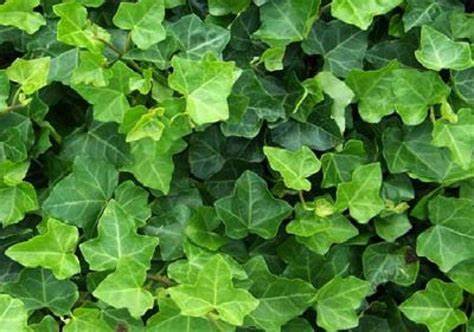
English Ivy (Hedera Hibernica)

Plant Introduction
The English Ivy, also known as Hedera hibernica, is a versatile and hardy evergreen plant that can add a touch of elegance to any landscape.
Appearance: Hedera hibernica is an evergreen climbing plant that can grow to 20-30 meters (65-98 feet) high where suitable surfaces, such as trees, cliffs, and walls, are available. It also grows as ground cover where there are no vertical surfaces. The leaves are glossy dark green with light veins, and they can be either lobed or unlobed depending on the plant’s age.
Flowers: The plant produces small, greenish-white flowers arranged in umbrella-like clusters. These flowers appear in the fall and are followed by blue-black berries. The flowers are an important source of nectar for many insects, including bees.
Growth Conditions: English Ivy thrives in a variety of light conditions, from full sun to deep shade. It prefers well-drained, nutrient-rich soil but can adapt to a range of soil types. It is quite hardy and can tolerate both dry and moist environments, making it suitable for USDA zones 5-9.
Uses: This plant is commonly used as ground cover, especially in shaded areas where grass struggles to grow. It is also popular for covering walls, fences, and trellises, providing a lush, green backdrop. Additionally, English Ivy can help control erosion on slopes and is often used in landscaping for its aesthetic appeal.
Maintenance: English Ivy is relatively low-maintenance but can become invasive if not kept in check. Regular pruning is necessary to control its growth and prevent it from overtaking other plants. It is generally pest-resistant but can occasionally suffer from issues like leaf spot and root rot. The plant’s leaves and berries are toxic if ingested, and its sap can cause skin irritation in sensitive individuals.
Specifications
- Plant Habit:
Vine - Life cycle:
Perennial - Sun Requirements:
Full Sun
Full Sun to Partial Shade
Partial or Dappled Shade
Partial Shade to Full Shade - Water Preferences:
Mesic - Soil pH Preferences:
Slightly acid (6.1 – 6.5)
Neutral (6.6 – 7.3)
Slightly alkaline (7.4 – 7.8) - Minimum cold hardiness:
Zone 5a -28.9 °C (-20 °F) to -26.1 °C (-15 °F) - Maximum recommended zone:
Zone 11 - Plant Height:
Climbs and trails to 35 feet - Leaves:
Evergreen - Fruit:
Showy
Edible to birds
Other: Dark bluish-black berries containing small seeds. - Fruiting Time:
Late winter or early spring
Spring - Flowers:
Inconspicuous - Flower Color:
Other: Greenish-yellow - Bloom Size:
Under 1″ - Flower Time:
Late summer or early fall - Underground structures:
Taproot - Suitable Locations:
Espalier - Uses:
Groundcover
Will Naturalize - Wildlife Attractant:
Birds - Resistances:
Humidity tolerant - Containers:
Needs excellent drainage in pots
The Tale of The Adventures of English Ivy
Greetings, dear friend! I’m English Ivy, but you can call me Ivy. My full name is Hedera hibernica, and I’m also known as Atlantic Ivy or Irish Ivy. I hail from the beautiful Atlantic coast of Europe, where I thrive in the cool, moist forests and rocky cliffs.
I am an evergreen climbing plant, and I can grow up to 30 meters high if I find the right surfaces to cling to, like trees, cliffs, or walls. My aerial rootlets help me climb and spread, creating a lush, green tapestry wherever I go. My leaves are glossy dark green with light ribs, and they come in various shapes—some are ovoid, while others have five triangular lobes. In the autumn, I produce small, star-shaped flowers that are a vital source of nectar for many insects, including the ivy bee.
Life in the garden is always an adventure for me. I love to explore and climb, covering trees, walls, and fences with my dense foliage. My ability to grow in both full sun and deep shade makes me quite versatile. I prefer well-drained, nutrient-rich soil, but I’m not too picky—I can adapt to various soil types, including clay, loam, and sand.
One of my favorite things about being Ivy is the company I keep. Birds love to nest in my dense foliage, and my flowers attract a variety of pollinators. Even in the cooler months, my evergreen leaves provide shelter and food for wildlife. However, I must admit, I can be a bit of a troublemaker. If left unchecked, I can quickly take over a garden, climbing over everything in my path. Gardeners need to keep an eye on me and trim me back regularly to prevent me from becoming too invasive.
Despite my adventurous nature, I have a softer side too. My leaves and berries are slightly poisonous, so I must be handled with care. But don’t worry, I’m not dangerous—just a bit mischievous. In some parts of the world, I’m considered an invasive species, but with proper care and management, I can be a beautiful and beneficial addition to any garden.
As the seasons change, I continue to grow and spread, bringing a touch of wild beauty to the garden. My resilience and adaptability make me a cherished member of the plant kingdom, a testament to the wonders of nature and the joy of gardening.
So, next time you see me climbing a tree or covering a wall, remember that I’m not just a pretty face—I’m a hardworking and adventurous plant with a rich history and a bright future.
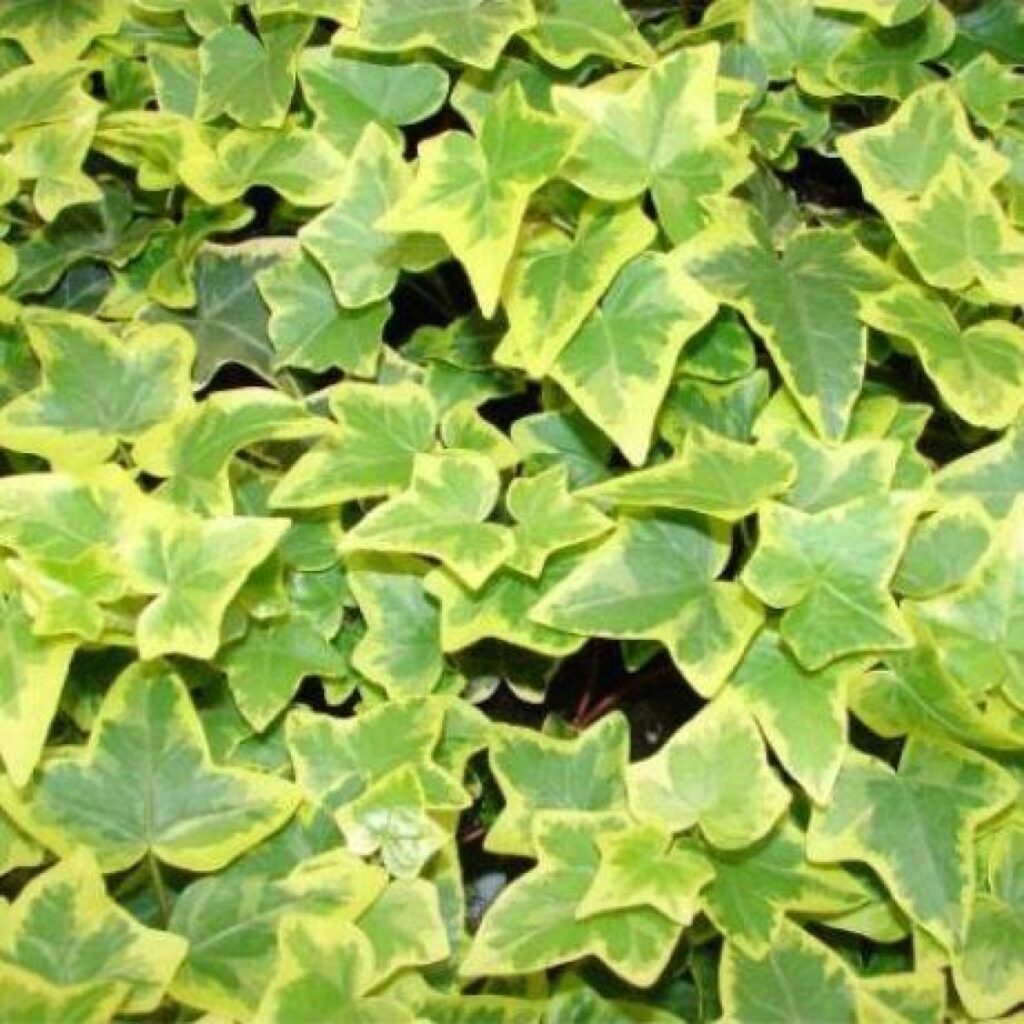
Variegated Ivy (Hedera Helix ‘Goldchild’)

Plant Introduction
Variegated Ivy, also known as Hedera helix ‘Goldchild’, is a beautiful and versatile evergreen climber that adds a touch of elegance to any garden or indoor space.
Appearance: Hedera helix ‘Goldchild’ features medium-sized, lustrous leaves that are three to five-lobed. The leaves are gray-green with broad, bright gold margins. In hot weather, the variegation can fade to a butter yellow, but the color remains prominent even in the shade.
Flowers: This ivy produces small, greenish-white flowers arranged in umbrella-like clusters. These flowers appear in the fall and are followed by blue-black berries. The flowers are an important source of nectar for many insects, including bees.
Growth Conditions: Variegated Ivy thrives in a variety of light conditions, from full sun to full shade. It prefers fertile, medium moisture, well-drained soils but is not fussy about soil types and tolerates a wide range of conditions. It has some drought tolerance but produces its best foliage color in evenly moist soils. This plant is hardy in USDA zones 5-9.
Uses: This versatile ivy can be used as a houseplant, ground cover, or for covering low walls. It is also ideal for container gardening and can be used as a spiller in mixed plantings. Its attractive foliage makes it a popular choice for ornamental purposes, and it can help control erosion when planted on slopes.
Maintenance: Variegated Ivy is relatively low-maintenance. It requires occasional pruning to control its growth and maintain its shape. Propagation is typically done by semi-hardwood cuttings in summer. While generally pest-resistant, it can be susceptible to leaf spots, aphids, scale insects, and vine weevils. The plant’s leaves and berries are toxic if ingested, so care should be taken if pets or children are around.
Specifications
- Plant Habit:
Shrub
Vine - Life cycle:
Perennial - Sun Requirements:
Full Sun to Partial Shade
Partial or Dappled Shade
Partial Shade to Full Shade
Full Shade - Water Preferences:
Wet
Wet Mesic
Mesic - Soil pH Preferences:
Moderately acid (5.6 – 6.0)
Slightly acid (6.1 – 6.5)
Neutral (6.6 – 7.3)
Slightly alkaline (7.4 – 7.8) - Leaves:
Unusual foliage color
Evergreen
Broadleaf - Fruit:
Showy
Edible to birds - Fruiting Time:
Late fall or early winter
Winter - Flowers:
Fragrant
Other: Only on adult form - Flower Time:
Late summer or early fall
Fall
Late fall or early winter - Uses:
Provides winter interest
Groundcover
Cut Flower
Will Naturalize - Wildlife Attractant:
Bees
Birds
Butterflies - Resistances:
Drought tolerant - Toxicity:
Leaves are poisonous
Fruit is poisonous - Propagation (Other methods):
Cuttings: Stem
Layering - Pollinators:
Wasps
Moths and Butterflies
Flies
Bees - Miscellaneous:
Tolerates poor soil
The Tale of The Adventures of Variegated Ivy
Hello there! I’m Variegated Ivy, but you can call me Goldie. My full name is Hedera helix ‘Golden’, and I’m known for my stunning, golden-edged leaves that bring a touch of sunshine to any garden.
I love to climb and explore, reaching heights of up to 3 feet if given the right support. My leaves are a beautiful mix of green and gold, with the golden margins becoming more vibrant in cooler weather and brighter light. In warmer months, my golden edges soften to a buttery yellow, but I still shine brightly in the garden.
I thrive in a variety of conditions, from full sun to full shade, and I’m quite adaptable when it comes to soil types. Whether it’s clay, loam, or sandy soil, I can make myself at home. My favorite spots are those with well-drained, fertile soil, where I can spread my roots and grow happily.
One of my favorite things about being Goldie is the company I keep. Birds love to nest in my dense foliage, and my flowers attract a variety of pollinators. Even in the cooler months, my evergreen leaves provide shelter and food for wildlife. However, I must admit, I can be a bit of a troublemaker. If left unchecked, I can quickly take over a garden, climbing over everything in my path. Gardeners need to keep an eye on me and trim me back regularly to prevent me from becoming too invasive.
Despite my adventurous nature, I have a softer side too. My leaves and berries are slightly poisonous, so I must be handled with care. But don’t worry, I’m not dangerous—just a bit mischievous. In some parts of the world, I’m considered an invasive species, but with proper care and management, I can be a beautiful and beneficial addition to any garden.
As the seasons change, I continue to grow and spread, bringing a touch of wild beauty to the garden. My resilience and adaptability make me a cherished member of the plant kingdom, a testament to the wonders of nature and the joy of gardening.
So, next time you see me climbing a tree or covering a wall, remember that I’m not just a pretty face—I’m a hardworking and adventurous plant with a rich history and a bright future.

Shamrock Ivy (Hedera Helix ‘Shamrock’)

Plant Introduction
Shamrock Ivy, also known as Hedera helix ‘Shamrock’, is a charming evergreen climber that can enhance both indoor and outdoor spaces with its lush foliage.
Appearance: Hedera helix ‘Shamrock’ features small, dark green leaves with a large central lobe and two smaller side lobes, giving it a distinctive clover-like appearance. The leaves are glossy and can create a dense, attractive cover.
Flowers: This ivy produces small, greenish-white flowers arranged in umbrella-like clusters. These flowers appear in the fall and are followed by blue-black berries. The flowers are an important source of nectar for many insects, including bees.
Growth Conditions: Shamrock Ivy thrives in a variety of light conditions, from full sun to full shade. It prefers fertile, humus-rich, well-drained soil and can adapt to a range of soil types. It is hardy in USDA zones 5-9 and can tolerate both dry and moist environments.
Uses: This versatile ivy can be used as a houseplant, ground cover, or for covering walls and fences. It is also ideal for container gardening and can be used as a spiller in mixed plantings. Its attractive foliage makes it a popular choice for ornamental purposes, and it can help control erosion when planted on slopes.
Maintenance: Shamrock Ivy is relatively low-maintenance. It requires occasional pruning to control its growth and maintain its shape. Propagation is typically done by softwood cuttings or layering. While generally pest-resistant, it can be susceptible to leaf spots, aphids, and scale insects. The plant’s leaves and berries are toxic if ingested, so care should be taken if pets or children are around.
Specifications
- Plant Habit:
Shrub
Vine - Life cycle:
Perennial - Sun Requirements:
Full Sun to Partial Shade
Partial or Dappled Shade
Partial Shade to Full Shade
Full Shade - Water Preferences:
Wet
Wet Mesic
Mesic - Soil pH Preferences:
Moderately acid (5.6 – 6.0)
Slightly acid (6.1 – 6.5)
Neutral (6.6 – 7.3)
Slightly alkaline (7.4 – 7.8) - Leaves:
Unusual foliage color
Evergreen
Broadleaf - Fruit:
Showy
Edible to birds - Fruiting Time:
Late fall or early winter
Winter - Flowers:
Fragrant
Other: Only on adult form - Flower Time:
Late summer or early fall
Fall
Late fall or early winter - Uses:
Provides winter interest
Groundcover
Cut Flower
Will Naturalize - Wildlife Attractant:
Bees
Birds
Butterflies - Resistances:
Drought tolerant - Toxicity:
Leaves are poisonous
Fruit is poisonous - Propagation (Other methods):
Cuttings: Stem
Layering - Pollinators:
Wasps
Moths and Butterflies
Flies
Bees - Miscellaneous:
Tolerates poor soil - Patent/Plant Breeders’ Rights:
USPP 1,290 (Expired) - Parentage:
Sport of: Maple Queen
The Tale of The Adventures of Shamrock Ivy
Hello there! I’m Shamrock Ivy, but you can call me Shammy. My full name is Hedera helix ‘Shamrock’, and I’m known for my charming, clover-like leaves that bring a touch of luck and beauty to any garden.
I was discovered in the early 1950s by Louis Hahn & Son Nursery in Pittsburgh, Pennsylvania. My journey began when I was introduced to Europe in 1954, where I quickly became known as the Clover Leaf Ivy. My name, Shamrock, was chosen to honor the Shamrock Hotel in Houston, Texas, where I made my grand debut to the florist trade in 1957.
I am an evergreen climber, and I can grow up to 1 meter tall. My small, dark green leaves consist of a large central lobe and two smaller side lobes, resembling a shamrock. This unique shape makes me a favorite among gardeners and plant enthusiasts alike. I thrive in a variety of conditions, from full sun to full shade, and I’m quite adaptable when it comes to soil types. Whether it’s chalk, clay, loam, or sand, I can make myself at home.
One of my favorite things about being Shammy is the company I keep. Birds love to nest in my dense foliage, and my flowers attract a variety of pollinators. Even in the cooler months, my evergreen leaves provide shelter and food for wildlife. However, I must admit, I can be a bit of a troublemaker. If left unchecked, I can quickly take over a garden, climbing over everything in my path. Gardeners need to keep an eye on me and trim me back regularly to prevent me from becoming too invasive.
Despite my adventurous nature, I have a softer side too. My leaves and berries are slightly poisonous, so I must be handled with care. But don’t worry, I’m not dangerous—just a bit mischievous. In some parts of the world, I’m considered an invasive species, but with proper care and management, I can be a beautiful and beneficial addition to any garden.
As the seasons change, I continue to grow and spread, bringing a touch of wild beauty to the garden. My resilience and adaptability make me a cherished member of the plant kingdom, a testament to the wonders of nature and the joy of gardening.
So, next time you see me climbing a tree or covering a wall, remember that I’m not just a pretty face—I’m a hardworking and adventurous plant with a rich history and a bright future.
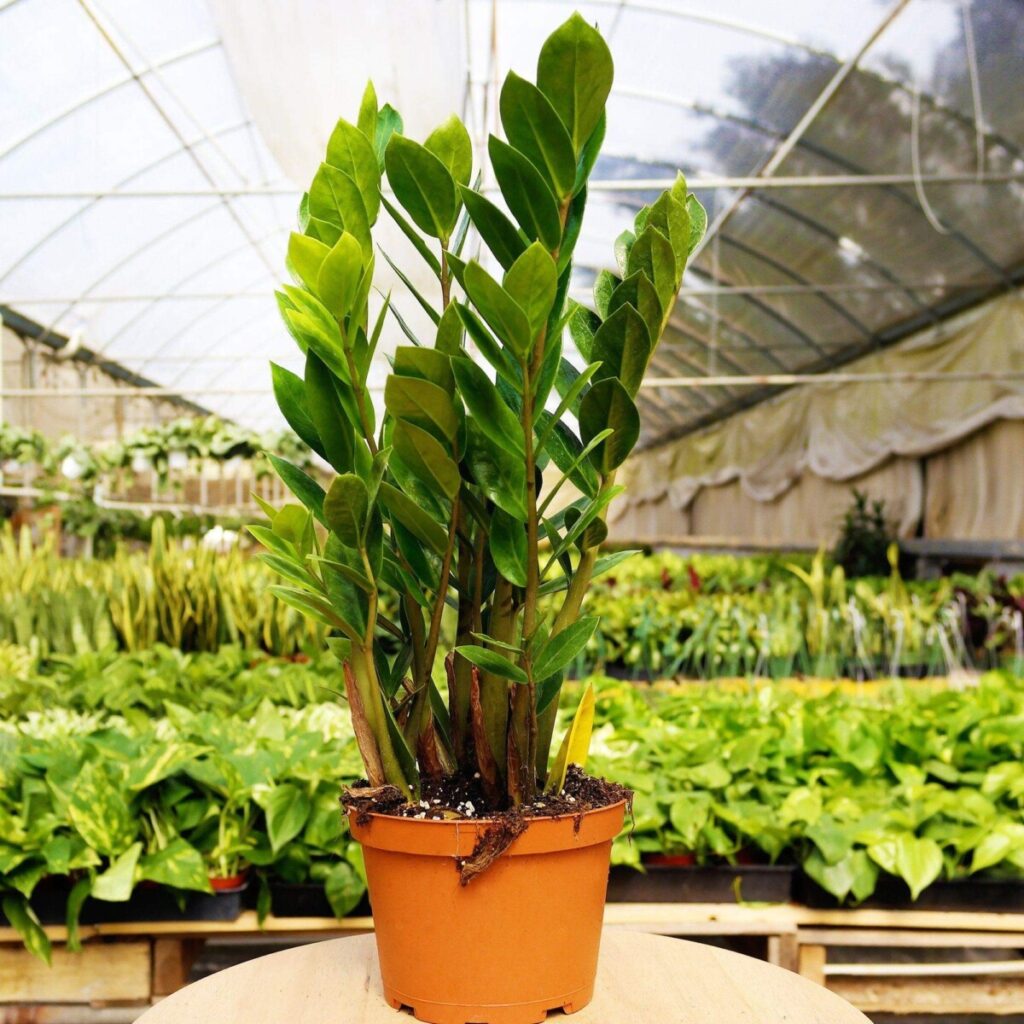
ZZ Plant (Zamioculcas Zamiifolia)

Plant Introduction
The ZZ Plant, also known as Zamioculcas zamiifolia, is a popular houseplant known for its striking appearance and low-maintenance care.
Appearance: Zamioculcas zamiifolia features glossy, dark green leaves that are smooth and waxy. The leaves grow in a herringbone pattern along thick, upright stems, giving the plant a unique and attractive look. It typically reaches a height of 2-4 feet.
Flowers: While the ZZ Plant can produce small, white to yellowish flowers on a spadix, it rarely blooms indoors. The flowers are not particularly showy and are often hidden among the foliage.
Growth Conditions: The ZZ Plant thrives in a variety of light conditions, from low light to bright, indirect light. It prefers well-draining soil and can tolerate periods of drought, making it an excellent choice for busy or forgetful plant owners. It is hardy in USDA zones 9-10 and prefers temperatures between 60-75°F (15-24°C).
Uses: This plant is ideal for indoor environments, including homes and offices, due to its ability to tolerate low light and infrequent watering. Its attractive foliage makes it a popular choice for decorative purposes, and it can also help improve indoor air quality by removing toxins.
Maintenance: The ZZ Plant is very low-maintenance. It requires minimal watering, allowing the soil to dry out completely between waterings. Overwatering can lead to root rot, so it’s better to err on the side of underwatering. The plant is generally pest-resistant and can be propagated by leaf cuttings or division. However, it is toxic if ingested, so care should be taken if pets or children are around.
Specifications
- Plant Habit:
Herb/Forb - Life cycle:
Perennial - Sun Requirements:
Full Sun to Partial Shade
Partial or Dappled Shade - Water Preferences:
Mesic
Dry Mesic - Soil pH Preferences:
Slightly acid (6.1 – 6.5) - Minimum cold hardiness:
Zone 9a -6.7 °C (20 °F) to -3.9 °C (25 °F) - Plant Height:
1 to 3 feet; depending on growing conditions, the plant may attain heights to 4 feet. - Plant Spread:
1 to 3 feet - Leaves:
Evergreen
Other: Shiny, leather-like leaves. Evergreen unless underwatered in which case plant can go dormant. - Fruiting Time:
Year Round
Other: Globose, white berries containing 1 to 2 seeds. - Flowers:
Inconspicuous
Other: Aroid spathe and spadix - Flower Color:
Yellow - Bloom Size:
Under 1″
1″-2″ - Flower Time:
Late summer or early fall
Year Round - Inflorescence Height:
1-2 inches - Underground structures:
Rhizome - Suitable Locations:
Houseplant - Resistances:
Powdery Mildew
Tolerates dry shade
Humidity tolerant
Drought tolerant - Toxicity:
Leaves are poisonous
Fruit is poisonous
Other: All parts of plant contain calcium oxalate crystals, an irritant to the mouth and esophagus. Toxic to cats and dogs. - Propagation (Other methods):
Cuttings: Stem
Cuttings: Tip
Cuttings: Leaf
Division - Pollinators:
Various insects - Containers:
Suitable in 1 gallon
Needs excellent drainage in pots
Prefers to be under-potted - Miscellaneous:
Tolerates poor soil
Goes Dormant - Awards and Recognitions:
RHS AGM
The Chronicles of ZZ Plant
Hello there! I’m the ZZ Plant, but you can call me ZeeZee. My full name is Zamioculcas zamiifolia, and I’m known for my striking, glossy green leaves and my ability to thrive in almost any condition.
I hail from the drought-prone regions of eastern and southern Africa, where I learned to be tough and resilient. My thick, fleshy stems and leaves store water, allowing me to survive long periods without a drink. This makes me a perfect houseplant for those who might forget to water me from time to time.
In the garden or indoors, I can grow up to 2 to 3 feet tall, with my shiny, dark green leaves creating a lush, tropical look. My leaves are pinnate, meaning they grow in pairs along my stem, giving me a full and bushy appearance. I don’t need much light to thrive; in fact, I prefer indirect light and can even tolerate low-light conditions, making me a versatile addition to any home or office.
One of my favorite things about being ZeeZee is my ability to purify the air. My leaves help filter out toxins like xylene, toluene, and benzene, making the air cleaner and healthier for everyone around me. However, I must warn you—I’m slightly toxic if ingested, so it’s best to keep me out of reach of pets and small children.
I’m quite low-maintenance, which is why I’m so popular. I only need to be watered when my soil is completely dry, and I can go for weeks without a drink. Overwatering is one of the few things that can harm me, so it’s best to err on the side of caution. I also don’t need much fertilizer—just a little diluted liquid houseplant fertilizer a few times during the growing season will keep me happy.
As I grow, I continue to spread my glossy leaves and bring a touch of the tropics to any space. My resilience and beauty make me a cherished member of the plant kingdom, a testament to the wonders of nature and the joy of gardening.
So, next time you see me gracing a windowsill or brightening up an office corner, remember that I’m not just a pretty face—I’m a hardworking and resilient plant with a rich history and a bright future.
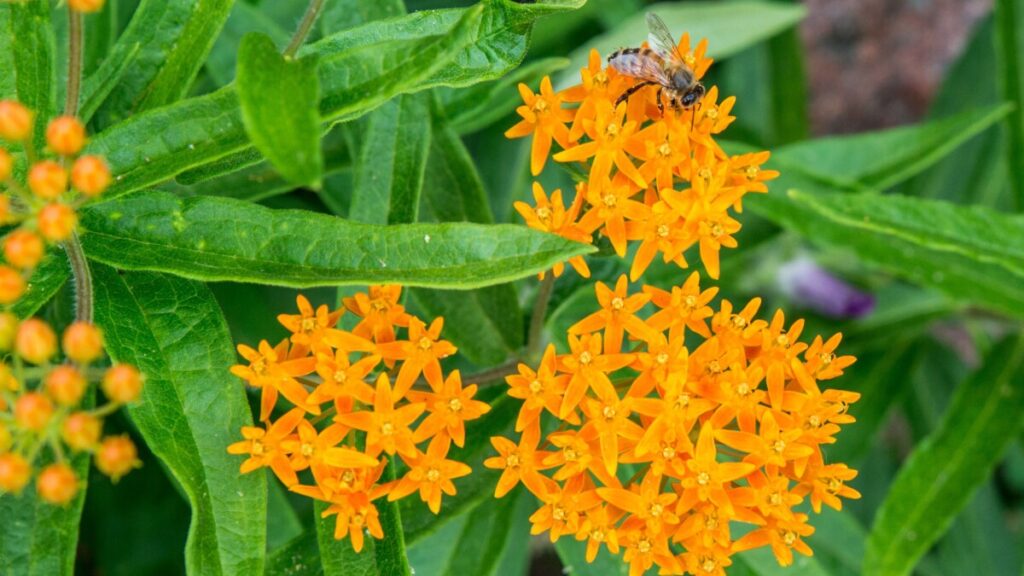
Butterfly Weed (Asclepias spp.)

Plant Introduction
Butterfly Weed, also known as Asclepias spp., is a vibrant perennial that is highly attractive to butterflies and other pollinators.
Appearance: Butterfly Weed is a clump-forming perennial that typically grows to about 1-2 feet tall. It has glossy green, lance-shaped leaves and produces clusters of bright orange to yellow flowers that are rich in nectar and pollen.
Flowers: The flowers of Butterfly Weed are small, star-shaped, and appear in dense clusters. They bloom from late spring to late summer, providing a long-lasting display of color. The flowers are followed by seed pods that release silky-tailed seeds to disperse on the wind.
Growth Conditions: Butterfly Weed thrives in full sun and well-drained soil. It can handle a wide range of temperatures, from freezing to high heat, and is drought-tolerant once established. This plant is hardy in USDA zones 3-9 and prefers dry to medium moisture levels.
Uses: This plant is ideal for butterfly gardens, wildflower meadows, and perennial borders. It attracts butterflies, especially monarchs, and other pollinators, making it a valuable addition to any wildlife-friendly garden. Butterfly Weed can also be used in cut flower arrangements.
Maintenance: Butterfly Weed is low-maintenance and easy to grow. It requires minimal watering once established and benefits from occasional deadheading to encourage more blooms. The plant can self-seed readily, so it may need to be controlled to prevent unwanted spreading. It is generally pest-resistant but can be mildly toxic if ingested.
Specifications
- Plant Habit:
Herb/Forb - Life cycle:
Perennial - Sun Requirements:
Full Sun
Full Sun to Partial Shade - Water Preferences:
Mesic
Dry Mesic
Dry - Minimum cold hardiness:
Zone 4a -34.4 °C (-30 °F) to -31.7 °C (-25 °F) - Maximum recommended zone:
Zone 9b - Plant Height:
24 – 48 inches - Plant Spread:
18 – 24 inches - Leaves:
Unusual foliage color - Flowers:
Showy - Flower Color:
Yellow - Bloom Size:
Under 1″ - Flower Time:
Late spring or early summer
Summer - Underground structures:
Taproot - Wildlife Attractant:
Bees
Butterflies - Resistances:
Deer Resistant
Rabbit Resistant - Toxicity:
Leaves are poisonous
Roots are poisonous - Propagation (Seeds):
Will not come true from seed - Propagation (Other methods):
Cuttings: Root - Pollinators:
Moths and Butterflies
Bees
Various insects - Containers:
Not suitable for containers
The Tale of The Adventures of Butterfly Weed
Hello there! I’m Butterfly Weed, but you can call me Butter. My full name is Asclepias spp., and I’m known for my vibrant, nectar-rich flowers that are a magnet for butterflies, especially the majestic monarchs.
I thrive in sunny meadows and gardens, where I can grow up to 1 to 3 feet tall. My flowers are usually a brilliant orange, but sometimes you might find me in shades of yellow or red. These blooms appear in clusters, creating a stunning display that lasts from June to September. My leaves are long and narrow, providing a perfect landing pad for visiting butterflies.
One of my favorite things about being Butter is the company I keep. Monarch butterflies rely on me as a host plant for their larvae. The caterpillars munch on my leaves, and in return, I get to be part of their incredible life cycle. Watching them transform from tiny eggs to beautiful butterflies is truly magical. Other butterflies, like the Queen and Soldier, also visit me for nectar, making my garden a bustling hub of activity.
I prefer well-drained soil and lots of sunshine, but I’m quite adaptable and can tolerate dry conditions once I’m established. Gardeners love me because I’m low-maintenance and add a splash of color to their landscapes. Plus, I’m a perennial, so I come back year after year, bringing joy and beauty to the garden.
But there’s more to me than just my good looks. I’m part of the milkweed family, which means I produce a milky sap that can be toxic to some animals. This sap helps protect me from herbivores, ensuring that I can continue to thrive and support my butterfly friends. My roots are also quite special—they’re used in traditional medicine to treat various ailments, earning me the nickname Pleurisy Root.
As the seasons change, I continue to spread my seeds, carried by the wind to new places where I can grow and flourish. My resilience and beauty make me a cherished member of the plant kingdom, a testament to the wonders of nature and the joy of gardening.
So, next time you see me in a meadow or garden, remember that I’m not just a pretty face—I’m a hardworking and essential plant with a rich history and a bright future.
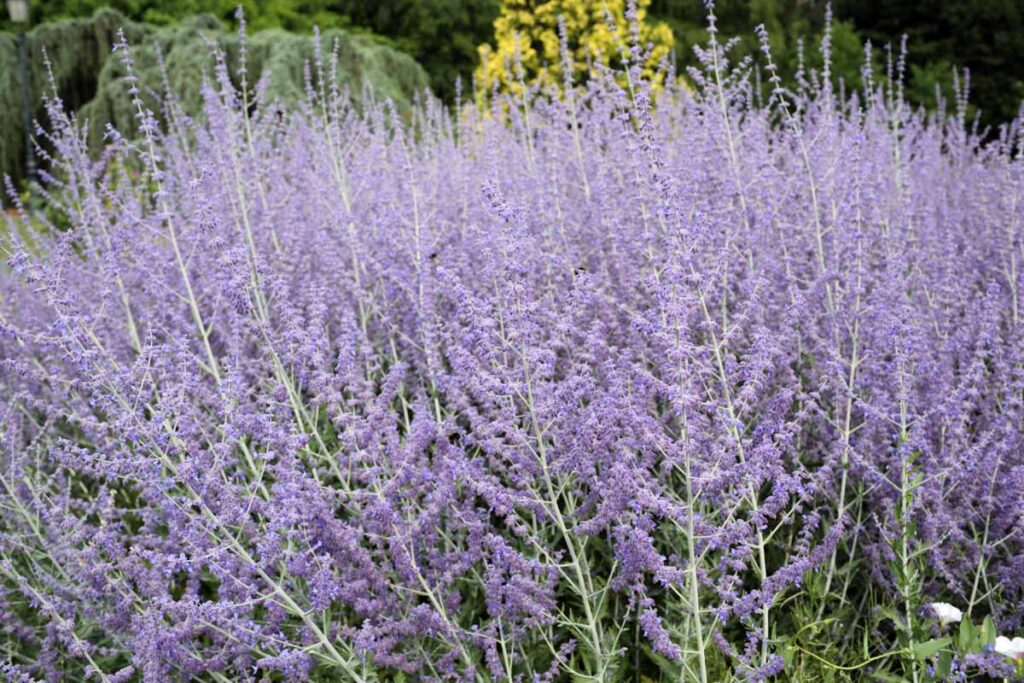
Russian Sage (Perovskia Atriplicifolia)

Plant Introduction
Russian Sage, or Perovskia atriplicifolia, is a hardy and drought-resistant perennial that adds a touch of elegance to any garden.
Introduction: This plant is perfect for creating a striking visual impact with its long-lasting blooms and aromatic foliage.
Appearance: Russian Sage features slender white stems adorned with finely-dissected, aromatic gray-green leaves. The plant can grow up to 3-5 feet tall and 2-4 feet wide.
Flowers: Blooming from mid-summer to fall, the small, lavender-blue flowers are arranged in long terminal panicles. These flowers attract pollinators like bees, butterflies, and hummingbirds.
Growth Conditions: Russian Sage thrives in full sun and well-drained soils. It is extremely tolerant of dry conditions, making it an excellent choice for xeriscaping.
Uses: This plant is ideal for dry landscapes, cottage gardens, and Mediterranean-style gardens. It can be used as a single specimen, in clusters, or even as a small hedge.
Maintenance: Russian Sage requires minimal maintenance. It should be cut back almost to the ground in late winter to early spring. The plant is resistant to pests, diseases, and deer.
Specifications
- Plant Habit:
Shrub - Life cycle:
Perennial - Sun Requirements:
Full Sun - Water Preferences:
Mesic
Dry Mesic
Dry - Plant Height:
2-4 feet - Plant Spread:
2-4 feet - Leaves:
Unusual foliage color
Deciduous
Fragrant
Other: Grayish - Flowers:
Showy
Fragrant - Flower Color:
Blue
Lavender - Flower Time:
Summer
Late summer or early fall
Fall
Late fall or early winter - Suitable Locations:
Xeriscapic - Uses:
Windbreak or Hedge
Culinary Herb
Cut Flower - Wildlife Attractant:
Bees
Butterflies
Hummingbirds - Resistances:
Deer Resistant
Rabbit Resistant
Drought tolerant
Salt tolerant - Containers:
Not suitable for containers - Miscellaneous:
Tolerates poor soil - Awards and Recognitions:
Other: 1995 Perennial Plant of the Year; 2005 Great Plant Picks Award Winner
The Tale of The Adventures of Russian Sage
Hello there! I’m Russian Sage, but you can call me Sage. My full name is Perovskia atriplicifolia, and I’m known for my silvery foliage and stunning lavender-blue flowers that add a touch of elegance to any garden.
I thrive in sunny, well-drained spots, where I can grow up to 3 to 4 feet tall. My slender, white stems are adorned with finely-dissected, aromatic gray-green leaves. From mid-summer to fall, I burst into bloom, creating a lavender-blue cloud of color that attracts bees, butterflies, and hummingbirds.
One of my favorite things about being Sage is my resilience. I’m drought-tolerant, heat-resistant, and can thrive in poor soils. This makes me a perfect choice for xeriscaping and low-water landscapes. I can even tolerate rocky and sandy soils, making me a versatile addition to any garden.
Gardeners love me because I’m low-maintenance and add a splash of color to their landscapes. I look stunning in dry landscapes with other desert plants, in cottage or Mediterranean gardens, and even in linear masses for knot gardens or small divider hedges. My long blooming season and aromatic foliage make me a valuable addition to any garden design.
But there’s more to me than just my good looks. I’m part of the mint family, which means I produce a delightful fragrance when my leaves are crushed. This aroma not only pleases the senses but also helps protect me from pests. My roots are also quite special—they’re used in traditional medicine to treat various ailments, earning me a place in the herbalist’s garden.
As the seasons change, I continue to spread my seeds, carried by the wind to new places where I can grow and flourish. My resilience and beauty make me a cherished member of the plant kingdom, a testament to the wonders of nature and the joy of gardening.
So, next time you see me in a garden, remember that I’m not just a pretty face—I’m a hardworking and essential plant with a rich history and a bright future.
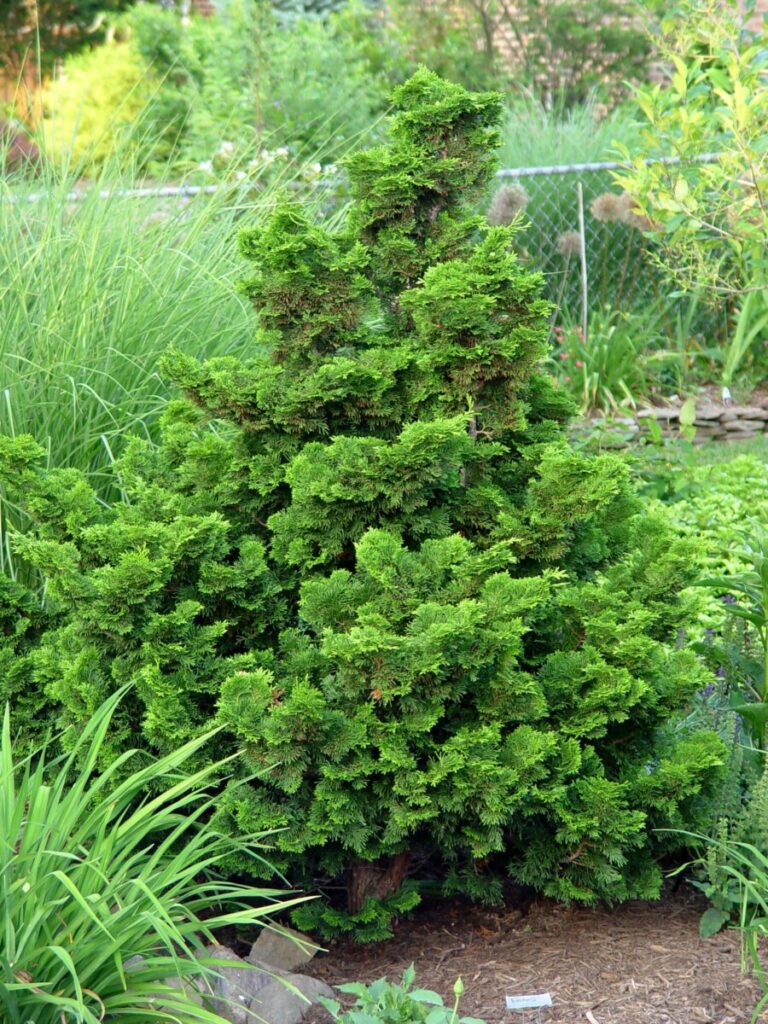
Hinoki Cypress (Chamaecyparis obtusa ‘Nana Gracilis’)

Plant Introduction
Hinoki Cypress, or Chamaecyparis obtusa ‘Nana Gracilis’, is a popular dwarf conifer known for its elegant and compact form.
Introduction: This plant is perfect for adding year-round color and structure to your garden.
Appearance: Hinoki Cypress features lush, glossy dark green foliage held in short, shell-like sprays. The plant forms a dense, globe-like shape when young, becoming more broadly conical over time. It typically grows to 3-6 feet tall and 2-4 feet wide.
Flowers: This plant is non-flowering, but its rich green foliage provides visual interest throughout the year.
Growth Conditions: Hinoki Cypress thrives in full sun to part shade and prefers moist, well-drained soils. It is tolerant of chalk soils but does best in slightly acidic conditions. Protect it from strong winds to maintain its health and appearance.
Uses: This plant is ideal for sunny borders, rock gardens, or containers. It can also be used as a specimen plant in city gardens, cottage gardens, or for adding structure to mixed plantings.
Maintenance: Hinoki Cypress requires low maintenance. It does not need regular pruning, but you can trim it to maintain its shape if desired. Watch for potential issues like honey fungus and Phytophthora root diseases, and protect it from aphids.
Specifications
- Plant Habit:
Shrub - Life cycle:
Perennial - Sun Requirements:
Full Sun
Full Sun to Partial Shade - Minimum cold hardiness:
Zone 4b -31.7 °C (-25 °F) to -28.9 °C (-20 °F) - Maximum recommended zone:
Zone 10b - Plant Height:
4-6 feet - Plant Spread:
3-4 feet - Leaves:
Unusual foliage color
Evergreen
Needled - Suitable Locations:
Alpine Gardening - Uses:
Provides winter interest - Containers:
Not suitable for containers - Awards and Recognitions:
RHS AGM
The Tale of The Adventures of Hinoki Cypress
Hello there! I’m Hinoki Cypress, but you can call me Nana. My full name is Chamaecyparis obtusa ‘Nana Gracilis’, and I’m known for my lush, dark green foliage and elegant, compact form that adds a touch of grace to any garden.
I thrive in sunny to partly shaded spots, where I can grow up to 3 to 6 feet tall over the years. My dense, shell-shaped sprays of foliage create a beautiful, conical shape that becomes more pronounced as I mature. My leaves are rich green and glossy, providing a striking contrast against the landscape.
One of my favorite things about being Nana is my versatility. I’m a slow-growing, low-maintenance plant that can fit into various garden styles. Whether it’s a rock garden, a container, or a sunny border, I bring year-round color and structure to the scene. My compact size makes me perfect for small gardens or as a specimen plant.
Gardeners love me because I’m easy to care for and add a touch of elegance to their landscapes. I prefer well-drained, slightly acidic soil and need protection from strong winds. My slow growth rate means I don’t require frequent pruning, making me a hassle-free addition to any garden.
But there’s more to me than just my good looks. I’m part of the cypress family, which means I have a rich history and cultural significance. In Japan, where I originate, I’m known as the “fire tree” and have been used in traditional architecture and gardens for centuries. My wood is prized for its durability and pleasant aroma.
As the seasons change, I continue to stand tall and proud, providing a touch of evergreen beauty to the garden. My resilience and grace make me a cherished member of the plant kingdom, a testament to the wonders of nature and the joy of gardening.
So, next time you see me in a garden, remember that I’m not just a pretty face—I’m a hardworking and essential plant with a rich history and a bright future.
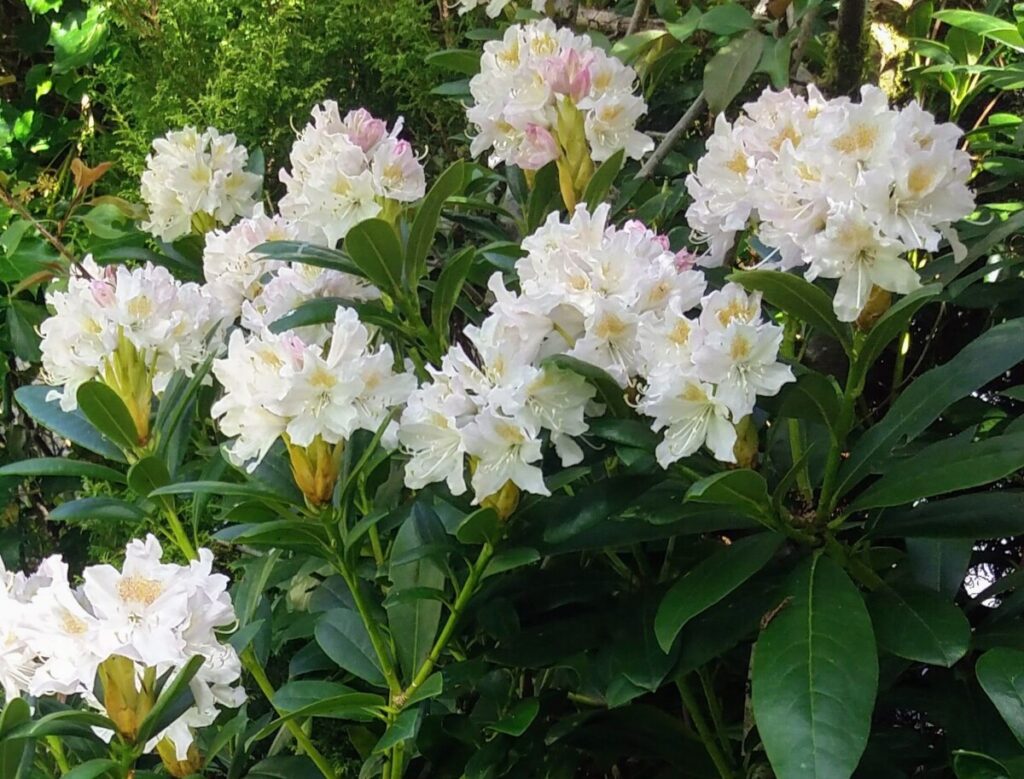
Rhododendron

Plant Introduction
Rhododendron is a diverse genus of shrubs and small trees known for their stunning flowers and glossy foliage.
Introduction: This plant is perfect for adding vibrant color and lush greenery to shaded garden areas.
Appearance: Rhododendrons can vary widely in size, from small shrubs to large trees. They have spirally arranged leaves that can be either evergreen or deciduous. The leaves range in size from 1-2 cm to over 50 cm, and some species have leaves with scales or hairs on the undersides.
Flowers: The flowers of Rhododendrons are typically large and showy, coming in a variety of colors including red, pink, orange, yellow, purple, and white. They can be tubular, funnel-shaped, or bell-shaped, and may be fragrant or non-fragrant. Bloom time ranges from late winter to early fall, depending on the species.
Growth Conditions: Rhododendrons thrive in partial shade and require moist, well-drained, acidic soils. They are often found in woodland settings and under trees, where they receive dappled sunlight.
Uses: These plants are ideal for shade gardens, woodland gardens, and as specimen plants. They can also be used in borders and as foundation plantings to add color and structure.
Maintenance: Rhododendrons require minimal maintenance once established. Light pruning and the application of organic mulch around the base of the plant help keep the soil moist and suppress weeds. They are generally resistant to pests and diseases but should be monitored for common issues like root rot and leaf spots.
Specifications
- Plant Habit:
Shrub - Life cycle:
Perennial - Sun Requirements:
Full Sun to Partial Shade - Minimum cold hardiness:
Zone 4b -31.7 °C (-25 °F) to -28.9 °C (-20 °F) - Plant Height:
2-3 feet - Plant Spread:
4-5 feet - Leaves:
Evergreen
Other: Bottoms of leaves are covered in thick indumentum (fuzz) - Flowers:
Showy - Flower Color:
Other: light pink fading to white - Bloom Size:
2″-3″ - Flower Time:
Spring
Late spring or early summer - Uses:
Provides winter interest
Cut Flower - Wildlife Attractant:
Bees - Toxicity:
Leaves are poisonous - Propagation (Other methods):
Cuttings: Tip
Layering
Other: Tissue Culture - Pollinators:
Bumblebees
Bees
The Tale of The Adventures of Rhododendron
Hello there! I’m Rhododendron, but you can call me Rhodie. My full name is Rhododendron spp., and I’m known for my vibrant, colorful blooms that light up gardens and landscapes.
I thrive in partially shaded spots with well-drained, acidic soil. Depending on my variety, I can grow anywhere from 2 to 20 feet tall and spread out just as wide. My leaves are usually large and leathery, providing a lush backdrop for my stunning flowers.
One of my favorite things about being Rhodie is my versatility. My flowers come in a rainbow of colors, including red, pink, orange, yellow, purple, and white. These blooms can be tubular, funnel-shaped, or bell-shaped, and they often appear in clusters, creating a spectacular display from spring to fall.
Gardeners love me because I’m relatively low-maintenance and add a burst of color to their landscapes. I prefer moist, well-drained soil and partial shade, especially in warmer climates. Once I’m established, I don’t require much care other than light pruning and a yearly application of organic mulch to keep the soil moist and suppress weeds.
But there’s more to me than just my good looks. I’m part of the heath family, which means I have a rich history and cultural significance. In many parts of the world, I’m celebrated for my beauty and resilience. My flowers are often used in traditional ceremonies and festivals, symbolizing elegance and natural beauty.
As the seasons change, I continue to spread my seeds, carried by the wind to new places where I can grow and flourish. My resilience and beauty make me a cherished member of the plant kingdom, a testament to the wonders of nature and the joy of gardening.
So, next time you see me in a garden, remember that I’m not just a pretty face—I’m a hardworking and essential plant with a rich history and a bright future.

English Lavender (Lavandula angustifolia ‘Hidcote’)

Plant Introduction
English Lavender, or Lavandula angustifolia ‘Hidcote’, is a popular and fragrant perennial known for its compact form and vibrant blooms.
Introduction: This plant is perfect for adding a touch of elegance and a delightful fragrance to your garden.
Appearance: English Lavender ‘Hidcote’ features dense, gray-green narrow leaves and richly-colored deep purple-blue flowers. The plant typically grows to about 12-20 inches tall and spreads up to 20-24 inches wide.
Flowers: Blooming once in late spring or early summer, the small, aromatic flowers are arranged in dense spikes. These flowers are highly attractive to bees, butterflies, and other pollinators.
Growth Conditions: English Lavender thrives in full sun and well-drained, sandy soils. It prefers neutral to alkaline soil but can tolerate mild acidity. This plant is drought-tolerant and performs best in dry to medium, poor soils.
Uses: This plant is ideal for low hedges, edging, borders, rock gardens, and containers. It is also excellent for crafts and dried flowers, as the blooms retain their color and fragrance.
Maintenance: English Lavender requires minimal maintenance. Prune around two-thirds of the top growth in early spring or late fall to encourage bushier growth and extend the plant’s lifespan. Avoid overwatering, especially in winter, to prevent root rot.
Specifications
- Plant Habit:
Shrub - Life cycle:
Perennial - Sun Requirements:
Full Sun
Full Sun to Partial Shade - Water Preferences:
Mesic
Dry Mesic
Dry - Soil pH Preferences:
Neutral (6.6 – 7.3)
Slightly alkaline (7.4 – 7.8) - Minimum cold hardiness:
Zone 8b -9.4 °C (15 °F) to -6.7 °C (20 °F) - Maximum recommended zone:
Zone 11 - Plant Height:
12-18 inches - Plant Spread:
12-18 inches - Leaves:
Unusual foliage color
Evergreen
Semi-evergreen
Fragrant
Other: Gray-green foliage - Flowers:
Showy
Fragrant - Flower Color:
Other: Deep purple-blue - Flower Time:
Late spring or early summer
Summer
Late summer or early fall - Suitable Locations:
Xeriscapic - Uses:
Culinary Herb
Cut Flower
Dried Flower
Suitable as Annual - Wildlife Attractant:
Bees
Butterflies - Resistances:
Deer Resistant
Rabbit Resistant
Drought tolerant
Salt tolerant - Toxicity:
Other: can cause allergic reactions - Propagation (Seeds):
Can handle transplanting
Other info: Plant lavender seeds beginning in summer and through the fall months. Slow to germinate, lavender seeds require patience. It will take about eight weeks for the seeds to develop enough to transplant to their final location. - Propagation (Other methods):
Cuttings: Stem
Division
Other: Cut tender shoots that are around 2-4 in long with around 3-5 nodes. Avoid woody stems. Cut just below the last node. - Pollinators:
Moths and Butterflies
Bees - Containers:
Suitable in 3 gallon or larger
Needs excellent drainage in pots - Child plants:
One child plant
The Tale of The Adventures of English Lavender
Hello there! I’m English Lavender, but you can call me Hidcote. My full name is Lavandula angustifolia ‘Hidcote’, and I’m known for my compact form and highly fragrant, deep purple-blue flowers that bring a touch of elegance and tranquility to any garden.
I thrive in sunny, well-drained spots, where I can grow up to 18 to 24 inches tall. My dense, bushy form is adorned with narrow, gray-green leaves that provide a beautiful backdrop for my vibrant blooms. From late spring to early summer, I burst into a profusion of deep violet-blue flowers that attract bees, butterflies, and other pollinators.
One of my favorite things about being Hidcote is my versatility. I’m perfect for edging walks and paths, where my aromatic flowers and foliage can be easily enjoyed. I’m also a great choice for container plantings, rock gardens, and herb gardens. My flowers are excellent for both fresh and dried bouquets, retaining their color and fragrance for a long time.
Gardeners love me because I’m low-maintenance and drought-tolerant once established. I prefer well-drained, sandy soils and need full sun to thrive. My compact size and uniform habit make me an ideal choice for creating low hedges or borders. Plus, I’m deer and rabbit-resistant, which means I can flourish without being nibbled on by garden pests.
But there’s more to me than just my good looks. I’m part of the mint family, which means I have a rich history and cultural significance. My fragrant flowers have been used for centuries in perfumes, sachets, and potpourris. In addition to my delightful scent, I’m also known for my calming properties, making me a popular choice for aromatherapy and herbal remedies.
As the seasons change, I continue to spread my seeds, carried by the wind to new places where I can grow and flourish. My resilience and beauty make me a cherished member of the plant kingdom, a testament to the wonders of nature and the joy of gardening.
So, next time you see me in a garden, remember that I’m not just a pretty face—I’m a hardworking and essential plant with a rich history and a bright future.

Columbine (Aquilegia ‘Biedermeier’)

Plant Introduction
Columbine, or Aquilegia ‘Biedermeier’, is a delightful perennial known for its vibrant and uniquely shaped flowers.
Introduction: This plant is perfect for adding a splash of color and whimsical charm to your garden.
Appearance: Columbine ‘Biedermeier’ features compact, bushy growth with delicate, lacy blue-green foliage. The plant typically grows to about 12-18 inches tall and spreads up to 12 inches wide.
Flowers: Blooming from mid to late spring, the flowers come in a mix of pastel shades including pink, red, blue, and white. Each flower has distinctive spurs that project out behind the blossoms, giving them a star-like appearance.
Growth Conditions: Columbine ‘Biedermeier’ thrives in full sun to part shade and prefers moist, well-drained soils. It tolerates a wide range of soils but does best in organically rich, slightly acidic to neutral conditions.
Uses: This plant is ideal for borders, rock gardens, cottage gardens, and woodland gardens. It also attracts hummingbirds, making it a great addition to a wildlife-friendly garden.
Maintenance: Columbine ‘Biedermeier’ requires medium maintenance. Remove flowering stems after bloom to encourage additional blooming and keep the foliage looking attractive. The plant may be cut to the ground if the foliage depreciates by mid-summer. Watch for potential issues like leaf miners, aphids, and fungal diseases.
Specifications
- Plant Habit:
Herb/Forb - Life cycle:
Perennial - Sun Requirements:
Full Sun to Partial Shade - Flowers:
Showy - Flower Time:
Spring
Late spring or early summer - Uses:
Cut Flower
Will Naturalize - Wildlife Attractant:
Bees
Hummingbirds - Propagation (Seeds):
Provide light
Suitable for wintersowing
Sow in situ
Can handle transplanting - Containers:
Suitable in 3 gallon or larger
The Tale of The Adventures of Columbine
Hello there! I’m Columbine, but you can call me Biedermeier. My full name is Aquilegia ‘Biedermeier’, and I’m known for my charming, pastel-colored flowers that bring a touch of whimsy to any garden.
I thrive in sunny to partly shaded spots with well-drained, moist soil. I’m a compact, low-growing plant, reaching about 12 to 18 inches tall. My delicate, fern-like foliage forms a lush, green mound, and from late spring to early summer, I burst into bloom with my spurred flowers in shades of pink, red, blue, and white.
One of my favorite things about being Biedermeier is my ability to attract hummingbirds and butterflies. My bell-shaped flowers are a favorite among these pollinators, making my garden a lively and colorful place. I’m also quite resilient, tolerating a range of soil types as long as they’re not too heavy or poorly drained.
Gardeners love me because I’m easy to care for and add a splash of color to their landscapes. I prefer organically rich, moist soils and light to moderate shade, especially in warmer climates. After my blooming season, it’s a good idea to remove my flowering stems to encourage additional blooms and keep my foliage looking fresh.
But there’s more to me than just my good looks. I’m part of the buttercup family, which means I have a rich history and cultural significance. My name, Aquilegia, comes from the Latin word for eagle, referencing the shape of my flower spurs that resemble an eagle’s talon. I’m also known as “granny’s bonnet” due to the bonnet-like appearance of my flowers.
As the seasons change, I continue to spread my seeds, carried by the wind to new places where I can grow and flourish. My resilience and beauty make me a cherished member of the plant kingdom, a testament to the wonders of nature and the joy of gardening.
So, next time you see me in a garden, remember that I’m not just a pretty face—I’m a hardworking and essential plant with a rich history and a bright future.
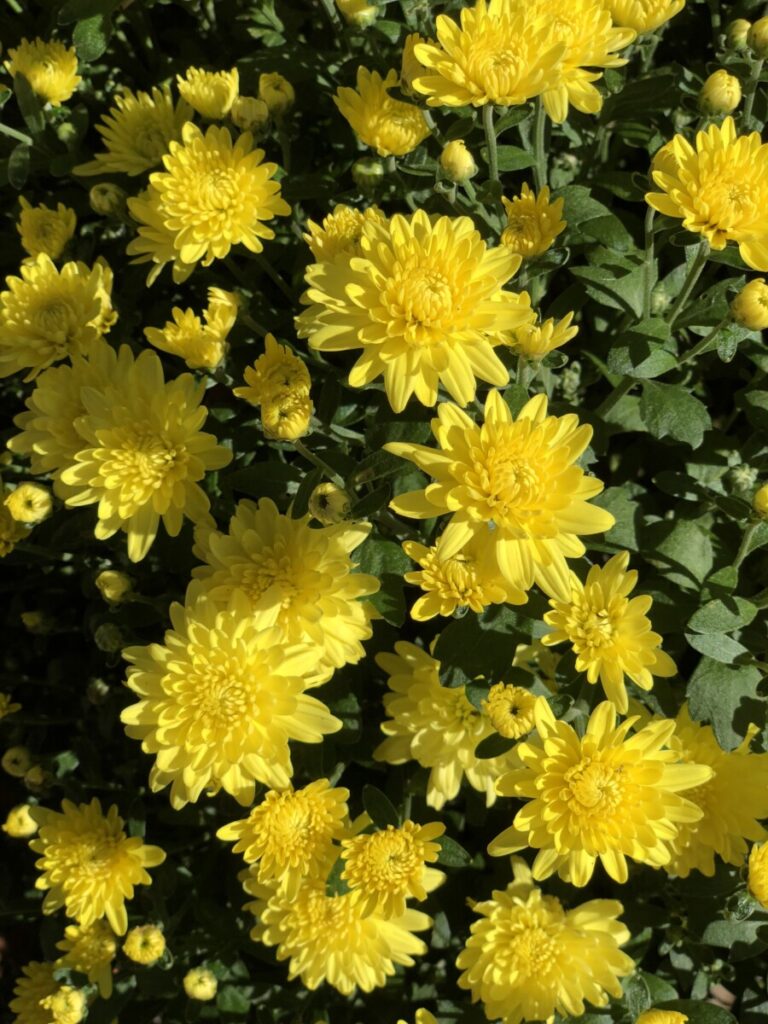
Cushion Mum (Chrysanthemum ‘Golden Regards’)

Plant Introduction
Cushion Mum, or Chrysanthemum ‘Golden Regards’, is a vibrant perennial known for its rich yellow blooms and compact growth habit.
Introduction: This plant is perfect for adding a burst of color to your garden in the late summer and fall.
Appearance: Cushion Mum ‘Golden Regards’ features rich, deep yellow flowers that are slightly darker at the center when they first open, maturing to a full yellow. The plant typically grows to about 24-30 inches tall and spreads up to 16 inches wide.
Flowers: Blooming from early fall to late fall, the large flowers are showy and attract butterflies. They are also excellent for cut flowers and dried arrangements.
Growth Conditions: Cushion Mum thrives in full sun and prefers well-drained soils. It is hardy in zones 5-9 and requires medium water needs.
Uses: This plant is ideal for borders, containers, and as a focal point in garden beds. It adds vibrant color to the garden when many other plants are starting to fade.
Maintenance: Cushion Mum requires moderate maintenance. Pinch back the growing tips until early July to encourage bushier growth and more blooms. Ensure good drainage, especially in winter, to prevent root rot. Mulch in very cold areas for winter protection and remove old foliage in spring.
Specifications
- Plant Habit:
Herb/Forb - Life cycle:
Perennial - Sun Requirements:
Full Sun
Full Sun to Partial Shade - Water Preferences:
Mesic - Minimum cold hardiness:
Zone 5a -28.9 °C (-20 °F) to -26.1 °C (-15 °F) - Maximum recommended zone:
Zone 9b - Plant Height:
24 to 30 inches - Flowers:
Showy - Flower Color:
Yellow - Bloom Size:
4″-5″ - Flower Time:
Late summer or early fall
Fall
Late fall or early winter - Uses:
Cut Flower
Dried Flower - Wildlife Attractant:
Butterflies - Resistances:
Deer Resistant - Containers:
Needs excellent drainage in pots
The Tale of The Adventures of Cushion Mum
Hello there! I’m Cushion Mum, but you can call me Golden. My full name is Chrysanthemum ‘Golden Regards’, and I’m known for my rich, deep yellow blooms that bring a burst of color to any garden.
I thrive in sunny spots with well-drained soil, where I can grow up to 24 to 30 inches tall. My large, cushion-like flowers bloom freely and completely cover my dome-shaped form, creating a spectacular display from early fall to late fall. My flowers start with a slightly darker center and mature to a full, vibrant yellow.
One of my favorite things about being Golden is my ability to attract butterflies. My bright, showy flowers are a magnet for these beautiful creatures, making my garden a lively and colorful place. I’m also quite resilient, tolerating a range of soil types as long as they’re well-drained.
Gardeners love me because I’m easy to care for and add a splash of color to their landscapes. I prefer well-drained soil and full sun to partial shade. Regular watering is important, but I don’t like soggy conditions. To keep me looking my best, gardeners should pinch back my growing tips until the 4th of July to promote bushiness and more blooms.
But there’s more to me than just my good looks. I’m part of the Asteraceae family, which means I have a rich history and cultural significance. My flowers have been used in traditional ceremonies and festivals, symbolizing joy and celebration. I’m also known for my long-lasting blooms, making me a popular choice for cut flowers and floral arrangements.
As the seasons change, I continue to spread my seeds, carried by the wind to new places where I can grow and flourish. My resilience and beauty make me a cherished member of the plant kingdom, a testament to the wonders of nature and the joy of gardening.
So, next time you see me in a garden, remember that I’m not just a pretty face—I’m a hardworking and essential plant with a rich history and a bright future.

Northern Red Oak (Quercus rubra)

Plant Introduction
Northern Red Oak, or Quercus rubra, is a majestic deciduous tree known for its impressive size and beautiful fall foliage.
Introduction: This tree is perfect for providing shade and adding a stately presence to large landscapes.
Appearance: Northern Red Oak features a straight trunk with a rounded to broad-spreading crown. The bark is dark reddish-gray brown with broad, thin, rounded ridges. The leaves are large, measuring 8 to 12 inches long and 4 to 8 inches wide, with 7 to 11 pointed lobes. The upper surface of the leaves is green, while the underside is grayish-white.
Flowers: The tree produces inconspicuous yellow-green flowers in the spring. The male flowers are cylindrical catkins, and the female flowers are small spikes.
Growth Conditions: Northern Red Oak thrives in full sun and prefers moist, well-drained, acidic soils. It is tolerant of a variety of soil types, including sandy and loamy soils. This tree is hardy and can grow in a range of conditions, making it a versatile choice for many landscapes.
Uses: This tree is ideal for use as a shade tree, street tree, or specimen tree in large gardens and parks. It is also an important food source for wildlife, including squirrels, deer, and birds.
Maintenance: Northern Red Oak requires minimal maintenance once established. It is generally resistant to pests and diseases but can be susceptible to oak wilt and chlorosis if the soil is not sufficiently acidic. Regular watering during dry periods and mulching can help maintain its health.
Specifications
- Plant Habit:
Tree - Life cycle:
Perennial - Sun Requirements:
Full Sun
Full Sun to Partial Shade - Water Preferences:
Mesic
Dry Mesic
Dry - Soil pH Preferences:
Strongly acid (5.1 – 5.5)
Moderately acid (5.6 – 6.0)
Slightly acid (6.1 – 6.5)
Neutral (6.6 – 7.3) - Minimum cold hardiness:
Zone 3 -40 °C (-40 °F) to -37.2 °C (-35) - Maximum recommended zone:
Zone 8b - Plant Height:
60 – 80 feet - Plant Spread:
40 – 60 feet - Leaves:
Good fall color
Deciduous - Fruit:
Edible to birds - Fruiting Time:
Late summer or early fall - Flower Color:
Yellow - Bloom Size:
Under 1″ - Flower Time:
Spring - Suitable Locations:
Street Tree - Uses:
Shade Tree - Edible Parts:
Fruit - Dynamic Accumulator:
K (Potassium) - Wildlife Attractant:
Birds - Propagation (Seeds):
Sow in situ
Seeds are hydrophilic - Pollinators:
Wind - Containers:
Not suitable for containers - Miscellaneous:
Monoecious - Conservation status:
Least Concern (LC)
The Tale of The Adventures of Northern Red Oak
Hello there! I’m Northern Red Oak, but you can call me Red. My full name is Quercus rubra, and I’m known for my majestic stature and vibrant fall foliage that adds a touch of grandeur to any landscape.
I thrive in sunny spots with well-drained, acidic soil, where I can grow up to 50 to 75 feet tall and just as wide. My broad, spreading crown provides ample shade, and my dark green leaves, which turn a brilliant red in the fall, are a sight to behold. My leaves have 7 to 11 pointed lobes, giving me a distinctive, elegant appearance.
One of my favorite things about being Red is my resilience. I’m a fast-growing tree that can tolerate a variety of challenging conditions, including drought, poor soils, and urban pollution. This makes me a popular choice for parks, streets, and large gardens. My bark starts smooth but develops wide, flat-topped ridges and shallow furrows as I age, adding to my rugged charm.
Gardeners and landscapers love me because I’m easy to care for and provide year-round interest. In the spring, I produce inconspicuous yellow-green flowers, followed by acorns in the fall. These acorns are a valuable food source for wildlife, including squirrels, deer, and birds. My strong wood is also prized for furniture, flooring, and other woodworking projects.
But there’s more to me than just my good looks. I’m part of the beech family, which means I have a rich history and cultural significance. My acorns were an important food source for Native Americans, who used various methods to remove the bitter tannins. My bark was also used in traditional medicine to treat heart troubles and bronchial infections.
As the seasons change, I continue to spread my seeds, carried by the wind to new places where I can grow and flourish. My resilience and beauty make me a cherished member of the plant kingdom, a testament to the wonders of nature and the joy of gardening.
So, next time you see me in a park or garden, remember that I’m not just a pretty face—I’m a hardworking and essential tree with a rich history and a bright future.
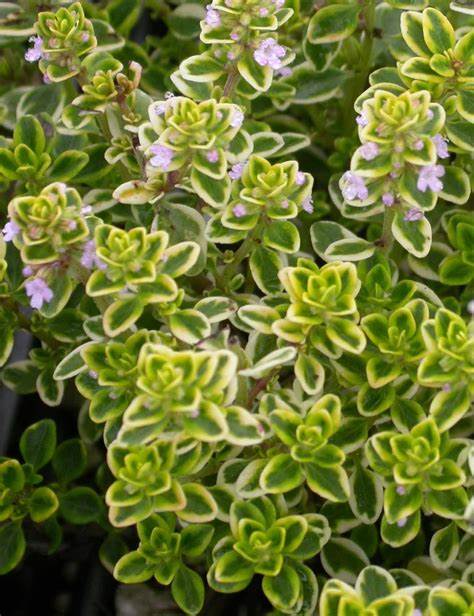
Variegated Lemon Thyme (Thymus x citriodorus ‘Variegata’)

Plant Introduction
Variegated Lemon Thyme, or Thymus x citriodorus ‘Variegata’, is a delightful herb known for its lemon-scented foliage and attractive variegation.
Introduction: This plant is perfect for adding both culinary and ornamental value to your garden.
Appearance: Variegated Lemon Thyme features tiny green leaves with distinctive gold edges and tinges of creamy white. The plant forms a low, spreading mat, typically reaching 6-12 inches in height and spreading 10-12 inches wide.
Flowers: Blooming in summer, the small lavender-pink flowers are not only beautiful but also attract bees and other pollinators to the garden.
Growth Conditions: This thyme thrives in full sun and well-drained soil. It is tolerant of poor soil, heat, and drought, making it an excellent choice for rock gardens, borders, and containers.
Uses: Variegated Lemon Thyme is ideal for culinary use, particularly in dishes with fish, poultry, and soups. The leaves can be used fresh or dried, and they also make a lovely addition to potpourris and sachets.
Maintenance: This plant requires minimal maintenance. Allow the soil to dry between thorough waterings, and prune as needed to maintain its shape. It is hardy and can be grown in containers, which can be brought indoors for winter.
Specifications
- Plant Habit:
Herb/Forb - Life cycle:
Perennial - Sun Requirements:
Full Sun
Full Sun to Partial Shade - Water Preferences:
Mesic
Dry Mesic
Dry - Leaves:
Semi-evergreen - Flowers:
Inconspicuous - Bloom Size:
Under 1″ - Flower Time:
Late spring or early summer
Summer - Uses:
Culinary Herb
Medicinal Herb - Edible Parts:
Leaves
Flowers - Eating Methods:
Tea
Culinary Herb/Spice
Raw
Cooked - Pollinators:
Moths and Butterflies
Flies
Bees - Containers:
Suitable in 1 gallon
Needs excellent drainage in pots - Miscellaneous:
Tolerates poor soil
The Tale of The Adventures of Variegated Lemon Thyme
Hello there! I’m Variegated Lemon Thyme, but you can call me Lemon. My full name is Thymus x citriodorus ‘Variegata’, and I’m known for my delightful lemon scent and charming variegated leaves that bring a touch of zest to any garden.
I thrive in sunny, well-drained spots, where I can grow up to 6 to 12 inches tall. My tiny, fragrant leaves are green with distinctive gold edges and tinges of creamy white, which emerge chartreuse in the spring. From late spring to early summer, I produce small, pink flowers that attract bees and other pollinators.
One of my favorite things about being Lemon is my versatility. I’m perfect for herb gardens, rock gardens, and as a border plant along walkways or flower beds. I’m also a great choice for container plantings, where my aromatic foliage can be easily enjoyed. My leaves are excellent for culinary uses, adding a burst of lemon flavor to fish, poultry, stuffing, or soups. They can also be used to brew a delicious tea or added to potpourris and sachets.
Gardeners love me because I’m low-maintenance and drought-tolerant once established. I prefer well-drained, sandy soils and need full sun to thrive. My compact size and uniform habit make me an ideal choice for creating low hedges or borders. Plus, I’m deer and rabbit-resistant, which means I can flourish without being nibbled on by garden pests.
But there’s more to me than just my good looks. I’m part of the mint family, which means I have a rich history and cultural significance. My fragrant leaves have been used for centuries in cooking and traditional medicine. In addition to my delightful scent, I’m also known for my antibacterial and antifungal properties, making me a popular choice for herbal remedies.
As the seasons change, I continue to spread my seeds, carried by the wind to new places where I can grow and flourish. My resilience and beauty make me a cherished member of the plant kingdom, a testament to the wonders of nature and the joy of gardening.
So, next time you see me in a garden, remember that I’m not just a pretty face—I’m a hardworking and essential plant with a rich history and a bright future.

Rough Goldenrod (Solidago rugosa ‘Fireworks’)

Plant Introduction
Rough Goldenrod, or Solidago rugosa ‘Fireworks’, is a striking perennial known for its vibrant yellow blooms that resemble fireworks.
Introduction: This plant is perfect for adding a burst of color to your garden in the late summer and fall.
Appearance: Rough Goldenrod ‘Fireworks’ forms a bushy, upright clump with dark green leaves. It typically grows to about 2-3 feet tall and wide. The plant features arching stems that hold the bright yellow flowers above the foliage, creating a stunning display.
Flowers: Blooming from late summer to late fall, the tiny yellow flowers are arranged in dense panicles at the ends of the arching stems. These flowers attract various pollinators, including butterflies and bees.
Growth Conditions: Rough Goldenrod thrives in full sun and prefers moist, well-drained soils. It is tolerant of a range of soil types, including clay and sandy soils, and can handle both dry and wet conditions.
Uses: This plant is ideal for borders, cottage gardens, prairies, and meadows. It pairs well with other late-season bloomers like asters and Joe Pye weed. The flowers are also excellent for cut arrangements.
Maintenance: Rough Goldenrod requires low maintenance. It spreads slowly by rhizomes and is not aggressive. Divide the plant every three to four years to maintain its vigor. Cut it back in early spring before new growth begins.
Specifications
- Plant Habit:
Herb/Forb
Shrub - Sun Requirements:
Full Sun to Partial Shade - Minimum cold hardiness:
Zone 4a -34.4 °C (-30 °F) to -31.7 °C (-25 °F) - Plant Height:
24 – 36 inches - Plant Spread:
18 – 24 inches - Fruit:
Showy
Edible to birds - Flowers:
Showy - Flower Color:
Yellow - Bloom Size:
Under 1″ - Flower Time:
Fall - Underground structures:
Rhizome - Suitable Locations:
Xeriscapic - Uses:
Will Naturalize - Wildlife Attractant:
Bees
Butterflies
Hummingbirds - Resistances:
Deer Resistant - Propagation (Other methods):
Division - Awards and Recognitions:
Other: 2007 Great Plant Picks Award Winner
The Tale of The Adventures of Rough Goldenrod
Hello there! I’m Rough Goldenrod, but you can call me Fireworks. My full name is Solidago rugosa ‘Fireworks’, and I’m known for my spectacular, bright yellow blooms that light up the garden like a burst of fireworks.
I thrive in sunny spots with well-drained soil, where I can grow up to 2 to 3 feet tall and wide. My dark green leaves are rough and hairy, giving me a rugged charm. From late summer to fall, I produce arching sprays of tiny yellow flowers that cascade off my stems, creating a dazzling display that attracts bees, butterflies, and other pollinators.
One of my favorite things about being Fireworks is my resilience. I’m tolerant of a variety of soil conditions, including clay and sandy soils, and I can handle both dry and moist environments. This makes me a versatile addition to any garden, whether it’s a sunny border, a cottage garden, or a naturalized meadow.
Gardeners love me because I’m low-maintenance and add a burst of color to their landscapes. I prefer full sun but can tolerate light shade. My blooms are long-lasting and make excellent cut flowers, adding a touch of sunshine to indoor arrangements. Plus, I’m deer-resistant, so I can flourish without being nibbled on by garden pests.
But there’s more to me than just my good looks. I’m part of the daisy family, which means I have a rich history and cultural significance. My flowers have been used in traditional medicine to treat various ailments, and my bright blooms are a symbol of cheerfulness and positivity.
As the seasons change, I continue to spread my seeds, carried by the wind to new places where I can grow and flourish. My resilience and beauty make me a cherished member of the plant kingdom, a testament to the wonders of nature and the joy of gardening.
So, next time you see me in a garden, remember that I’m not just a pretty face—I’m a hardworking and essential plant with a rich history and a bright future.
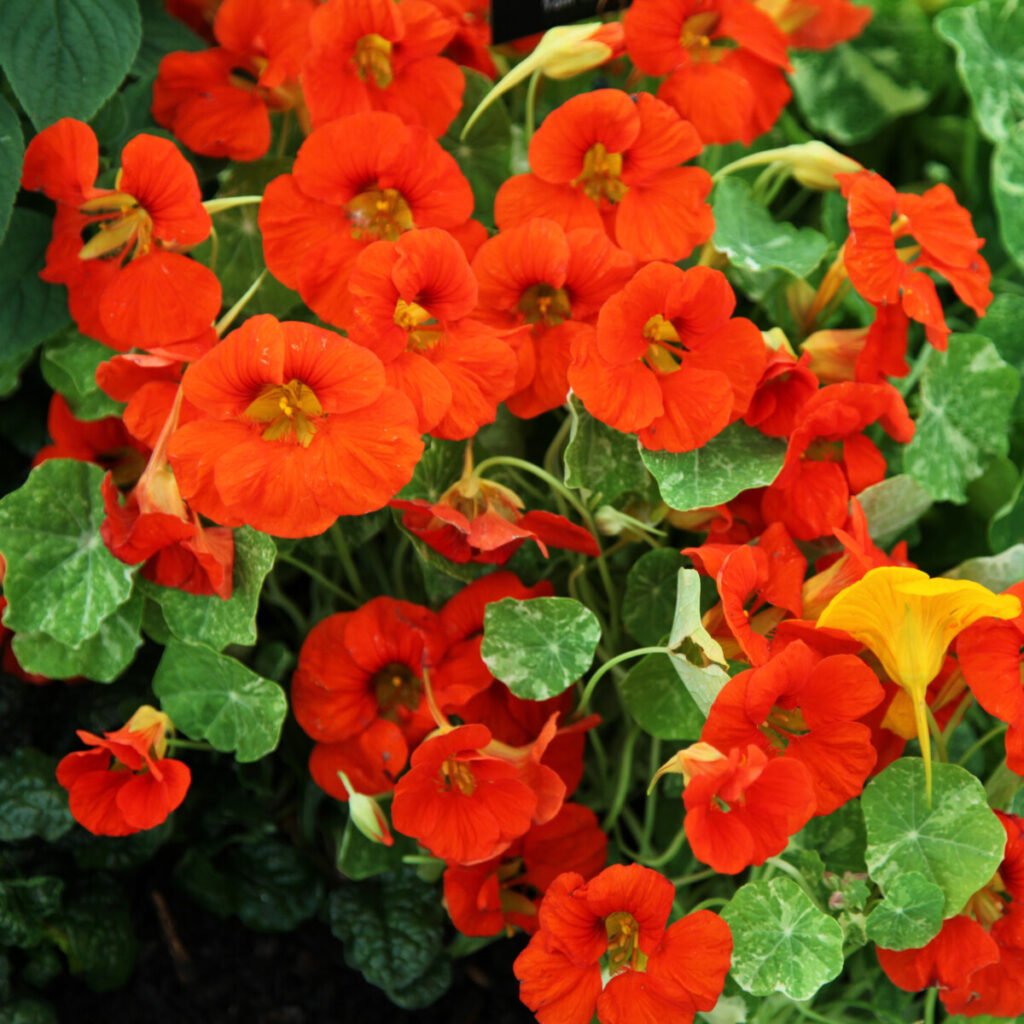
Nasturtium (Tropaeolum)

Plant Introduction
Nasturtium, or Tropaeolum, is a versatile and vibrant annual or perennial known for its colorful flowers and edible leaves.
Introduction: This plant is perfect for adding a splash of color and a touch of culinary delight to your garden.
Appearance: Nasturtiums feature rounded, parasol-like leaves that resemble miniature lotus leaves. The flowers are funnel-shaped and come in a variety of rich, jewel-toned colors, including red, orange, yellow, and cream. Depending on the variety, the plant can grow from 1 to 10 feet tall and 1 to 3 feet wide.
Flowers: Blooming from spring through fall, the flowers are not only beautiful but also attract bees, butterflies, and hummingbirds. The blossoms may be single or double and have a refreshing fragrance.
Growth Conditions: Nasturtiums thrive in full sun and well-drained soils. They prefer poor to moderately fertile soil, as rich soil can lead to more foliage and fewer flowers. These plants are drought-tolerant once established and appreciate cooler temperatures.
Uses: This plant is ideal for borders, rock gardens, containers, and as ground cover. Nasturtiums are also excellent companion plants for vegetables, as they can help repel pests. The leaves and flowers are edible, adding a peppery flavor to salads and garnishes.
Maintenance: Nasturtiums require minimal maintenance. They can be grown from seed and generally take care of themselves once established. Deadheading is not necessary, but removing spent blooms can encourage more flowers. Watch for pests like aphids and caterpillars.
Specifications
- Plant Habit:
- Herb/Forb
- Sun Requirements:
- Full Sun
- Full Sun to Partial Shade
- Water Preferences:
- Mesic
- Soil pH Preferences:
- Slightly acid (6.1 – 6.5)
- Neutral (6.6 – 7.3)
- Slightly alkaline (7.4 – 7.8)
- Flowers:
- Showy
- Flower Color:
- Orange
- Pink
- Purple
- Red
- Yellow
- Bloom Size:
- Under 1″
- 1″-2″
- Flower Time:
- Summer
- Late summer or early fall
- Resistances:
- Drought tolerant
- Miscellaneous:
- Tolerates poor soil
The Tale of The Adventures of Nasturtium
Hello there! I’m Nasturtium, but you can call me Tropaeolum. My full name is Tropaeolum spp., and I’m known for my vibrant, jewel-toned flowers and unique, peppery leaves that add a splash of color and flavor to any garden.
I thrive in sunny spots with well-drained soil, where I can grow up to 1 to 10 feet tall, depending on my variety. My rounded leaves look like miniature lotus leaves, and my flowers come in a range of hot colors, including red, orange, yellow, and even pink. These blooms appear from spring to fall, creating a continuous display of color.
One of my favorite things about being Tropaeolum is my versatility. I can be a bushy plant for borders and edges, a trailing plant for walls and containers, or a climber that adds dramatic height. My leaves and flowers are edible, with a peppery tang that makes them a delightful addition to salads and garnishes. My seedpods can even be pickled and used like capers!
Gardeners love me because I’m easy to grow and add a burst of color to their landscapes. I prefer poorer soils, as rich soil tends to produce more leaves than flowers. I’m also a great companion plant, often grown alongside vegetables like broccoli, cabbage, and cauliflower to keep pests away. My flowers attract bees, butterflies, and hummingbirds, making my garden a lively and colorful place.
But there’s more to me than just my good looks. I’m part of the Tropaeolaceae family, which means I have a rich history and cultural significance. Native to South and Central America, I’ve been used in traditional medicine for my antibacterial and antifungal properties. My bright blooms are a symbol of cheerfulness and positivity, often used in floral arrangements and decorations.
As the seasons change, I continue to spread my seeds, carried by the wind to new places where I can grow and flourish. My resilience and beauty make me a cherished member of the plant kingdom, a testament to the wonders of nature and the joy of gardening.
So, next time you see me in a garden, remember that I’m not just a pretty face—I’m a hardworking and essential plant with a rich history and a bright future.
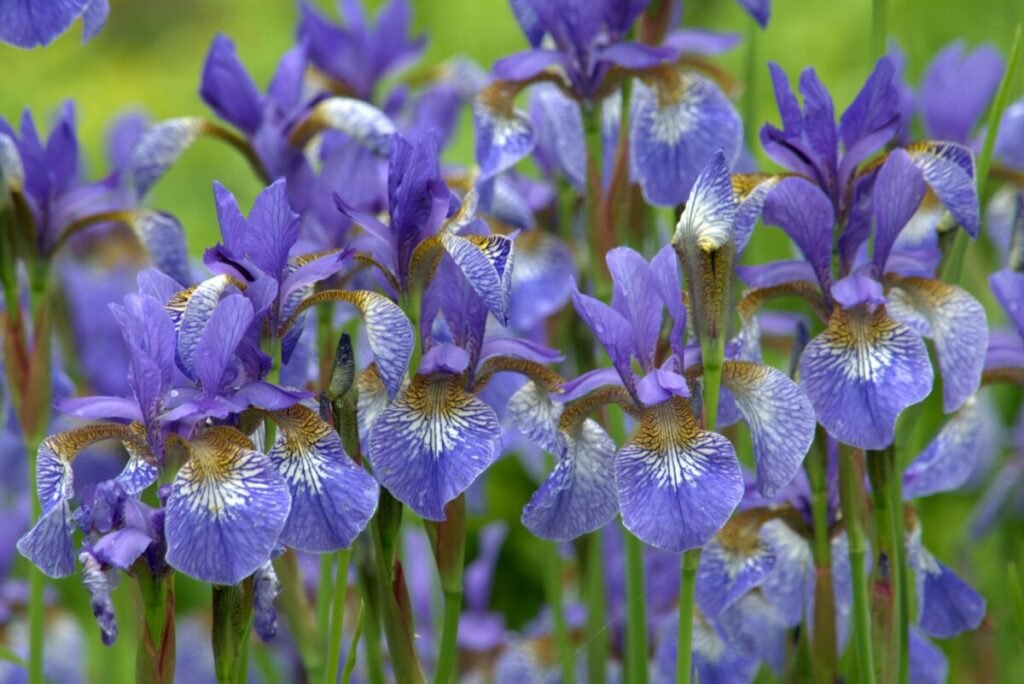
Siberian Iris (Iris Sibirica)

Plant Introduction
Siberian Iris, or Iris sibirica, is a graceful perennial known for its striking flowers and elegant foliage.
Introduction: This plant is perfect for adding a touch of elegance and vibrant color to your garden.
Appearance: Siberian Iris forms dense clumps of upright, grass-like foliage. The leaves are slender and sword-shaped, providing a graceful backdrop to the flowers. The plant typically grows to about 2-4 feet tall and 2-3 feet wide.
Flowers: Blooming from late spring to early summer, the flowers come in shades of blue, purple, white, and pink. Each stem produces several intricate, butterfly-like flowers that are both delicate and striking.
Growth Conditions: Siberian Iris thrives in full sun to partial shade and prefers moist, well-drained soils. It is tolerant of a range of soil types and is notably cold-hardy, making it suitable for USDA zones 3-8.
Uses: This plant is ideal for perennial borders, cottage gardens, and waterside plantings. It can also be used in naturalized areas or meadow-style plantings. The flowers are attractive to bees, butterflies, and other pollinators.
Maintenance: Siberian Iris requires low maintenance. It should be divided every three to four years to prevent the clumps from becoming overgrown and woody. The plant is generally resistant to pests and diseases, making it a trouble-free addition to the garden.
Specifications
- Classification:
- Siberian
- Bloom Color Description:
- White
- General Plant Information:
- Life cycle:
- Perennial
- Water Preferences:
- Wet
- Wet Mesic
- Mesic
- Flowers:
- Showy
- Propagation:
- Seeds: Self fertile
- Pollinators:
- Various insects
- Ploidy:
- Diploid
The Tale of The Adventures of Siberian Iris
Hello there! I’m Siberian Iris, but you can call me Sibi. My full name is Iris sibirica, and I’m known for my elegant, slender leaves and stunning, delicate flowers that bring a touch of grace to any garden.
I thrive in sunny to partly shaded spots with moist, well-drained soil. I can grow up to 3 to 4 feet tall, forming clumps of slender, grass-like leaves that provide a graceful backdrop to my striking flowers. My blooms come in shades of blue, purple, white, and pink, adding a splash of color from late spring to early summer.
One of my favorite things about being Sibi is my resilience. I’m hardy and can withstand cold climates, making me a perfect choice for gardens in USDA Hardiness Zones 3 to 8. I’m also quite adaptable, thriving in moist meadows, wetlands, and along the banks of streams and rivers.
Gardeners love me because I’m low-maintenance and add a touch of elegance to their landscapes. I prefer consistently moist soil but can tolerate drier conditions once established. My flowers are long-lasting and make excellent cut flowers, adding a touch of beauty to indoor arrangements. Plus, I’m generally pest and disease resistant, which means I can flourish without much fuss.
But there’s more to me than just my good looks. I’m part of the iris family, which means I have a rich history and cultural significance. My name, Iris, comes from the Greek word for rainbow, reflecting the wide range of colors my flowers can display. I’ve been used in traditional medicine and are often featured in art and literature as symbols of hope and wisdom.
As the seasons change, I continue to spread my seeds, carried by the wind to new places where I can grow and flourish. My resilience and beauty make me a cherished member of the plant kingdom, a testament to the wonders of nature and the joy of gardening.
So, next time you see me in a garden, remember that I’m not just a pretty face—I’m a hardworking and essential plant with a rich history and a bright future.

Marigold (Tagetes)

Plant Introduction
Marigold, or Tagetes, is a versatile and vibrant annual or perennial known for its cheerful flowers and pest-repelling properties.
Introduction: This plant is perfect for adding bright, warm colors to your garden and for companion planting to deter pests.
Appearance: Marigolds feature fern-like, aromatic foliage and come in a variety of forms, from compact, bushy plants to taller, upright varieties. The flowers can be single or double and come in shades of orange, yellow, red, gold, and white.
Flowers: Blooming from summer to fall, the flowers are showy and attract pollinators like bees and butterflies. They can range in size from small, single-petal flowers to large, double-petal blooms.
Growth Conditions: Marigolds thrive in full sun and well-drained soils. They are adaptable to a range of soil types and are drought-tolerant once established. These plants prefer slightly acidic to neutral soil.
Uses: This plant is ideal for borders, containers, and as a companion plant in vegetable gardens. Marigolds are known to repel pests such as nematodes, making them beneficial for protecting other plants.
Maintenance: Marigolds require minimal maintenance. Deadheading spent flowers will encourage continuous blooming. They are generally pest-free and can be grown from seeds or nursery starts.
Specifications
- Plant Habit:
- Herb/Forb
- Life cycle:
- Annual
- Sun Requirements:
- Full Sun to Partial Shade
- Water Preferences:
- In Water
- Mesic
- Dry Mesic
- Soil pH Preferences:
- Moderately acid (5.6 – 6.0)
- Plant Height:
- 1 to 3 feet high
- Plant Spread:
- 6 to 12 inches wide
- Leaves:
- Fragrant
- Other: Finely cut and fernlike
- Flowers:
- Fragrant
- Flower Color:
- Orange
- Red
- Russet
- Yellow
- Bloom Size:
- 1″-2″
- Flower Time:
- Late spring or early summer
- Summer
- Late summer or early fall
- Fall
- Late fall or early winter
- Uses:
- Dye production
- Guardian plant
- Groundcover
- Culinary Herb
- Medicinal Herb
- Cut Flower
- Dried Flower
- Good as a cover crop
- Edible Parts:
- Flowers
- Eating Methods:
- Tea
- Culinary Herb/Spice
- Raw
- Cooked
- Dynamic Accumulator:
- P (Phosphorus)
- Wildlife Attractant:
- Bees
- Birds
- Butterflies
- Resistances:
- Deer Resistant
- Gophers/Voles
- Squirrels
- Humidity tolerant
- Drought tolerant
- Propagation:
- Seeds: Days to germinate: 4 to 14 days
- Depth to plant seed: No more than 1 inch deep
- Can handle transplanting
- Propagation: Other methods:
- Cuttings: Stem
- Pollinators:
- Moths and Butterflies
- Flies
- Bees
- Wind
- Various insects
- Containers:
- Suitable in 1 gallon
- Suitable in 3 gallon or larger
- Suitable for hanging baskets
- Needs excellent drainage in pots
- Miscellaneous:
- Tolerates poor soil
- Conservation status:
- Least Concern (LC)
The Tale of The Adventures of Marigold
Hello there! I’m Marigold, but you can call me Goldie. My full name is Tagetes spp., and I’m known for my bright, cheerful flowers that bring a burst of sunshine to any garden.
I thrive in sunny spots with well-drained soil, where I can grow up to 6 inches to 3 feet tall, depending on my variety. My flowers come in a range of warm colors, including yellow, orange, red, and gold. These blooms can be pom-pom, anemone, or daisy-shaped, creating a stunning display from early summer until the first frost.
One of my favorite things about being Goldie is my resilience. I’m easy to grow and can tolerate a variety of soil conditions. I’m also quite hardy, with few insect and disease problems, making me a popular choice for gardeners of all skill levels. My finely cut, fern-like foliage is often strongly scented, which helps keep deer and other pests at bay.
Gardeners love me because I’m low-maintenance and add a splash of color to their landscapes. I’m perfect for mass planting, edging, borders, and container plantings. My flowers are long-lasting and make excellent cut flowers, adding a touch of sunshine to indoor arrangements. Plus, I’m known to deter pests that attack other plants, making me a great companion in vegetable gardens.
But there’s more to me than just my good looks. I’m part of the aster family, which means I have a rich history and cultural significance. My flowers have been used in traditional ceremonies and festivals, symbolizing joy and celebration. I’m also known for my medicinal properties, with my leaves and flowers used in various herbal remedies.
As the seasons change, I continue to spread my seeds, carried by the wind to new places where I can grow and flourish. My resilience and beauty make me a cherished member of the plant kingdom, a testament to the wonders of nature and the joy of gardening.
So, next time you see me in a garden, remember that I’m not just a pretty face—I’m a hardworking and essential plant with a rich history and a bright future.

Cherry Tomato (Solanum lycopersicum)

Plant Introduction
Cherry Tomato, or Solanum lycopersicum, is a popular and easy-to-grow annual known for its small, flavorful fruits.
Introduction: This plant is perfect for adding a burst of fresh, juicy tomatoes to your garden and kitchen.
Appearance: Cherry Tomatoes feature bushy or vining growth habits with bright green, lobed leaves. The plants can vary in size, typically growing from 4-8 feet tall and 1-3 feet wide.
Flowers: The plant produces small, yellow flowers that develop into clusters of round, bite-sized tomatoes. The fruits range in size from a thumbtip to a golf ball and can be red, yellow, orange, or even black.
Growth Conditions: Cherry Tomatoes thrive in full sun and well-drained, loamy soils. They prefer slightly acidic soil with a pH between 6.0 and 6.8. Regular watering and good air circulation are essential for healthy growth.
Uses: This plant is ideal for vegetable gardens, containers, and hanging baskets. The fruits are perfect for snacking, salads, and garnishes. They are also great for roasting and making sauces.
Maintenance: Cherry Tomatoes require moderate maintenance. Support the plants with stakes or cages to keep the vines off the ground. Prune regularly to encourage air circulation and remove any diseased foliage. Watch for common pests like aphids and tomato hornworms.
Specifications
- Plant Habit:
- Vine
- Life cycle:
- Perennial
- Sun Requirements:
- Full Sun
- Water Preferences:
- Mesic
- Minimum cold hardiness:
- Zone 11 +4.4 °C (40 °F) to +7.2 °C (50 °F)
- Plant Height:
- Varies greatly by species and cultivated variety.
- Plant Spread:
- Varies greatly by species and cultivated variety.
- Leaves:
- Other: Varies greatly by species and cultivated variety.
- Fruit:
- Showy
- Edible to birds
- Fruiting Time:
- Other: Varies greatly by species and cultivated variety.
- Flower Color:
- Yellow
- Bloom Size:
- Under 1″
- Flower Time:
- Other: Varies greatly by species and cultivated variety.
- Uses:
- Vegetable
- Suitable as Annual
- Edible Parts:
- Fruit
- Eating Methods:
- Raw
- Cooked
- Resistances:
- Rabbit Resistant
- Toxicity:
- Leaves are poisonous
- Roots are poisonous
- Propagation: Seeds:
- Self fertile
- Other info: Direct sowing into the garden not recommended. Sow seeds into sterile seed starting mix, 1/8″-1/4″ deep, indoors, 6-8 weeks prior to last expected frost date. Optimal germination occurs in 7-14 days with constant moisture and soil temperatures of 75-90F.
- Propagation: Other methods:
- Cuttings: Stem
- Pollinators:
- Self
- Various insects
- Containers:
- Preferred depth: Some tomato varieties, primarily dwarf and determinate varieties, are suitable for container gardening. Large, vining, indeterminate types can be grown in 5 gallon or larger containers but may require extra attention.
The Tale of The Adventures of Cherry Tomato
Hello there! I’m Cherry Tomato, but you can call me Cherry. My full name is Solanum lycopersicum, and I’m known for my small, juicy fruits that bring a burst of flavor to any garden and kitchen.
I thrive in sunny spots with well-drained soil, where I can grow up to 4 to 8 feet tall, depending on my variety. My vines are covered with short, fine hairs, and I produce small, five-petaled yellow flowers that eventually turn into my delicious, bite-sized fruits. These fruits can be red, yellow, orange, or even purple, adding a splash of color to your garden.
One of my favorite things about being Cherry is my versatility. I can be grown in the ground, in containers, or even in hanging baskets. My fruits are perfect for snacking, salads, and garnishes, making me a favorite among gardeners and chefs alike. I’m also fairly quick to mature, which means you can enjoy my fruits earlier in the season compared to larger tomato varieties.
Gardeners love me because I’m easy to grow and add a burst of flavor to their meals. I prefer full sun and slightly acidic, well-drained soil. Regular watering and support structures like tomato cages or stakes help me thrive. My indeterminate growth habit means I keep producing fruit throughout the growing season, providing a continuous harvest.
But there’s more to me than just my good looks and taste. I’m part of the nightshade family, which means I have a rich history and cultural significance. My fruits have been enjoyed for centuries, and I’m known for my health benefits, being rich in vitamins A and C, as well as antioxidants like lycopene.
As the seasons change, I continue to spread my seeds, carried by the wind or by gardeners who save my seeds for the next planting season. My resilience and productivity make me a cherished member of the plant kingdom, a testament to the wonders of nature and the joy of gardening.
So, next time you see me in a garden or on your plate, remember that I’m not just a pretty face—I’m a hardworking and essential plant with a rich history and a bright future.
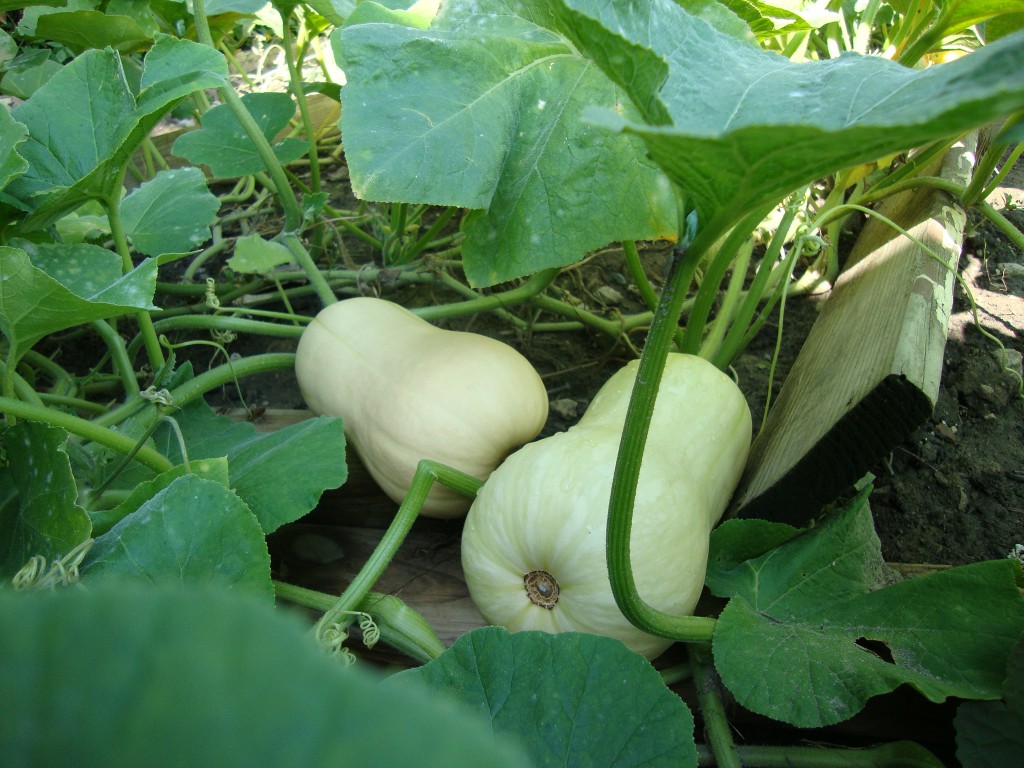
Butternut Squash (Cucurbita moschata ‘Waltham’)

Plant Introduction
Butternut Squash, or Cucurbita moschata ‘Waltham’, is a popular winter squash known for its sweet, nutty flavor and high yields.
Introduction: This plant is perfect for adding a nutritious and versatile vegetable to your garden.
Appearance: Butternut Squash ‘Waltham’ produces elongated, cylindrical fruits with tan-colored skin and orange flesh. The fruits typically weigh around 3-6 pounds and measure about 9-10 inches in length.
Flowers: The plant produces yellow flowers that develop into the distinctive squash. These flowers are also edible and can be used in various culinary dishes.
Growth Conditions: Butternut Squash thrives in full sun and well-drained, fertile soils. It prefers a soil pH between 6.0 and 6.8. Regular watering is essential, especially during dry periods.
Uses: This plant is ideal for vegetable gardens and can be used in a variety of dishes, including soups, stews, and roasted vegetables. The squash can be stored for several months, making it a great addition to your winter pantry.
Maintenance: Butternut Squash requires moderate maintenance. Space the plants 3-4 feet apart and mulch to retain moisture. Harvest the squash when the skin is hard and the stem starts to shrivel, before the first frost. Cure the squash in the sun for 5-7 days to improve storage life.
Specifications
- Heredity:
- Open Pollinated
- Days to harvest:
- 105
- General Plant Information:
- Plant Habit:
- Vine
- Life cycle:
- Annual
- Sun Requirements:
- Full Sun
- Water Preferences:
- Mesic
- Fruiting Time:
- Fall
- Late fall or early winter
- Flowers:
- Showy
- Flower Color:
- Yellow
- Edible Parts:
- Seeds or Nuts
- Fruit
- Flowers
- Eating Methods:
- Raw
- Cooked
- Wildlife Attractant:
- Bees
- Other Beneficial Insects
- Propagation: Seeds:
- Self fertile
- Pollinators:
- Various insects
- Containers:
- Not suitable for containers
- Miscellaneous:
- Monoecious
- Awards and Recognitions:
- AAS (All-America Selection®): 1970 National
- Child plants:
- One child plant
- Plant Habit:
The Tale of The Adventures of Butternut Squash
Hello there! I’m Butternut Squash, but you can call me Waltham. My full name is Cucurbita moschata ‘Waltham’, and I’m known for my sweet, nutty flavor and smooth, tan skin that make me a favorite in kitchens and gardens alike.
I thrive in sunny spots with well-drained, rich soil, where I can grow up to 12 to 18 inches tall and spread out with my trailing vines up to 8 feet long. My large, lobed leaves provide shade for my developing fruits, which start as small, green squashes and mature into my signature bell-shaped, tan-colored fruits.
One of my favorite things about being Waltham is my productivity. I’m a prolific grower, producing an abundant harvest of fruits that can weigh between 4 to 5 pounds each. My sweet, orange flesh is perfect for roasting, soups, and even pies, making me a versatile addition to any meal.
Gardeners love me because I’m easy to grow and provide a bountiful harvest. I prefer full sun and well-drained, organic-rich soil. Regular watering and a bit of mulch help me thrive. My fruits are ready to harvest in about 85 to 105 days, and they store well for months if kept in a cool, dry place.
But there’s more to me than just my good looks and taste. I’m part of the gourd family, which means I have a rich history and cultural significance. My seeds have been found in ancient archaeological sites, showing that I’ve been a staple food for centuries. My flesh is packed with vitamins A and C, making me a nutritious addition to any diet.
As the seasons change, I continue to spread my seeds, carried by the wind or by gardeners who save my seeds for the next planting season. My resilience and productivity make me a cherished member of the plant kingdom, a testament to the wonders of nature and the joy of gardening.
So, next time you see me in a garden or on your plate, remember that I’m not just a pretty face—I’m a hardworking and essential plant with a rich history and a bright future.
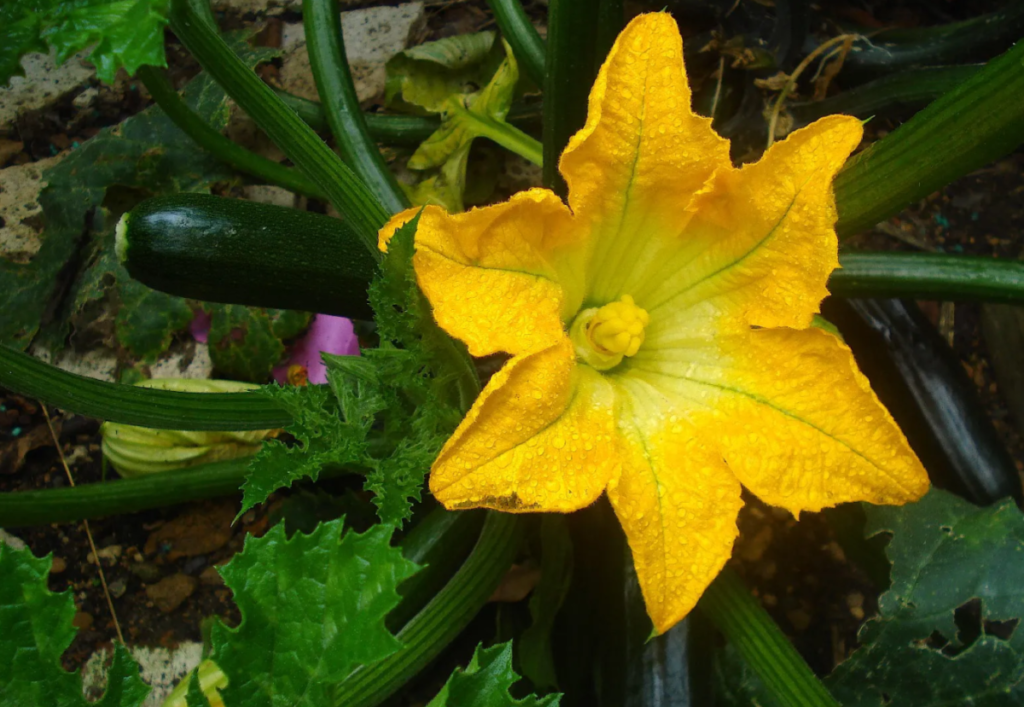
Zucchini (Cucurbita pepo ‘Noche’)

Plant Introduction
Zucchini, or Cucurbita pepo ‘Noche’, is a high-yielding summer squash known for its dark green, glossy fruits and vigorous growth.
Introduction: This plant is perfect for adding a reliable and productive vegetable to your garden.
Appearance: Zucchini ‘Noche’ features an open bush habit with very reduced spines, making it easy to harvest. The fruits are dark green, cylindrical, and typically reach 7-8 inches in length.
Flowers: The plant produces yellow flowers that develop into the zucchini fruits. These flowers are also edible and can be used in various culinary dishes.
Growth Conditions: Zucchini ‘Noche’ thrives in full sun and well-drained, fertile soils. It prefers a soil temperature of 65-85°F for optimal germination and growth. Regular watering is essential, especially during dry periods.
Uses: This plant is ideal for vegetable gardens and containers. The zucchinis are perfect for grilling, sautéing, baking, and adding to salads. The flowers can also be stuffed and fried for a delicious treat.
Maintenance: Zucchini ‘Noche’ requires moderate maintenance. Space the plants 3-4 feet apart and mulch to retain moisture. Harvest regularly when the fruits are young to keep the plants productive. Watch for common pests like cucumber beetles and squash bugs.
Specifications
- Heredity:
- Hybrid
- Country of Origin:
- USA
- Hybridizer or Originator:
- Seedway
- Days to harvest:
- 44
- General Plant Information:
- Plant Habit:
- Vine
- Life cycle:
- Annual
- Sun Requirements:
- Full Sun
- Water Preferences:
- Mesic
- Soil pH Preferences:
- Moderately acid (5.6 – 6.0)
- Slightly acid (6.1 – 6.5)
- Neutral (6.6 – 7.3)
- Plant Height:
- 2 feet
- Plant Spread:
- 3 feet
- Fruiting Time:
- Summer
- Flowers:
- Showy
- Flower Color:
- Yellow
- Flower Time:
- Late spring or early summer
- Uses:
- Vegetable
- Edible Parts:
- Fruit
- Flowers
- Eating Methods:
- Cooked
- Wildlife Attractant:
- Bees
- Resistances:
- Powdery Mildew
- Propagation: Seeds:
- Self fertile
- Sow in situ
- Pollinators:
- Various insects
- Plant Habit:
The Tale of The Adventures of Zucchini
Hello there! I’m Zucchini, but you can call me Noche. My full name is Cucurbita pepo ‘Noche’, and I’m known for my sleek, dark green fruits that bring a touch of elegance and flavor to any garden and kitchen.
I thrive in sunny spots with well-drained, fertile soil, where I can grow up to 2 to 3 feet tall and spread out with my bushy habit. My large, lobed leaves provide ample shade for my developing fruits, which start as small, green squashes and mature into my signature glossy, dark green zucchinis.
One of my favorite things about being Noche is my productivity. I’m a prolific grower, producing an abundant harvest of fruits that can be enjoyed in a variety of dishes. My tender, mild-flavored flesh is perfect for grilling, sautéing, baking, and even spiralizing into noodles, making me a versatile addition to any meal.
Gardeners love me because I’m easy to grow and provide a bountiful harvest. I prefer full sun and well-drained, organic-rich soil. Regular watering and a bit of mulch help me thrive. My fruits are ready to harvest in about 50 to 60 days, and picking them regularly encourages even more production.
But there’s more to me than just my good looks and taste. I’m part of the gourd family, which means I have a rich history and cultural significance. My origins trace back to the Americas, where I’ve been cultivated for centuries. My flesh is packed with vitamins A and C, as well as potassium, making me a nutritious addition to any diet.
As the seasons change, I continue to spread my seeds, carried by the wind or by gardeners who save my seeds for the next planting season. My resilience and productivity make me a cherished member of the plant kingdom, a testament to the wonders of nature and the joy of gardening.
So, next time you see me in a garden or on your plate, remember that I’m not just a pretty face—I’m a hardworking and essential plant with a rich history and a bright future.

Coneflower (Echinacea purpurea)

Plant Introduction
Coneflower, or Echinacea purpurea, is a hardy perennial known for its striking, daisy-like flowers and medicinal properties.
Introduction: This plant is perfect for adding vibrant color and attracting pollinators to your garden.
Appearance: Coneflowers feature large, showy flowers with purple, pink, or white petals surrounding a prominent, spiky central cone. The plant typically grows to about 2-5 feet tall and 1-2 feet wide.
Flowers: Blooming from early summer to fall, the flowers are long-lasting and attract bees, butterflies, and birds. The central cone turns brown as the seeds mature, providing food for birds in the winter.
Growth Conditions: Coneflowers thrive in full sun to partial shade and prefer well-drained soils. They are drought-tolerant once established and can handle a range of soil types, including clay and sandy soils.
Uses: This plant is ideal for perennial borders, wildflower gardens, and naturalized areas. It is also known for its medicinal properties, particularly in boosting the immune system.
Maintenance: Coneflowers require low maintenance. Deadheading spent flowers can encourage additional blooms, but leaving some seed heads can provide winter interest and food for birds. Divide clumps every few years to maintain vigor.
Specifications
- Plant Habit:
- Herb/Forb
- Life cycle:
- Perennial
- Sun Requirements:
- Full Sun to Partial Shade
- Water Preferences:
- Mesic
- Dry Mesic
- Dry
- Minimum cold hardiness:
- Zone 4a -34.4 °C (-30 °F) to -31.7 °C (-25 °F)
- Plant Height:
- 36 inches
- Plant Spread:
- 26 inches
- Flowers:
- Showy
- Fragrant
- Flower Color:
- Purple
- Red
- Flower Time:
- Summer
- Late summer or early fall
- Uses:
- Cut Flower
- Wildlife Attractant:
- Butterflies
- Resistances:
- Deer Resistant
- Drought tolerant
- Propagation: Other methods:
- Division
- Pollinators:
- Various insects
- Containers:
- Suitable in 3 gallon or larger
The Tale of The Adventures of Coneflower
Hello there! I’m Coneflower, but you can call me Echi. My full name is Echinacea purpurea, and I’m known for my vibrant, daisy-like flowers that bring a touch of wild beauty to any garden.
I thrive in sunny spots with well-drained soil, where I can grow up to 2 to 5 feet tall. My sturdy stems are topped with large, purple-pink blooms that have a distinctive, spiky central cone. These blooms appear from early summer to fall, creating a continuous display of color that attracts bees, butterflies, and birds.
One of my favorite things about being Echi is my resilience. I’m a hardy perennial that can tolerate drought, heat, and poor soil conditions. This makes me a perfect choice for prairie gardens, wildflower meadows, and pollinator gardens. My deep roots help me survive tough conditions and come back year after year.
Gardeners love me because I’m low-maintenance and add a burst of color to their landscapes. I prefer full sun but can tolerate partial shade. My flowers are long-lasting and make excellent cut flowers, adding a touch of wild beauty to indoor arrangements. Plus, I’m deer-resistant, which means I can flourish without being nibbled on by garden pests.
But there’s more to me than just my good looks. I’m part of the aster family, which means I have a rich history and cultural significance. Native Americans used my roots and leaves for medicinal purposes, treating everything from colds to infections. Today, I’m still valued for my immune-boosting properties and can be found in many herbal remedies.
As the seasons change, I continue to spread my seeds, carried by the wind to new places where I can grow and flourish. My resilience and beauty make me a cherished member of the plant kingdom, a testament to the wonders of nature and the joy of gardening.
So, next time you see me in a garden, remember that I’m not just a pretty face—I’m a hardworking and essential plant with a rich history and a bright future.
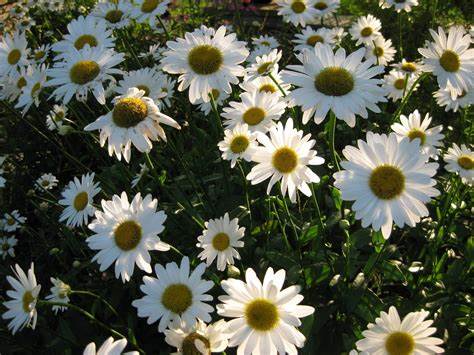
Daisy (Leucanthemum)

Plant Introduction
Daisy, or Leucanthemum, is a charming perennial known for its classic white petals and bright yellow centers.
Introduction: This plant is perfect for adding a cheerful and timeless touch to your garden.
Appearance: Daisies feature large, white, daisy-like flowers with yellow centers. The plant typically grows to about 1-3 feet tall and 1-2 feet wide, depending on the variety.
Flowers: Blooming from late spring to early fall, the flowers are long-lasting and attract bees, butterflies, and other pollinators. The blooms can be single, semi-double, or fully double, and some varieties have frilled or quilled petals.
Growth Conditions: Daisies thrive in full sun to partial shade and prefer well-drained, loamy soils. They are adaptable to a range of soil types and are drought-tolerant once established.
Uses: This plant is ideal for borders, cottage gardens, and as cut flowers. Daisies are also great for attracting pollinators and adding a natural, wildflower look to your garden.
Maintenance: Daisies require minimal maintenance. Deadheading spent flowers will encourage continuous blooming. They are generally pest-free and can be divided every few years to maintain vigor.
Specifications
- Plant Habit:
- Herb/Forb
- Sun Requirements:
- Full Sun to Partial Shade
- Flowers:
- Showy
- Flower Color:
- White
- Flower Time:
- Late spring or early summer
- Uses:
- Cut Flower
- Wildlife Attractant:
- Butterflies
- Containers:
- Suitable in 1 gallon
- Miscellaneous:
- Patent/Plant Breeders’ Rights: 12978 Can. PBRAF
The Tale of The Adventures of Daisy
Hello there! I’m Daisy, but you can call me Leucanthemum. My full name is Leucanthemum spp., and I’m known for my classic, cheerful flowers that bring a touch of timeless beauty to any garden.
I thrive in sunny spots with well-drained soil, where I can grow up to 1 to 3 feet tall. My sturdy stems are topped with bright white petals surrounding a sunny yellow center, creating a simple yet striking appearance. These blooms appear from early summer to fall, providing a continuous display of charm and elegance.
One of my favorite things about being Leucanthemum is my resilience. I’m a hardy perennial that can tolerate a variety of soil conditions, including poor soils. This makes me a perfect choice for cottage gardens, wildflower meadows, and borders. My deep roots help me survive tough conditions and come back year after year.
Gardeners love me because I’m low-maintenance and add a burst of classic beauty to their landscapes. I prefer full sun but can tolerate partial shade. My flowers are long-lasting and make excellent cut flowers, adding a touch of cheerfulness to indoor arrangements. Plus, I’m deer-resistant, which means I can flourish without being nibbled on by garden pests.
But there’s more to me than just my good looks. I’m part of the aster family, which means I have a rich history and cultural significance. My name, Leucanthemum, comes from the Greek words for “white” and “flower,” reflecting my bright, clean appearance. I’ve been used in traditional medicine and are often featured in art and literature as symbols of purity and innocence.
As the seasons change, I continue to spread my seeds, carried by the wind to new places where I can grow and flourish. My resilience and beauty make me a cherished member of the plant kingdom, a testament to the wonders of nature and the joy of gardening.
So, next time you see me in a garden, remember that I’m not just a pretty face—I’m a hardworking and essential plant with a rich history and a bright future.
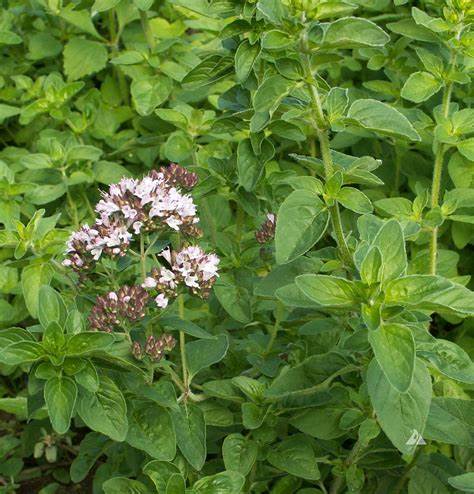
Greek Oregano (Origanum vulgare subsp. hirtum)

Plant Introduction
Greek Oregano, or Origanum vulgare subsp. hirtum, is a hardy perennial known for its strong flavor and aromatic leaves.
Introduction: This plant is perfect for adding a robust, spicy flavor to your culinary dishes.
Appearance: Greek Oregano features small, dark green leaves that are highly aromatic. The plant forms a compact, bushy habit, typically growing to about 1-2 feet tall and wide.
Flowers: Blooming in mid-summer, the tiny white flowers are arranged in clusters and add a delicate touch to the plant’s appearance.
Growth Conditions: Greek Oregano thrives in full sun and well-drained soils. It is tolerant of poor soil conditions and drought, making it an excellent choice for herb gardens and rock gardens.
Uses: This plant is ideal for culinary use, particularly in Mediterranean dishes. The leaves can be used fresh or dried in soups, sauces, salads, and marinades. It is also a great addition to herb gardens and can be used as a ground cover.
Maintenance: Greek Oregano requires minimal maintenance. Regularly shear the plant back before flowering to keep it tidy and to encourage new leaf growth. It is resistant to deer and can handle erosion, making it a resilient choice for various garden settings.
Specifications
- Plant Habit:
- Herb/Forb
- Life cycle:
- Perennial
- Sun Requirements:
- Full Sun
- Minimum cold hardiness:
- Zone 4b -31.7 °C (-25 °F) to -28.9 °C (-20 °F)
- Maximum recommended zone:
- Zone 8b
- Plant Height:
- 6 to 12 inches
- Plant Spread:
- 12 to 18 inches
- Leaves:
- Fragrant
- Flowers:
- Showy
- Flower Color:
- White
- Flower Time:
- Summer
- Uses:
- Erosion control
- Groundcover
- Culinary Herb
- Will Naturalize
- Suitable as Annual
- Resistances:
- Deer Resistant
- Propagation: Other methods:
- Layering
- Division
- Containers:
- Suitable in 3 gallon or larger
- Needs excellent drainage in pots
The Tale of The Adventures of Greek Oregano
Hello there! I’m Greek Oregano, but you can call me Hirtum. My full name is Origanum vulgare subsp. hirtum, and I’m known for my aromatic, flavorful leaves that bring a touch of Mediterranean magic to any garden and kitchen.
I thrive in sunny spots with well-drained soil, where I can grow up to 1 to 2 feet tall. My compact, bushy form is adorned with small, dark green leaves that release a delightful, spicy aroma when crushed. From mid-summer to early fall, I produce tiny white flowers that attract bees and other pollinators.
One of my favorite things about being Hirtum is my versatility. I’m perfect for herb gardens, rock gardens, and as a border plant along walkways or flower beds. My leaves are excellent for culinary uses, adding a burst of flavor to pizzas, pasta sauces, salads, and marinades. They can be used fresh or dried, retaining their pungent, hot, and spicy taste.
Gardeners love me because I’m low-maintenance and drought-tolerant once established. I prefer well-drained, sandy soils and need full sun to thrive. My compact size and uniform habit make me an ideal choice for creating low hedges or borders. Plus, I’m deer-resistant, which means I can flourish without being nibbled on by garden pests.
But there’s more to me than just my good looks and taste. I’m part of the mint family, which means I have a rich history and cultural significance. According to ancient mythology, the Greek goddess of love, Aphrodite, created my sweet, spicy scent as a symbol of happiness. My leaves have been used for centuries in traditional medicine for their antibacterial and antifungal properties.
As the seasons change, I continue to spread my seeds, carried by the wind to new places where I can grow and flourish. My resilience and beauty make me a cherished member of the plant kingdom, a testament to the wonders of nature and the joy of gardening.
So, next time you see me in a garden or use me in your cooking, remember that I’m not just a pretty face—I’m a hardworking and essential plant with a rich history and a bright future.
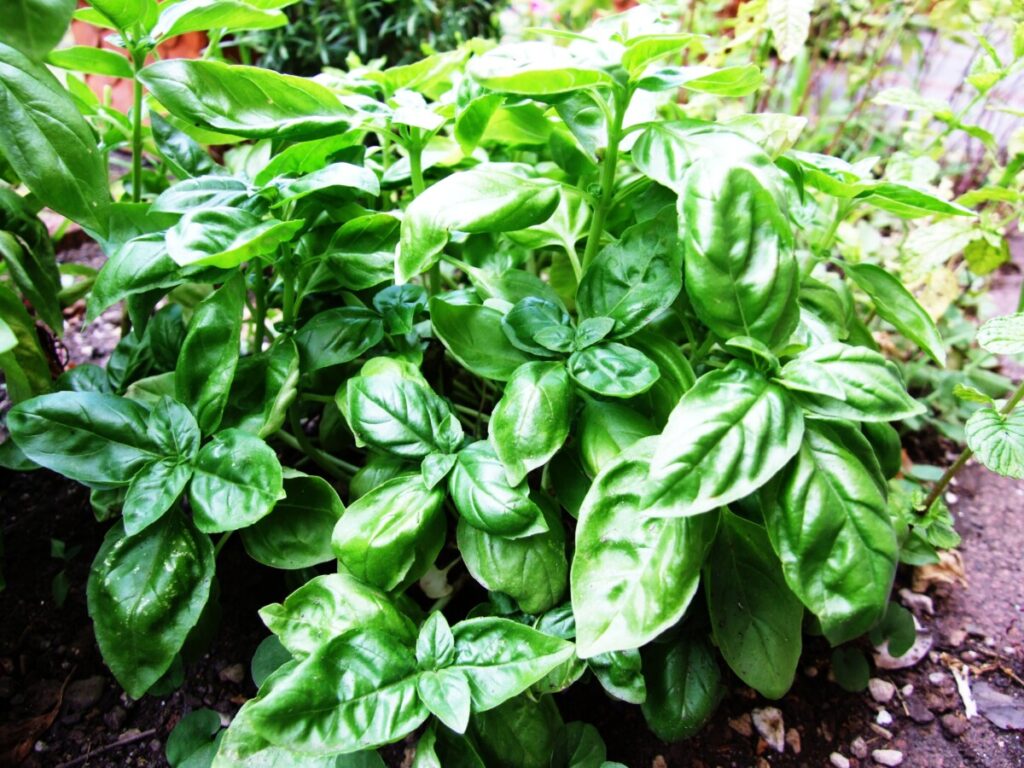
Basil (Ocimum basilicum)

Plant Introduction
Basil, or Ocimum basilicum, is a popular annual herb known for its aromatic leaves and versatility in culinary dishes.
Introduction: This plant is perfect for adding a fresh, aromatic flavor to your kitchen garden.
Appearance: Basil features bright green, ovate leaves that are smooth and slightly toothed. The plant typically grows to about 1-2 feet tall and wide, forming a bushy habit.
Flowers: Blooming in mid to late summer, the small white or purple flowers are arranged in spikes. While the flowers are attractive, they are often pinched off to encourage more leaf growth.
Growth Conditions: Basil thrives in full sun and well-drained, fertile soils. It prefers a soil pH between 6.0 and 7.5. Regular watering is essential, but avoid waterlogging the soil.
Uses: This plant is ideal for culinary use, particularly in Mediterranean and Asian dishes. The leaves can be used fresh or dried in salads, sauces, soups, and pesto. Basil is also great for companion planting, as it can help repel pests.
Maintenance: Basil requires moderate maintenance. Pinch back the growing tips to encourage bushier growth and prevent flowering. Harvest leaves regularly to keep the plant productive. Watch for common pests like aphids and downy mildew.
Specifications
- Plant Habit:
- Herb/Forb
- Life cycle:
- Perennial
- Sun Requirements:
- Full Sun
- Water Preferences:
- Mesic
- Dry Mesic
- Minimum cold hardiness:
- Zone 10b +1.7 °C (35 °F) to +4.4 °C (40 °F)
- Plant Height:
- 18-30 inches
- Plant Spread:
- 12-18 inches
- Leaves:
- Fragrant
- Broadleaf
- Flowers:
- Inconspicuous
- Flower Color:
- White
- Bloom Size:
- Under 1″
- Flower Time:
- Summer
- Late summer or early fall
- Uses:
- Culinary Herb
- Edible Parts:
- Leaves
- Eating Methods:
- Culinary Herb/Spice
- Resistances:
- Drought tolerant
- Propagation: Other methods:
- Cuttings: Stem
- Containers:
- Suitable in 3 gallon or larger
- Needs excellent drainage in pots
- Ploidy:
- Tetraploid
The Tale of The Adventures of Basil
Hello there! I’m Basil, but you can call me Basil. My full name is Ocimum basilicum, and I’m known for my aromatic, flavorful leaves that bring a touch of Mediterranean magic to any garden and kitchen.
I thrive in sunny spots with well-drained soil, where I can grow up to 1 to 2 feet tall. My bright green, glossy leaves are packed with essential oils that give me my distinctive, sweet, and slightly peppery flavor. From mid-summer to early fall, I produce small, white flowers that attract bees and other pollinators.
One of my favorite things about being Basil is my versatility. I’m perfect for herb gardens, container plantings, and even windowsill pots. My leaves are excellent for culinary uses, adding a burst of flavor to pesto, salads, pasta sauces, and marinades. They can be used fresh or dried, retaining their delightful aroma and taste.
Gardeners love me because I’m easy to grow and add a burst of flavor to their meals. I prefer well-drained, fertile soil and need full sun to thrive. Regular watering and pinching back my growing tips help me stay bushy and productive. My leaves are best harvested before my flowers bloom, ensuring the best flavor.
But there’s more to me than just my good looks and taste. I’m part of the mint family, which means I have a rich history and cultural significance. My origins trace back to India, and I’ve been cultivated for over 5,000 years. In ancient Egypt, I was used in embalming, while the Greeks and Romans believed I had medicinal properties. Today, I’m still valued for my health benefits, being rich in vitamins A and K, as well as antioxidants.
As the seasons change, I continue to spread my seeds, carried by the wind or by gardeners who save my seeds for the next planting season. My resilience and productivity make me a cherished member of the plant kingdom, a testament to the wonders of nature and the joy of gardening.
So, next time you see me in a garden or use me in your cooking, remember that I’m not just a pretty face—I’m a hardworking and essential plant with a rich history and a bright future.
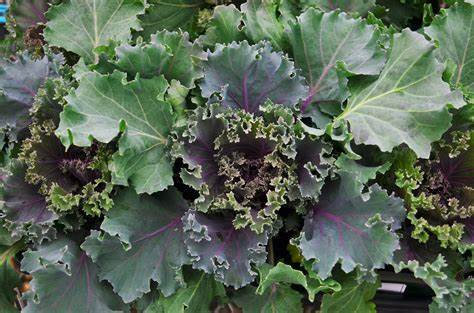
Kale (Brassica oleracea)

Plant Introduction
Kale, or Brassica oleracea (Acephala Group), is a hardy leafy green vegetable known for its nutritional benefits and versatility in the kitchen.
Introduction: This plant is perfect for adding a nutritious and robust green to your garden and meals.
Appearance: Kale features large, frilly or curly leaves that can be green, purple, or bluish-green. The plant typically grows to about 1-2 feet tall and wide, forming a rosette of leaves.
Flowers: Kale is usually grown for its leaves, but if left to flower, it produces small yellow flowers in clusters. These flowers are also edible and can be used in salads.
Growth Conditions: Kale thrives in full sun to partial shade and prefers well-drained, fertile soils. It is a cool-season crop that can tolerate frost, which often improves its flavor. Regular watering is essential, especially during dry periods.
Uses: This plant is ideal for vegetable gardens and containers. The leaves can be used fresh in salads, sautéed, or added to soups and smoothies. Kale is also known for its high nutritional value, being rich in vitamins A, C, and K, as well as calcium and antioxidants.
Maintenance: Kale requires moderate maintenance. Harvest the outer leaves regularly to encourage new growth. Watch for common pests like aphids and cabbage worms. Mulching can help retain soil moisture and suppress weeds.
Specifications
- Plant Habit:
- Herb/Forb
- Sun Requirements:
- Full Sun to Partial Shade
- Water Preferences:
- Mesic
- Uses:
- Vegetable
- Salad greens
- Cooked greens
- Edible Parts:
- Leaves
- Eating Methods:
- Raw
- Cooked
- Dynamic Accumulator:
- P (Phosphorus)
- Ca (Calcium)
- S (Sulfur)
- Mn (Manganese)
- Zn (Zinc)
- Cu (Copper)
- Propagation: Seeds:
- Self fertile
- Days to germinate: 5-10 days
- Depth to plant seed: 1/4 inch
- Sow in situ
- Start indoors
- Can handle transplanting
- Other info: Thin or plant seedlings 10 inches apart. Full sized plants in 2 months. Sow 1-2 weeks before last frost in Spring or late summer for fall harvest. Start seeds indoors 4-6 weeks before last frost.
- Pollinators:
- Self
- Bees
The Tale of The Adventures of Kale
Hello there! I’m Kale, but you can call me Brassica. My full name is Brassica oleracea, and I’m known for my nutrient-packed leaves that bring a touch of health and vitality to any garden and kitchen.
I thrive in sunny to partly shaded spots with well-drained, fertile soil, where I can grow up to 1 to 3 feet tall. My leaves are curly or flat, depending on my variety, and come in shades of green, purple, and even bluish-green. These leaves are packed with vitamins and minerals, making me a superfood favorite.
One of my favorite things about being Brassica is my resilience. I’m a hardy plant that can tolerate cold temperatures, even thriving after a light frost, which makes my leaves taste even sweeter. This makes me a perfect choice for fall and winter gardens. My deep roots help me survive tough conditions and come back year after year in some varieties.
Gardeners love me because I’m easy to grow and provide a bountiful harvest. I prefer full sun but can tolerate partial shade. Regular watering and a bit of mulch help me thrive. My leaves can be harvested continuously, providing fresh greens throughout the growing season. Plus, I’m relatively pest-resistant, which means I can flourish without much fuss.
But there’s more to me than just my good looks and taste. I’m part of the cabbage family, which means I have a rich history and cultural significance. My origins trace back to the Mediterranean and Asia Minor, where I’ve been cultivated for thousands of years. I’m known for my health benefits, being rich in vitamins A, C, and K, as well as antioxidants and fiber.
As the seasons change, I continue to spread my seeds, carried by the wind or by gardeners who save my seeds for the next planting season. My resilience and productivity make me a cherished member of the plant kingdom, a testament to the wonders of nature and the joy of gardening.
So, next time you see me in a garden or on your plate, remember that I’m not just a pretty face—I’m a hardworking and essential plant with a rich history and a bright future.
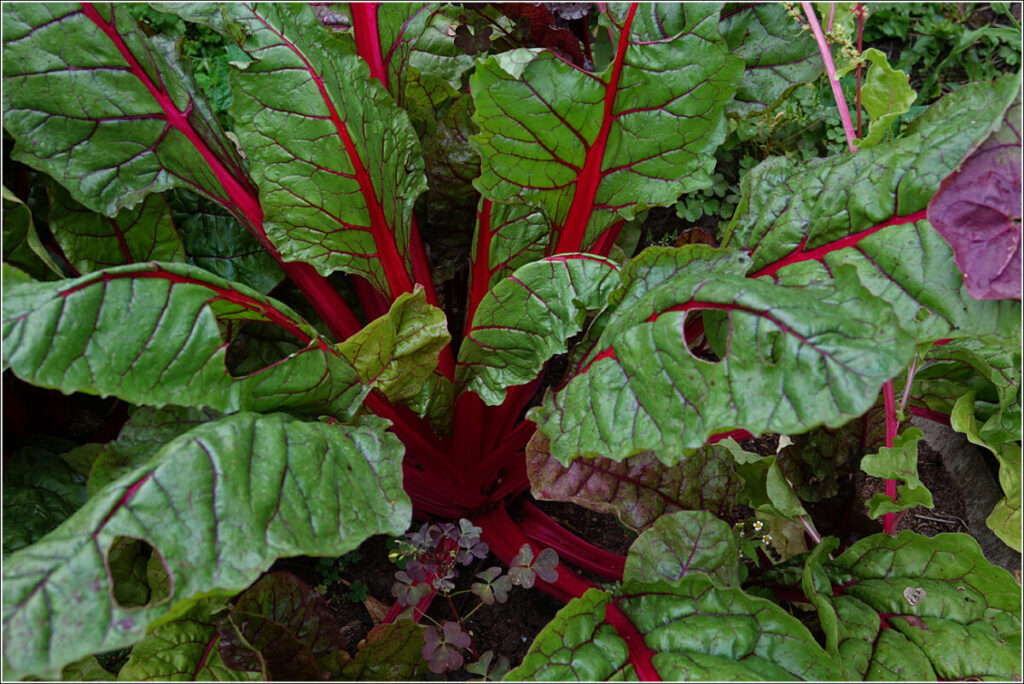
Swiss Chard (Beta vulgaris var. cicla ‘Ruby Red’)

Plant Introduction
Swiss Chard, or Beta vulgaris var. cicla ‘Ruby Red’, is a vibrant and nutritious leafy green known for its striking color and versatility in the kitchen.
Introduction: This plant is perfect for adding both visual appeal and nutritional value to your garden.
Appearance: Swiss Chard ‘Ruby Red’ features dark green, heavily crumpled leaves with deep crimson stalks and leaf veins. The plant typically grows to about 1-2 feet tall and wide.
Flowers: While Swiss Chard is primarily grown for its leaves, it can produce small, inconspicuous flowers if left to bolt. However, the focus is usually on harvesting the colorful and nutritious foliage.
Growth Conditions: Swiss Chard thrives in full sun to partial shade and prefers well-drained, fertile soils. It is tolerant of both heat and cold, making it a versatile choice for many climates. Regular watering is essential to keep the leaves tender and productive.
Uses: This plant is ideal for vegetable gardens and can be used in a variety of dishes, including salads, soups, and sautés. The leaves and stalks are both edible and can be cooked similarly to spinach or beet greens.
Maintenance: Swiss Chard requires minimal maintenance. Harvest the outer leaves regularly to encourage continuous growth. It does not bolt in hot weather like spinach, making it a reliable crop throughout the growing season. Watch for common pests like aphids and leaf miners.
Specifications
- Plant Habit:
- Herb/Forb
- Life cycle:
- Biennial
- Sun Requirements:
- Full Sun to Partial Shade
- Leaves:
- Unusual foliage color
- Uses:
- Vegetable
- Salad greens
- Cooked greens
- Suitable as Annual
- Propagation: Seeds:
- Sow in situ
- Start indoors
- Can handle transplanting
- Containers:
- Suitable in 3 gallon or larger
The Tale of The Adventures of Swiss Chard
Hello there! I’m Swiss Chard, but you can call me Ruby. My full name is Beta vulgaris var. cicla ‘Ruby Red’, and I’m known for my vibrant crimson stalks and dark green, crinkled leaves that bring a touch of elegance and nutrition to any garden and kitchen.
I thrive in sunny to partly shaded spots with well-drained, fertile soil, where I can grow up to 1 to 2 feet tall. My striking red stems and veins contrast beautifully with my deep green leaves, creating a visual feast in the garden. My leaves are not only beautiful but also packed with vitamins and minerals, making me a superfood favorite.
One of my favorite things about being Ruby is my resilience. I’m a hardy plant that can tolerate poor soil and inattention, and I can withstand frost and mild freezes. This makes me a perfect choice for both spring and fall gardens. My ability to grow back after being cut means I can provide a continuous harvest of fresh greens.
Gardeners love me because I’m easy to grow and provide a bountiful harvest. I prefer full sun but can tolerate part shade. Regular watering helps me thrive, and my leaves can be harvested continuously, providing fresh greens throughout the growing season. My sweet and slightly earthy flavor makes me a versatile addition to salads, soups, and sautés.
But there’s more to me than just my good looks and taste. I’m part of the beet family, which means I have a rich history and cultural significance. My origins trace back to the Mediterranean region, where I’ve been cultivated for centuries. My leaves and stalks are packed with vitamins A, C, and K, as well as antioxidants and fiber, making me a nutritious addition to any diet.
As the seasons change, I continue to spread my seeds, carried by the wind or by gardeners who save my seeds for the next planting season. My resilience and productivity make me a cherished member of the plant kingdom, a testament to the wonders of nature and the joy of gardening.
So, next time you see me in a garden or on your plate, remember that I’m not just a pretty face—I’m a hardworking and essential plant with a rich history and a bright future.
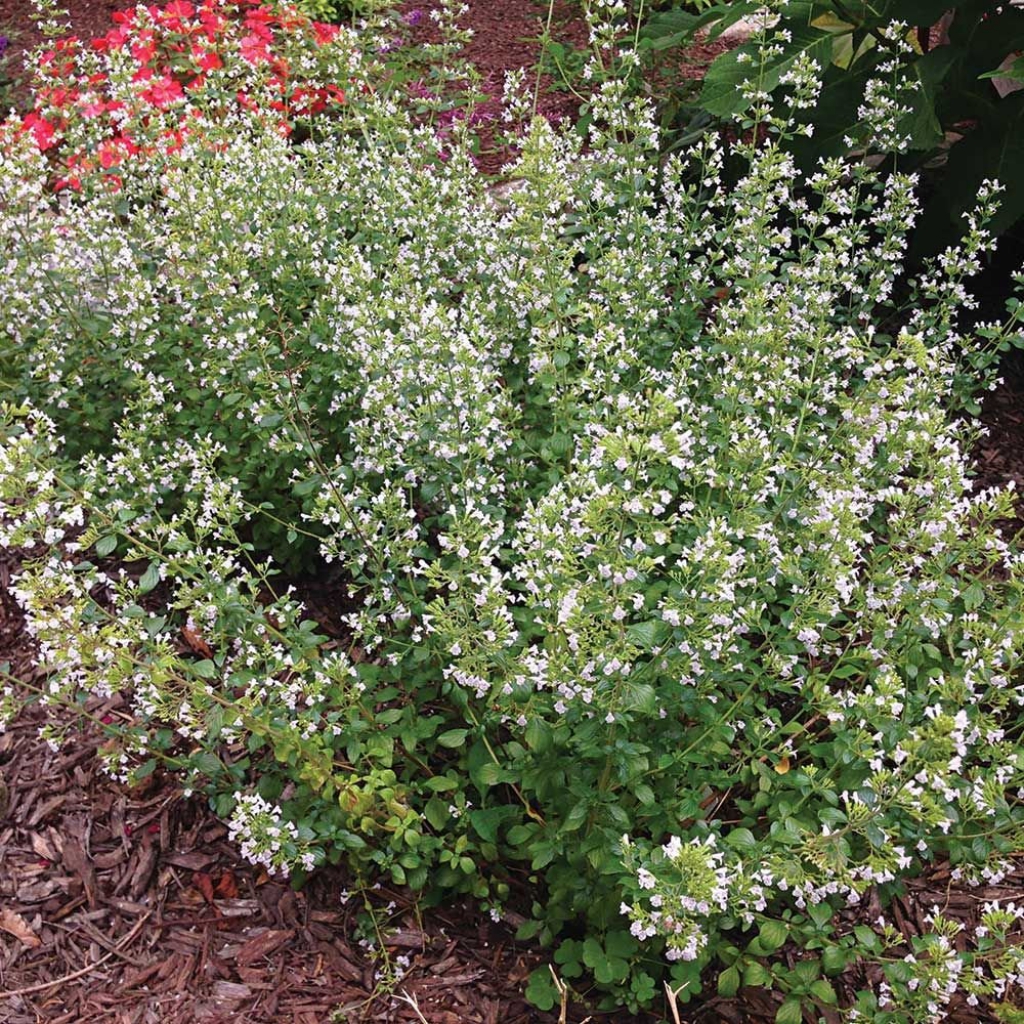
Calamint (Clinopodium nepeta subsp. nepeta)

Plant Introduction
Calamint, or Clinopodium nepeta subsp. nepeta, is a delightful perennial herb known for its aromatic foliage and charming flowers.
Introduction: This plant is perfect for adding a touch of fragrance and delicate beauty to your garden.
Appearance: Calamint features small, ovate, gray-green leaves that are highly fragrant when crushed, emitting a minty-lemon scent. The plant forms a dense, mounding habit, typically growing to about 1-1.5 feet tall and 1-2 feet wide.
Flowers: Blooming from mid-summer to fall, the tiny tubular flowers are white, pink, or lavender and are arranged in loose clusters. These flowers attract bees, butterflies, and other pollinators.
Growth Conditions: Calamint thrives in full sun and well-drained soils. It is tolerant of a range of soil types, including sandy and rocky soils, and prefers a neutral pH. This plant is drought-tolerant once established and can handle both dry and moist conditions.
Uses: This plant is ideal for cottage gardens, borders, rock gardens, and as a ground cover. The leaves can be used as an herb for flavoring or as tea, adding a minty-oregano flavor to dishes.
Maintenance: Calamint requires low maintenance. It spreads slowly by rhizomes and can self-seed. Regularly shear the plant back to maintain its shape and encourage new growth. Watch for potential issues like powdery mildew in hot, humid conditions.
Specifications
- Plant Habit:
- Herb/Forb
- Life cycle:
- Perennial
- Sun Requirements:
- Full Sun
- Full Sun to Partial Shade
- Minimum cold hardiness:
- Zone 4a -34.4 °C (-30 °F) to -31.7 °C (-25 °F)
- Maximum recommended zone:
- Zone 9b
- Plant Height:
- 18-30 inches
- Plant Spread:
- 20-36 inches
- Leaves:
- Fragrant
- Flowers:
- Showy
- Flower Color:
- White
- Bloom Size:
- Under 1″
- Flower Time:
- Summer
- Late summer or early fall
- Fall
- Suitable Locations:
- Xeriscapic
- Uses:
- Will Naturalize
- Wildlife Attractant:
- Bees
- Butterflies
- Resistances:
- Deer Resistant
- Rabbit Resistant
- Containers:
- Suitable in 1 gallon
- Suitable in 3 gallon or larger
The Tale of The Adventures of Calamint
Hello there! I’m Calamint, but you can call me Nepeta. My full name is Clinopodium nepeta subsp. nepeta, and I’m known for my aromatic, minty-lemon scented leaves and charming, delicate flowers that bring a touch of Mediterranean magic to any garden.
I thrive in sunny spots with well-drained, sandy to rocky soil, where I can grow up to 1 to 2 feet tall and wide. My dense, bushy form is adorned with small, ovate gray-green leaves that release a delightful fragrance when crushed. From mid-summer to fall, I produce tiny, tubular flowers in shades of white, pink, or lavender that attract bees, butterflies, and other pollinators.
One of my favorite things about being Nepeta is my resilience. I’m a hardy perennial that can tolerate drought, heat, and poor soil conditions. This makes me a perfect choice for cottage gardens, rock gardens, and as a ground cover. My ability to spread by rhizomes and self-seed means I can create a lush, fragrant carpet of foliage and flowers.
Gardeners love me because I’m low-maintenance and add a burst of fragrance and color to their landscapes. I prefer full sun but can tolerate partial shade. My flowers are long-lasting and make excellent additions to herbal arrangements. Plus, I’m deer and rabbit-resistant, which means I can flourish without being nibbled on by garden pests.
But there’s more to me than just my good looks and scent. I’m part of the mint family, which means I have a rich history and cultural significance. My leaves have been used for centuries in traditional medicine and culinary dishes, adding a minty-lemon flavor to teas and recipes. My flowers are a symbol of cheerfulness and positivity, often used in floral arrangements and decorations.
As the seasons change, I continue to spread my seeds, carried by the wind to new places where I can grow and flourish. My resilience and beauty make me a cherished member of the plant kingdom, a testament to the wonders of nature and the joy of gardening.
So, next time you see me in a garden, remember that I’m not just a pretty face—I’m a hardworking and essential plant with a rich history and a bright future.
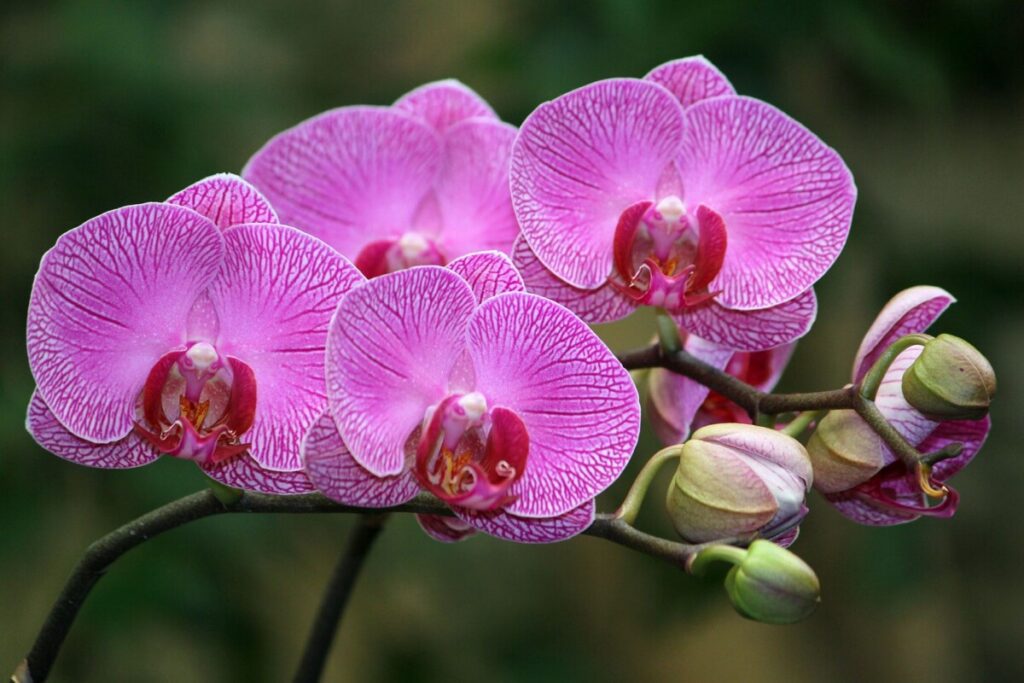
Orchid (Phalaenopsis)

Plant Introduction
Phalaenopsis, commonly known as Moth Orchid, is a popular and elegant orchid species known for its long-lasting blooms and ease of care.
Introduction: This plant is perfect for adding a touch of exotic beauty to your indoor garden.
Appearance: Phalaenopsis orchids feature large, leathery leaves and long, arching stems that bear multiple flowers. The flowers are flat and come in a variety of colors, including white, pink, yellow, and purple, often with intricate patterns.
Flowers: Blooming typically lasts for 2-3 months, and with proper care, these orchids can re-bloom multiple times a year. The flowers are long-lasting and can brighten up any indoor space.
Growth Conditions: Phalaenopsis thrives in bright, indirect light and prefers a loose orchid medium, such as bark or sphagnum moss. It requires a slightly acidic soil pH and should be watered around once a week, allowing the medium to dry out between waterings.
Uses: This plant is ideal for indoor gardens, adding a touch of elegance and color to homes and offices. It is also a popular gift plant due to its beautiful and long-lasting blooms.
Maintenance: Phalaenopsis requires moderate maintenance. Use an orchid-specific fertilizer or a balanced formula at half strength during the growing season. Ensure good air circulation around the roots and avoid letting water sit around the stem to prevent rot. Rotate the plant occasionally to ensure even growth.
Specifications
- Plant Habit:
- Herb/Forb
- Life cycle:
- Perennial
- Sun Requirements:
- Partial or Dappled Shade
- Water Preferences:
- Mesic
- Minimum cold hardiness:
- Zone 11 +4.4 °C (40 °F) to +7.2 °C (50 °F)
- Leaves:
- Evergreen
- Flowers:
- Showy
- Flower Color:
- White
- Bloom Size:
- 2″-3″
- Flower Time:
- Late winter or early spring
- Late summer or early fall
- Fall
- Late fall or early winter
- Winter
- Suitable Locations:
- Houseplant
- Resistances:
- Humidity tolerant
- Containers:
- Needs excellent drainage in pots
- Miscellaneous:
- Epiphytic
The Tale of The Adventures of Orchid
Hello there! I’m Orchid, but you can call me Phala. My full name is Phalaenopsis spp., and I’m known for my elegant, moth-like flowers that bring a touch of exotic beauty to any home or garden.
I thrive in bright, indirect light with well-drained, bark-based potting mix, where I can grow up to 1 to 2 feet tall. My broad, leathery leaves form a lush, green base, and from my arching stems, I produce stunning flowers in shades of white, pink, purple, and yellow. These blooms can last for several months, adding a continuous display of elegance.
One of my favorite things about being Phala is my adaptability. I’m perfect for indoor environments, thriving in bathrooms and kitchens where humidity levels are higher. My flowers are not only beautiful but also long-lasting, making me a favorite among orchid enthusiasts and beginners alike.
Gardeners love me because I’m relatively easy to care for and add a touch of sophistication to their homes. I prefer moderate to bright indirect light and need to be watered about once a week, allowing my potting mix to dry out slightly between waterings. My flowers can bloom multiple times a year, especially with proper care and occasional feeding with orchid fertilizer.
But there’s more to me than just my good looks. I’m part of the orchid family, which means I have a rich history and cultural significance. My name, Phalaenopsis, comes from the Greek words for “moth” and “appearance,” reflecting the moth-like shape of my flowers. I’m native to Southeast Asia, Australia, and the Philippines, where I grow as an epiphyte on trees in tropical rainforests.
As the seasons change, I continue to spread my seeds, carried by the wind or by orchid enthusiasts who propagate my keikis (baby orchids) for new plants. My resilience and beauty make me a cherished member of the plant kingdom, a testament to the wonders of nature and the joy of gardening.
So, next time you see me in a home or garden, remember that I’m not just a pretty face—I’m a hardworking and essential plant with a rich history and a bright future.
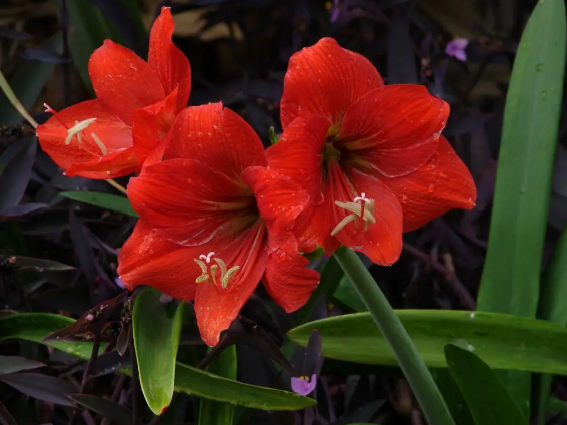
Amaryllis (Hippeastrum)

Plant Introduction
Amaryllis (Hippeastrum)
Amaryllis is a stunning bulbous plant known for its large, vibrant flowers that can brighten up any indoor or outdoor space.
Appearance: This plant features long, strap-like leaves that are dark green and glossy. The leaves can grow up to 18 inches (45 cm) long. The plant typically reaches a height of 1 to 3 feet (30 to 90 cm) and a width of up to 1 foot (30 cm).
Flowers: Blooming from late winter to early spring, the large, showy, trumpet-shaped flowers come in a variety of colors including red, pink, orange, white, and various patterns. The flowers can be 5 to 13 inches (12 to 32 cm) across.
Growth Conditions: Amaryllis thrives in well-drained soil and prefers a sunny location, though it can tolerate partial shade. It requires moderate watering, allowing the soil to dry out slightly between waterings. The plant does well in a range of temperatures but should be protected from frost.
Uses: Amaryllis is popular as a decorative plant for indoor pots and outdoor gardens. It is often used as a holiday plant due to its striking blooms. The flowers can also be cut and used in floral arrangements.
Maintenance: Amaryllis is relatively low maintenance. After flowering, the plant should be allowed to go dormant by reducing watering and letting the leaves die back naturally. The bulb can then be stored in a cool, dry place until the next growing season. Regular feeding with a balanced fertilizer during the growing season will promote healthy growth and flowering.
Specifications
- Plant Habit:
- Herb/Forb
- Life cycle:
- Perennial
- Sun Requirements:
- Full Sun to Partial Shade
- Water Preferences:
- Mesic
- Soil pH Preferences:
- Slightly acid (6.1 – 6.5)
- Neutral (6.6 – 7.3)
- Minimum cold hardiness:
- Zone 9a -6.7 °C (20 °F) to -3.9 °C (25 °F)
- Plant Height:
- 18 to 24 inches
- Plant Spread:
- 12 to 18 inches
- Leaves:
- Deciduous
- Flowers:
- Showy
- Flower Color:
- Red
- Other: Bright crimson-red with white central starburst, green throat
- Bloom Size:
- 6″-12″
- Flower Time:
- Late spring or early summer
- Summer
- Underground structures:
- Bulb
- Uses:
- Cut Flower
- Wildlife Attractant:
- Hummingbirds
- Resistances:
- Humidity tolerant
- Propagation: Other methods:
- Offsets
- Containers:
- Suitable in 1 gallon
- Needs excellent drainage in pots
The Tale of The Adventures of Amaryllis
Hello there! I’m Amaryllis, but you can call me Hippe. My full name is Hippeastrum spp., and I’m known for my bold, trumpet-shaped flowers that bring a touch of dramatic beauty to any home or garden.
I thrive in bright, indirect light with well-drained, bulb-specific potting mix, where I can grow up to 1 to 2 feet tall. My broad, strap-like leaves form a lush, green base, and from my sturdy stems, I produce stunning flowers in shades of red, pink, white, and orange. These blooms can last for several weeks, adding a continuous display of elegance.
One of my favorite things about being Hippe is my adaptability. I’m perfect for indoor environments, especially during the winter months when my vibrant blooms can brighten up any room. My flowers are not only beautiful but also long-lasting, making me a favorite among plant enthusiasts and beginners alike.
Gardeners love me because I’m relatively easy to care for and add a touch of sophistication to their homes. I prefer moderate to bright indirect light and need to be watered sparingly, allowing my potting mix to dry out between waterings. After my blooming period, I go through a dormant phase, during which I need a rest period to prepare for my next flowering cycle.
But there’s more to me than just my good looks. I’m part of the amaryllis family, which means I have a rich history and cultural significance. My name, Amaryllis, comes from a Greek myth about a love-struck maiden who pierced her heart with a golden arrow to win the love of a shepherd named Alteo. Her blood gave rise to my beautiful, scarlet flowers.
As the seasons change, I continue to spread my seeds, carried by the wind or by gardeners who propagate my bulbs for new plants. My resilience and beauty make me a cherished member of the plant kingdom, a testament to the wonders of nature and the joy of gardening.
So, next time you see me in a home or garden, remember that I’m not just a pretty face—I’m a hardworking and essential plant with a rich history and a bright future.
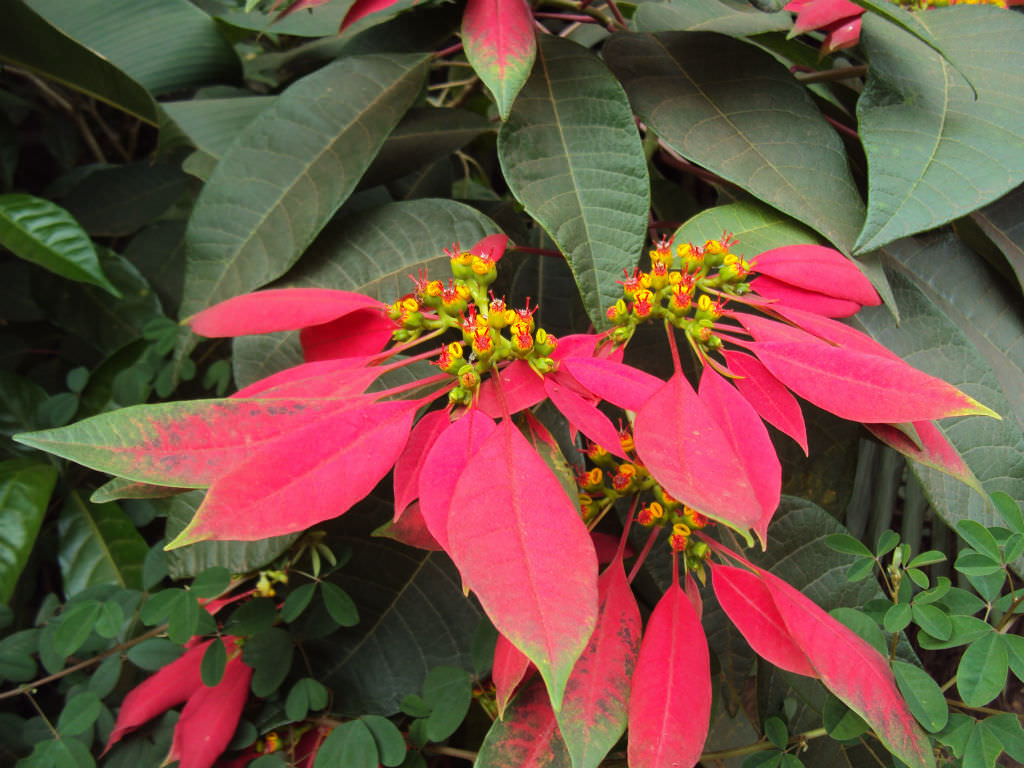
Poinsettia (Euphorbia pulcherrima)

Plant Introduction
Poinsettia (Euphorbia pulcherrima)
Poinsettia is a popular ornamental plant, especially known for its vibrant red and green foliage during the Christmas season.
Appearance: This plant features dark green, dentate leaves that measure 2.4 to 6.3 inches (6 to 16 cm) in length. The colored bracts, which are often mistaken for flower petals, come in shades of red, orange, pale green, cream, pink, white, or marbled. Poinsettias can grow as shrubs or small trees, typically reaching heights of 2 to 13 feet (0.6 to 4 meters).
Flowers: The actual flowers of the poinsettia are small, yellow, and located at the center of the bracts. These flowers are not as showy as the bracts but are crucial for the plant’s reproduction.
Growth Conditions: Poinsettias thrive in well-drained soil and prefer a sunny location. They require moderate watering and should be kept in temperatures between 60-70°F (15-21°C). They are sensitive to cold and should be protected from frost.
Uses: Poinsettias are widely used as decorative plants during the holiday season. They can be grown indoors as potted plants or outdoors in suitable climates. The plant is also used in floral arrangements and as a festive gift.
Maintenance: Poinsettias require moderate maintenance. After the holiday season, they can be kept as houseplants with proper care. This includes regular watering, avoiding overwatering, and providing adequate light. To encourage blooming for the next season, the plant needs a period of darkness for about 14 hours each day for 6-8 weeks starting in the fall.
Specifications
- Plant Habit:
- Shrub
- Life cycle:
- Perennial
- Sun Requirements:
- Full Sun to Partial Shade
- Water Preferences:
- Mesic
- Minimum cold hardiness:
- Zone 9b -3.9 °C (25 °F) to -1.1 °C (30 °F)
- Plant Height:
- Up to 10 feet or more
- Leaves:
- Evergreen
- Flowers:
- Inconspicuous
- Other: What looks like a flower on this plant is actually the colorful bracts
- Flower Color:
- Pink
- Red
- White
- Other: Coral
- Flower Time:
- Late fall or early winter
- Winter
- Suitable Locations:
- Patio/Ornamental/Small Tree
- Uses:
- Provides winter interest
- Flowering Tree
- Suitable as Annual
- Dynamic Accumulator:
- B (Boron)
- Resistances:
- Drought tolerant
- Toxicity:
- Other: All members of the genus Euphorbia produce a milky sap called latex that is toxic and can range from a mild irritant to very poisonous.
- Propagation: Other methods:
- Cuttings: Stem
- Containers:
- Needs excellent drainage in pots
The Tale of The Adventures of Poinsettia
Hello there! I’m Poinsettia, but you can call me Poin. My full name is Euphorbia pulcherrima, and I’m known for my vibrant red and green foliage that brings a touch of festive cheer to any home or garden during the holiday season.
I thrive in bright, indirect light with well-drained soil, where I can grow up to 10 feet tall in my native habitat, though I’m usually kept much smaller as a potted plant. My large, colorful bracts (often mistaken for petals) surround my tiny, yellow flowers, creating a stunning display that lasts from late fall through winter.
One of my favorite things about being Poin is my rich history and cultural significance. I’m native to Central America, where the Aztecs called me Cuetlaxochitl. They used my red bracts to make dye and my sap to treat fevers. My journey to becoming a holiday icon began in the 16th century when Franciscan monks in Mexico started using me to decorate nativity scenes.
Gardeners and holiday enthusiasts love me because I’m relatively easy to care for and add a burst of color to their homes during the winter months. I prefer moderate watering, allowing my soil to dry out slightly between waterings. With proper care, I can keep my vibrant bracts for several months, brightening up any space.
But there’s more to me than just my good looks. My name, Poinsettia, comes from Joel Roberts Poinsett, the first U.S. ambassador to Mexico, who introduced me to the United States in the early 19th century. Since then, I’ve become a symbol of Christmas cheer and goodwill, often featured in holiday decorations and celebrations.
As the seasons change, I continue to spread my seeds, carried by the wind or by gardeners who propagate my cuttings for new plants. My resilience and beauty make me a cherished member of the plant kingdom, a testament to the wonders of nature and the joy of gardening.
So, next time you see me in a home or garden, remember that I’m not just a pretty face—I’m a hardworking and essential plant with a rich history and a bright future.
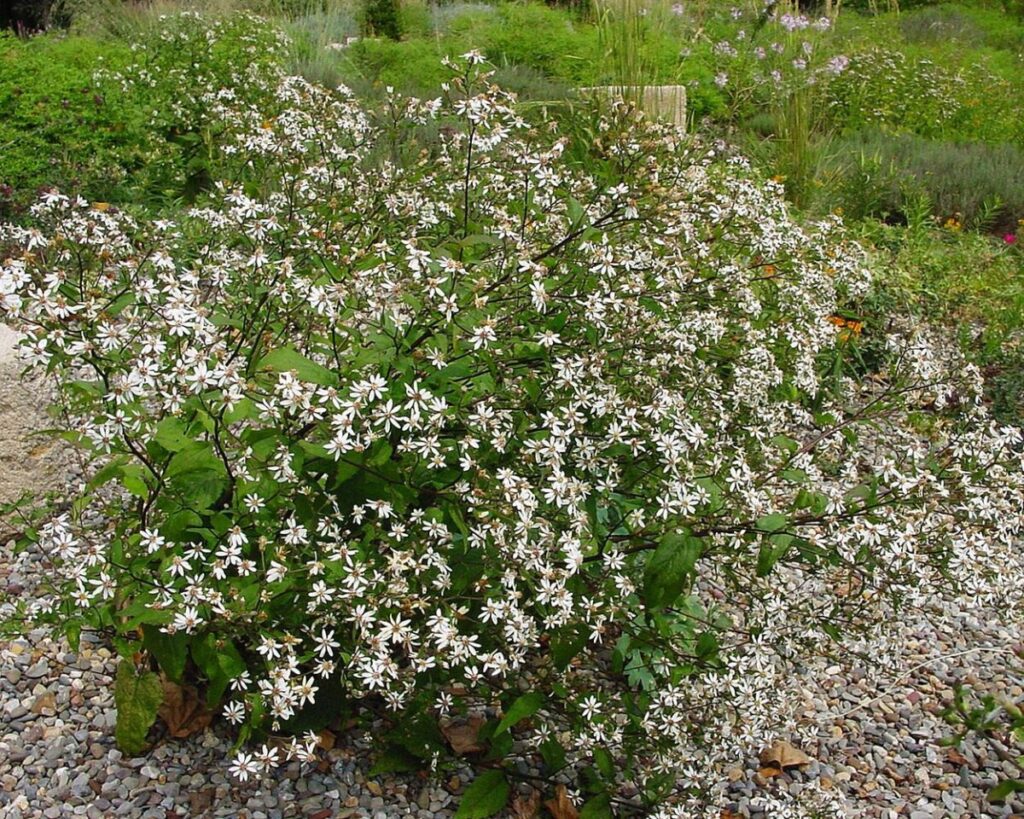
White Wood Aster (Eurybia divaricata ‘Eastern Star’)

Plant Introduction
White Wood Aster (Eurybia divaricata ‘Eastern Star’)
White Wood Aster is a versatile and adaptable native perennial known for its delicate white flowers and heart-shaped leaves.
Appearance: This plant features dark, sprawling stems that can reach up to 1.5 feet (45 cm) tall. The leaves are heart-shaped, stalked, and coarsely toothed. The plant forms a dense, mounding habit, typically growing to about 1 to 1.5 feet tall and wide.
Flowers: Blooming from late summer to early fall, the small, daisy-like flowers have white rays and yellow centers. These flowers are arranged in loose clusters and are highly attractive to bees and butterflies.
Growth Conditions: White Wood Aster thrives in average, dry to medium, well-drained soil and prefers part shade to full shade. It is tolerant of drought, heavy shade, and dry, rocky soils. Good air circulation and some morning sun help reduce the incidence of foliar diseases.
Uses: This plant is ideal for open shade gardens, woodland areas, native plant gardens, or cottage gardens. It provides excellent ground cover and adds a touch of delicate beauty to shaded areas.
Maintenance: White Wood Aster requires low maintenance. It spreads slowly by rhizomes and can self-seed. Regularly shear the plant back to maintain its shape and encourage new growth. Watch for potential issues like powdery mildew and aster wilt, especially in poorly-drained soils.
Specifications
- Plant Habit:
- Herb/Forb
- Sun Requirements:
- Full Sun
- Partial Shade to Full Shade
- Maximum recommended zone:
- Zone 8b
- Plant Height:
- 1 to 2 feet (30-60cm)
- Flowers:
- Showy
- Flower Color:
- White
- Flower Time:
- Late summer or early fall
- Fall
- Uses:
- Groundcover
- Cut Flower
- Wildlife Attractant:
- Bees
- Butterflies
- Resistances:
- Tolerates dry shade
- Propagation: Seeds:
- Sow in situ
- Start indoors
- Can handle transplanting
- Propagation: Other methods:
- Division
The Tale of The Adventures of White Wood Aster
Hello there! I’m White Wood Aster, but you can call me Eastern Star. My full name is Eurybia divaricata ‘Eastern Star’, and I’m known for my charming, daisy-like flowers that bring a touch of woodland magic to any garden.
I thrive in part shade to full shade with well-drained soil, where I can grow up to 1 to 1.5 feet tall. My dark, sprawling stems are adorned with heart-shaped, coarsely toothed leaves that provide a lush, green backdrop. From late summer to early fall, I burst into bloom with small, white flowers that have yellow to red centers, creating a delicate and enchanting display.
One of my favorite things about being Eastern Star is my resilience. I’m a hardy perennial that can tolerate drought, heavy shade, and dry, rocky soils. This makes me a perfect choice for shady gardens, woodland areas, and native plant gardens. My ability to thrive in challenging conditions means I can bring beauty to even the most difficult spots in the garden.
Gardeners love me because I’m low-maintenance and add a burst of color to their landscapes. I prefer dry to medium soil and need good air circulation to prevent foliar diseases. My flowers are long-lasting and attract butterflies, making my garden a lively and colorful place. Plus, I’m deer-resistant, which means I can flourish without being nibbled on by garden pests.
But there’s more to me than just my good looks. I’m part of the aster family, which means I have a rich history and cultural significance. My name, Eurybia, comes from the Greek word for “wide” or “broad,” reflecting my spreading habit. I’m native to the Eastern United States, where I grow in dry, open woodlands and bring a touch of wild beauty to the landscape.
As the seasons change, I continue to spread my seeds, carried by the wind to new places where I can grow and flourish. My resilience and beauty make me a cherished member of the plant kingdom, a testament to the wonders of nature and the joy of gardening.
So, next time you see me in a garden, remember that I’m not just a pretty face—I’m a hardworking and essential plant with a rich history and a bright future.
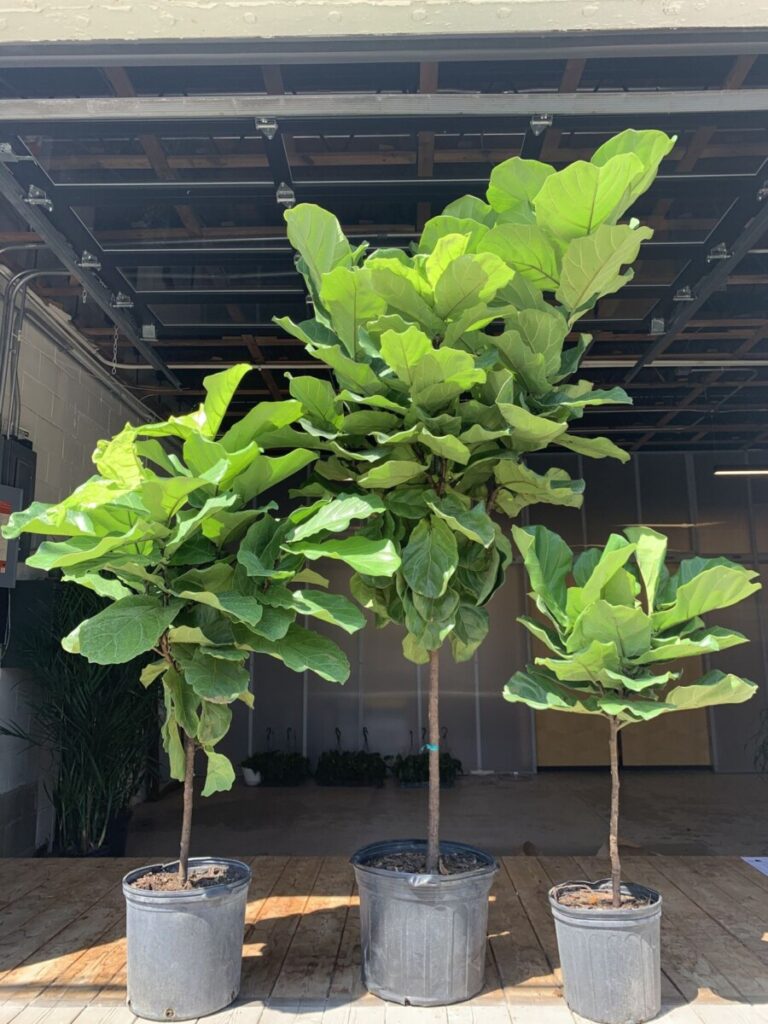
Fiddle Leaf Fig (Ficus lyrata)

Plant Introduction
Fiddle Leaf Fig (Ficus lyrata)
Fiddle Leaf Fig is a popular houseplant known for its large, glossy, violin-shaped leaves that add a touch of tropical elegance to any indoor space.
Appearance: This plant features large, broad, lyre-shaped leaves that can grow up to 18 inches (45 cm) long and 12 inches (30 cm) wide. The plant typically reaches a height of 6 to 10 feet (1.8 to 3 meters) when grown indoors, but can grow much taller in its natural habitat.
Flowers: The Fiddle Leaf Fig rarely flowers indoors. When it does, the flowers are small and insignificant, often going unnoticed.
Growth Conditions: Fiddle Leaf Fig thrives in bright, indirect light but can tolerate some direct sunlight. It prefers well-draining soil and moderate watering, allowing the top inch of soil to dry out between waterings. The plant does well in temperatures between 60-75°F (15-24°C) and appreciates higher humidity levels.
Uses: This plant is primarily used as an ornamental houseplant, adding a dramatic and stylish touch to living areas, offices, and commercial spaces. It is also popular in subtropical and tropical gardens as an ornamental tree.
Maintenance: Fiddle Leaf Fig requires moderate maintenance. Regularly dust the leaves to boost photosynthesis and rotate the pot to ensure even growth. Prune any damaged or dead leaves as needed. Be cautious of overwatering, as this can lead to root rot. The plant is also sensitive to high salt levels in the soil, so it’s beneficial to flush the soil periodically.
Specifications
- Plant Habit:
- Shrub
- Tree
- Life cycle:
- Perennial
- Sun Requirements:
- Full Sun
- Full Sun to Partial Shade
- Water Preferences:
- Mesic
- Soil pH Preferences:
- Moderately acid (5.6 – 6.0)
- Slightly acid (6.1 – 6.5)
- Neutral (6.6 – 7.3)
- Minimum cold hardiness:
- Zone 10a -1.1 °C (30 °F) to +1.7 °C (35 °F)
- Plant Height:
- 4-50 feet, or more
- Plant Spread:
- 6-35 feet
- Leaves:
- Evergreen
- Broadleaf
- Fruit:
- Showy
- Other: Globose 1.25 inch green, fleshy figs appear solitary or in pairs.
- Flowers:
- Inconspicuous
- Bloom Size:
- Under 1″
- Underground structures:
- Taproot
- Suitable Locations:
- Street Tree
- Patio/Ornamental/Small Tree
- Houseplant
- Uses:
- Windbreak or Hedge
- Shade Tree
- Resistances:
- Humidity tolerant
- Salt tolerant
- Propagation: Other methods:
- Cuttings: Stem
- Layering
- Pollinators:
- Wasps
- Containers:
- Suitable in 3 gallon or larger
- Needs excellent drainage in pots
- Miscellaneous:
- Tolerates poor soil
- Dioecious
The Tale of The Adventures of Fiddle Leaf Fig
Hello there! I’m Fiddle Leaf Fig, but you can call me Fiddle. My full name is Ficus lyrata, and I’m known for my large, violin-shaped leaves that bring a touch of tropical elegance to any home or garden.
I thrive in bright, indirect light with well-drained soil, where I can grow up to 10 feet tall indoors. My broad, leathery leaves are a deep, glossy green, and can grow up to 15 inches long, creating a striking and dramatic appearance. In my native habitat in western and central Africa, I can reach heights of up to 50 feet, but I’m quite content to stay smaller when grown as a houseplant.
One of my favorite things about being Fiddle is my adaptability. I’m perfect for indoor environments, where I can add a lush, jungle vibe to any room. My leaves are not only beautiful but also help purify the air, making me a favorite among plant enthusiasts and interior designers alike.
Gardeners love me because I’m relatively easy to care for and add a touch of sophistication to their homes. I prefer moderate to bright indirect light and need to be watered when the top inch of my soil feels dry. It’s important to avoid overwatering me, as I don’t like having “wet feet.” Regularly dusting my leaves helps me photosynthesize more efficiently and keeps me looking my best.
But there’s more to me than just my good looks. I’m part of the fig family, which means I have a rich history and cultural significance. My name, Fiddle Leaf Fig, comes from the shape of my leaves, which resemble a fiddle or violin. In my native rainforest habitat, I start my life high up in the canopy, where my seeds germinate and my roots wrap around the trunks of other trees as I grow.
As the seasons change, I continue to spread my seeds, carried by the wind or by gardeners who propagate my cuttings for new plants. My resilience and beauty make me a cherished member of the plant kingdom, a testament to the wonders of nature and the joy of gardening.
So, next time you see me in a home or garden, remember that I’m not just a pretty face—I’m a hardworking and essential plant with a rich history and a bright future.

Staghorn Fern (Platycerium superbum)

Plant Introduction
Staghorn Fern (Platycerium superbum)
Staghorn Fern is an epiphytic fern known for its unique, antler-like fronds and its ability to grow on trees or other structures.
Appearance: This plant features two types of fronds: the basal fronds, which are flat and shield-like, and the fertile fronds, which are long, arching, and resemble the antlers of a stag. The basal fronds help anchor the plant and collect organic material, while the fertile fronds can grow up to 3 feet (90 cm) long.
Flowers: Staghorn Ferns do not produce flowers. Instead, they reproduce via spores that are released from the undersides of the fertile fronds.
Growth Conditions: Staghorn Fern thrives in bright, indirect light and high humidity. It prefers a well-draining medium such as sphagnum moss or a specialized epiphyte mix. The plant should be watered regularly, allowing the medium to dry out slightly between waterings. Ideal temperatures range from 60-80°F (15-27°C).
Uses: This plant is primarily used as an ornamental feature in homes and gardens. It can be mounted on boards, hung in baskets, or attached to trees, making it a versatile addition to indoor and outdoor spaces.
Maintenance: Staghorn Fern requires moderate maintenance. Regular misting helps maintain humidity levels, and occasional feeding with a balanced fertilizer promotes healthy growth. The plant should be protected from direct sunlight and cold drafts. Pruning is minimal, usually limited to removing dead or damaged fronds.
Specifications
- Plant Habit:
- Fern
- Life cycle:
- Perennial
- Sun Requirements:
- Partial or Dappled Shade
- Water Preferences:
- Mesic
- Minimum cold hardiness:
- Zone 9b -3.9 °C (25 °F) to -1.1 °C (30 °F)
- Maximum recommended zone:
- Zone 11
- Plant Height:
- 2 to 3 feet or more
- Plant Spread:
- 2 to 3 feet
- Leaves:
- Evergreen
- Suitable Locations:
- Houseplant
- Resistances:
- Humidity tolerant
- Propagation: Other methods:
- Offsets
- Containers:
- Needs excellent drainage in pots
- Miscellaneous:
- Epiphytic
The Tale of The Adventures of Staghorn Fern
Hello there! I’m Staghorn Fern, but you can call me Stag. My full name is Platycerium superbum, and I’m known for my unique, antler-like fronds that bring a touch of wild elegance to any home or garden.
I thrive in bright, indirect light with well-drained soil or mounted on a board, where I can grow up to 3 feet wide indoors. My fronds are a vibrant green and can grow up to 2-3 feet long, creating a striking and dramatic appearance. In my native habitat in tropical and subtropical regions, I can grow even larger, happily clinging to trees and rocks.
One of my favorite things about being Stag is my epiphytic nature. I’m perfect for indoor environments, where I can add a lush, forest vibe to any room. My fronds are not only beautiful but also help purify the air, making me a favorite among plant enthusiasts and interior designers alike.
Gardeners love me because I’m relatively easy to care for and add a touch of sophistication to their homes. I prefer bright, indirect light and need to be watered when my mounting medium feels dry. It’s important to avoid overwatering me, as I don’t like having “wet feet.” Regularly misting my fronds helps me stay hydrated and keeps me looking my best.
But there’s more to me than just my good looks. I’m part of the fern family, which means I have a rich history and cultural significance. My name, Staghorn Fern, comes from the shape of my fronds, which resemble the antlers of a stag. In my native rainforest habitat, I start my life high up in the canopy, where my spores germinate and my roots wrap around the trunks of other trees as I grow.
As the seasons change, I continue to spread my spores, carried by the wind or by gardeners who propagate my cuttings for new plants. My resilience and beauty make me a cherished member of the plant kingdom, a testament to the wonders of nature and the joy of gardening.
So, next time you see me in a home or garden, remember that I’m not just a pretty face—I’m a hardworking and essential plant with a rich history and a bright future.
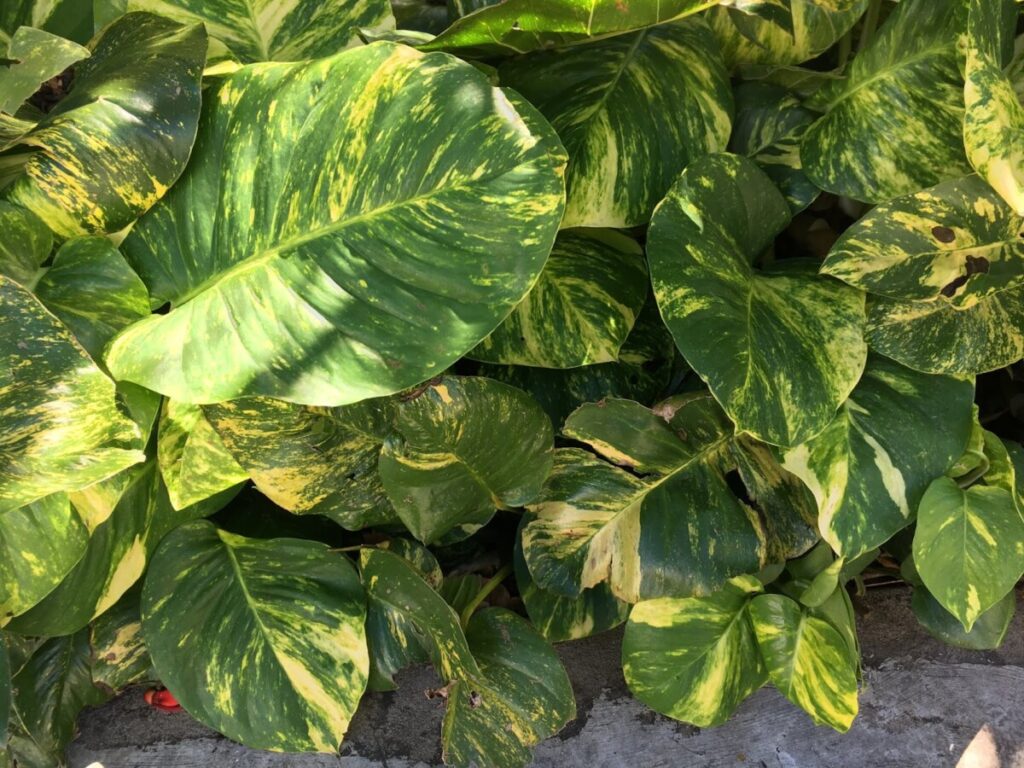
Pothos (Epipremnum aureum)

Plant Introduction
Pothos (Epipremnum aureum), also known as Golden Pothos or Devil’s Ivy, is a highly adaptable and popular houseplant celebrated for its striking, heart-shaped foliage and remarkable resilience.
Appearance: This plant features glossy, heart-shaped leaves that vary in color from deep green to variegated patterns of yellow, white, or even light green. Its trailing vines can grow quite long, making it an ideal plant for hanging baskets or as a climbing vine with proper support.
Flowers: While Pothos can flower in its natural habitat, it rarely does so indoors. When it does flower, it produces a spadix surrounded by a green spathe.
Growth Conditions: Pothos thrives in a wide range of lighting conditions, from low light to bright, indirect light. It prefers a well-draining potting mix and should be allowed to dry out completely between waterings. Ideal temperatures range from 60-85°F (15-29°C).
Uses: This plant is predominantly used as a decorative indoor plant, appreciated for its aesthetic appeal and air-purifying properties. It can be trained to climb a support or trail from a pot or hanging basket.
Maintenance: Pothos requires minimal maintenance. Regular watering, allowing the soil to dry out between waterings, and occasional feeding with a balanced houseplant fertilizer during the growing season are sufficient. It is important to keep the plant away from direct sunlight to prevent leaf burn. Pruning can help manage its size and shape.
Specifications
- Plant Habit:
- Herb/Forb
- Vine
- Life cycle:
- Perennial
- Sun Requirements:
- Partial or Dappled Shade
- Partial Shade to Full Shade
- Water Preferences:
- Mesic
- Dry Mesic
- Soil pH Preferences:
- Slightly acid (6.1 – 6.5)
- Neutral (6.6 – 7.3)
- Minimum cold hardiness:
- Zone 9b -3.9 °C (25 °F) to -1.1 °C (30 °F)
- Maximum recommended zone:
- Zone 11
- Plant Height:
- Trails and climbs 10 to 25 feet or more
- Leaves:
- Unusual foliage color
- Evergreen
- Other: Golden-yellow
- Suitable Locations:
- Houseplant
- Uses:
- Groundcover
- Resistances:
- Tolerates dry shade
- Humidity tolerant
- Drought tolerant
- Toxicity:
- Other: All parts of the plant contain calcium oxalates which are toxic if ingested; the plant may also cause skin irritation in some individuals
- Propagation: Other methods:
- Cuttings: Stem
- Containers:
- Suitable in 3 gallon or larger
- Suitable for hanging baskets
- Needs repotting every 2 to 3 years
- Miscellaneous:
- Epiphytic
The Tale of The Adventures of Pothos
Hello there! I’m Pothos, but you can call me Pothos. My full name is Epipremnum aureum, and I’m known for my trailing vines and heart-shaped leaves that bring a touch of lush greenery to any home or garden.
I thrive in low to bright indirect light with well-drained soil, where I can grow up to 10 feet long indoors. My leaves are a vibrant green, often variegated with white, yellow, or pale green, creating a striking and dramatic appearance. In my native habitat in the Solomon Islands, I can grow even longer, happily climbing trees and spreading across the forest floor.
One of my favorite things about being Pothos is my versatility. I’m perfect for indoor environments, where I can add a cascading, jungle vibe to any room. My leaves are not only beautiful but also help purify the air, making me a favorite among plant enthusiasts and interior designers alike.
Gardeners love me because I’m incredibly easy to care for and add a touch of nature to their homes. I prefer moderate to bright indirect light and need to be watered when the top inch of my soil feels dry. It’s important to avoid overwatering me, as I don’t like having “wet feet.” Regularly trimming my vines helps me stay healthy and keeps me looking my best.
But there’s more to me than just my good looks. I’m part of the Araceae family, which means I have a rich history and cultural significance. My name, Pothos, comes from the Greek word for “longing,” reflecting my trailing nature. In my native rainforest habitat, I start my life on the forest floor, where my roots anchor me as I climb towards the light.
As the seasons change, I continue to spread my vines, carried by the wind or by gardeners who propagate my cuttings for new plants. My resilience and beauty make me a cherished member of the plant kingdom, a testament to the wonders of nature and the joy of gardening.
So, next time you see me in a home or garden, remember that I’m not just a pretty face—I’m a hardworking and essential plant with a rich history and a bright future.
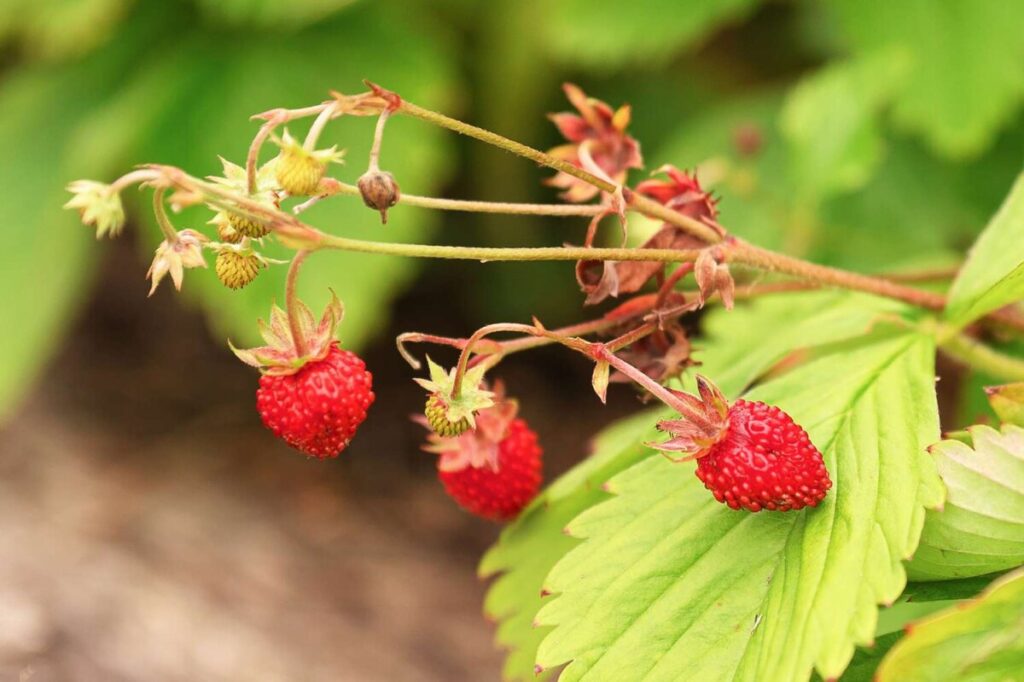
Wild Strawberry (Fragaria virginiana)

Plant Introduction
Wild Strawberry (Fragaria virginiana), also known as Scarlett Strawberry, is a herbaceous perennial plant known for its sweet, edible fruits and its ability to spread as a ground cover.
Appearance: This plant typically grows to about 4-7 inches tall and spreads indefinitely by runners (stolons) that root to form new plants. It features three-part leaves and white, five-petaled flowers that bloom in the spring. The fruits are small, red, and highly fragrant.
Flowers: Wild Strawberry produces white, five-petaled flowers on drooping stems that emerge from the crown. These flowers bloom in the spring and are followed by the development of small, sweet, and edible strawberries in early summer.
Growth Conditions: Wild Strawberry thrives in part sun to part shade and prefers fertile, well-drained loam soil with a pH of 5.5 to 6.5. It is hardy in USDA zones 5a-9b and grows best in cooler temperatures of spring and fall, often going dormant in the heat of summer.
Uses: This plant is used both as a ground cover and for its edible fruit. It is also beneficial for erosion control on slopes and supports wildlife, including specialized bees.
Maintenance: Wild Strawberry requires minimal maintenance. It benefits from regular watering, especially during dry periods, and occasional feeding with a balanced fertilizer. Pruning is generally limited to removing dead or damaged leaves and runners to control its spread.
Specifications
- Plant Habit:
- Herb/Forb
- Life cycle:
- Perennial
- Sun Requirements:
- Full Sun
- Full Sun to Partial Shade
- Water Preferences:
- Mesic
- Dry Mesic
- Minimum cold hardiness:
- Zone 2 -45.6 °C (-50 °F) to -42.8 °C (-45°F)
- Maximum recommended zone:
- Zone 9a
- Plant Height:
- 4-7 inches
- Plant Spread:
- 4-7 inches
- Leaves:
- Good fall color
- Evergreen
- Broadleaf
- Fruit:
- Showy
- Fruiting Time:
- Late spring or early summer
- Flowers:
- Showy
- Flower Color:
- White
- Bloom Size:
- Under 1″
- Flower Time:
- Spring
- Late spring or early summer
- Uses:
- Provides winter interest
- Groundcover
- Medicinal Herb
- Will Naturalize
- Edible Parts:
- Fruit
- Eating Methods:
- Raw
- Cooked
- Dynamic Accumulator:
- Fe (Iron)
- Wildlife Attractant:
- Bees
- Birds
- Resistances:
- Tolerates foot traffic
- Propagation: Seeds:
- Provide light
- Stratify seeds: Sow at -4 to +4°C (24-39°F) for 12 weeks, move to 20°C (68°F) for germination.
- Days to germinate: erratic, can take up to 26 weeks
- Suitable for wintersowing
- Sow in situ
- Can handle transplanting
- Propagation: Other methods:
- Stolons and runners
- Pollinators:
- Moths and Butterflies
- Flies
- Bees
The Tale of The Adventures of Wild Strawberry
Hello there! I’m Wild Strawberry, but you can call me Wild. My full name is Fragaria virginiana, and I’m known for my sweet, red berries and charming, trifoliate leaves that bring a touch of natural beauty to any home or garden.
I thrive in full sun to partial shade with well-drained soil, where I can spread out and create a lush ground cover. My leaves are a vibrant green, and my delicate white flowers bloom in the spring, followed by my delicious red berries. In my native habitat across North America, I can be found in meadows, forests, and along roadsides, happily spreading my runners and producing fruit.
One of my favorite things about being Wild is my ability to thrive in various environments. I’m perfect for gardens, where I can add a touch of wild charm and provide tasty treats. My berries are not only delicious but also packed with vitamins, making me a favorite among gardeners and foragers alike.
Gardeners love me because I’m relatively easy to care for and add a touch of nature to their homes. I prefer full sun to partial shade and need to be watered regularly, especially during dry spells. It’s important to keep my soil well-drained to avoid root rot. Regularly harvesting my berries encourages more fruit production and keeps me looking my best.
But there’s more to me than just my good looks and tasty berries. I’m part of the Rosaceae family, which means I have a rich history and cultural significance. My name, Wild Strawberry, comes from my natural, untamed growth habit and my sweet, fragrant fruit. In my native habitat, I start my life from seeds or runners, spreading across the ground and creating new plants.
As the seasons change, I continue to spread my seeds, carried by animals or by gardeners who propagate my runners for new plants. My resilience and beauty make me a cherished member of the plant kingdom, a testament to the wonders of nature and the joy of gardening.
So, next time you see me in a home or garden, remember that I’m not just a pretty face—I’m a hardworking and essential plant with a rich history and a bright future.
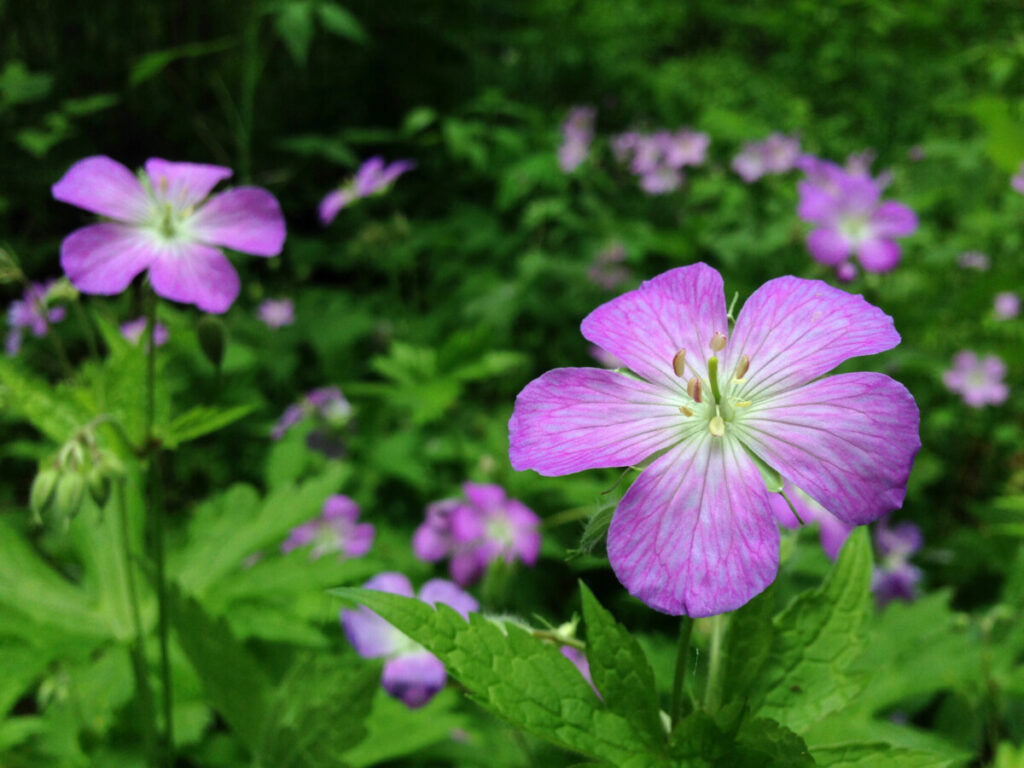
Wild Geranium (Geranium maculatum)

Plant Introduction
Wild Geranium (Geranium maculatum), also known as Spotted Geranium or Wood Geranium, is a perennial plant native to the woodlands of eastern North America. It is admired for its delicate flowers and its ability to thrive in shaded areas.
Appearance: This plant typically grows to about 1-2.5 feet tall and forms loose clusters of basal leaves and flowering stems. The leaves are deeply lobed and palmate, with coarse hairs on the undersides. The flowers are usually rose-pink to lavender, with five rounded petals and fine, darker-colored lines that serve as nectar guides.
Flowers: Wild Geranium blooms from late spring to early summer, producing clusters of 1-1.5 inch wide flowers. Each flower has five petals, five green sepals, and ten yellow stamens surrounding a single pistil. The flowers attract a variety of pollinators, including bees and flies.
Growth Conditions: Wild Geranium thrives in part sun to part shade and prefers well-drained, fertile loam soil. It is hardy in USDA zones 3-8 and grows best in cooler temperatures. The plant can tolerate full sun if the soil remains consistently moist.
Uses: This plant is often used in woodland gardens or as a ground cover. It supports pollinators and other wildlife, making it a valuable addition to naturalized areas. Historically, it has also been used for medicinal purposes by Native Americans.
Maintenance: Wild Geranium requires minimal maintenance. It benefits from regular watering during dry periods and occasional feeding with a balanced fertilizer. Pruning is generally limited to removing dead or damaged leaves and stems. The plant spreads slowly by rhizomes and can be divided in the fall or early spring.
Specifications
- Plant Habit:
- Herb/Forb
- Life cycle:
- Perennial
- Sun Requirements:
- Partial Shade to Full Shade
- Water Preferences:
- Mesic
- Dry Mesic
- Minimum cold hardiness:
- Zone 4a -34.4 °C (-30 °F) to -31.7 °C (-25 °F)
- Plant Height:
- 8-30 inches
- Plant Spread:
- 6-18 inches
- Leaves:
- Deciduous
- Fruiting Time:
- Summer
- Flowers:
- Showy
- Other: flowers have five petals; cut plants back almost all the way to the ground after flowering
- Flower Color:
- Mauve
- Pink
- Purple
- Bloom Size:
- 1″-2″
- Flower Time:
- Late spring or early summer
- Underground structures:
- Rhizome
- Uses:
- Groundcover
- Will Naturalize
- Wildlife Attractant:
- Bees
- Resistances:
- Tolerates dry shade
- Propagation: Seeds:
- Can handle transplanting
- Other info: Self-seeding
- Propagation: Other methods:
- Cuttings: Stem
- Division
- Other: Take semi-ripe cuttings during the late summer when growth has slowed and plant stems have become firmer.
- Pollinators:
- Hoverflies
- Moths and Butterflies
- Flies
- Bees
- Containers:
- Suitable in 3 gallon or larger
- Needs excellent drainage in pots
The Tale of The Adventures of Wild Geranium
Hello there! I’m Wild Geranium, but you can call me Wild. My full name is Geranium maculatum, and I’m known for my delicate, pinkish-purple flowers and deeply lobed leaves that bring a touch of woodland charm to any home or garden.
I thrive in partial shade to full sun with well-drained soil, where I can grow up to 1-2 feet tall. My leaves are a vibrant green, and my flowers bloom in the spring, creating a striking and delicate appearance. In my native habitat across eastern North America, I can be found in woodlands, meadows, and along roadsides, happily spreading my seeds and forming dense patches.
One of my favorite things about being Wild is my adaptability. I’m perfect for gardens, where I can add a touch of natural beauty and support local pollinators. My flowers are not only beautiful but also attract bees, butterflies, and other beneficial insects, making me a favorite among gardeners and nature enthusiasts alike.
Gardeners love me because I’m relatively easy to care for and add a touch of nature to their homes. I prefer partial shade to full sun and need to be watered regularly, especially during dry spells. It’s important to keep my soil well-drained to avoid root rot. Regularly deadheading my flowers encourages more blooms and keeps me looking my best.
But there’s more to me than just my good looks. I’m part of the Geraniaceae family, which means I have a rich history and cultural significance. My name, Wild Geranium, comes from my natural, untamed growth habit and my charming flowers. In my native habitat, I start my life from seeds, spreading across the ground and creating new plants.
As the seasons change, I continue to spread my seeds, carried by the wind or by gardeners who propagate my cuttings for new plants. My resilience and beauty make me a cherished member of the plant kingdom, a testament to the wonders of nature and the joy of gardening.
So, next time you see me in a home or garden, remember that I’m not just a pretty face—I’m a hardworking and essential plant with a rich history and a bright future.

Turtlehead (Chelone glabra)

Plant Introduction
Turtlehead (Chelone glabra), also known as White Turtlehead, is a herbaceous perennial plant native to North America. It is appreciated for its unique, turtlehead-shaped flowers and its ability to thrive in moist environments.
Appearance: This plant typically grows to about 2-3 feet tall and forms clumps of erect, leafy stems. The leaves are lance-shaped, coarsely toothed, and arranged in pairs along the stems. The flowers are white or pink-tinged, two-lipped, and resemble the head of a turtle, hence the common name.
Flowers: Turtlehead blooms from late summer into fall, producing dense terminal spikes of showy flowers. Each flower is about 1-1.5 inches long and attracts a variety of pollinators, including butterflies and hummingbirds.
Growth Conditions: Turtlehead thrives in full sun to partial shade and prefers organically rich, medium to wet soils. It is hardy in USDA zones 3-8 and grows best in consistently moist environments, such as along stream banks, in bog gardens, or near ponds.
Uses: This plant is often used in borders, woodland gardens, rain gardens, and near water features. It supports pollinators and serves as a larval host plant for the Baltimore Checkerspot butterfly. Its attractive flowers and foliage make it a valuable addition to naturalized areas.
Maintenance: Turtlehead requires low maintenance. It benefits from regular watering to keep the soil moist and occasional feeding with a balanced fertilizer. Pruning is generally limited to cutting back the stems at the end of the growing season. Pinching the stems in spring can result in a shorter, bushier plant that is less prone to flopping.
Specifications
- Plant Habit:
- Herb/Forb
- Life cycle:
- Perennial
- Sun Requirements:
- Full Sun
- Full Sun to Partial Shade
- Water Preferences:
- Wet
- Wet Mesic
- Mesic
- Soil pH Preferences:
- Slightly acid (6.1 – 6.5)
- Neutral (6.6 – 7.3)
- Minimum cold hardiness:
- Zone 3 -40 °C (-40 °F) to -37.2 °C (-35)
- Maximum recommended zone:
- Zone 8b
- Plant Height:
- 1.5 to 5 feet, usually 2 to 4 feet
- Plant Spread:
- About 2 feet wide
- Leaves:
- Other: 3 to 6″ long, opposite, lanceolate, and toothed
- Flowers:
- Showy
- Flower Color:
- Lavender
- White
- Flower Time:
- Summer
- Late summer or early fall
- Uses:
- Cut Flower
- Will Naturalize
- Wildlife Attractant:
- Bees
- Resistances:
- Flood Resistant
- Propagation: Seeds:
- Needs specific temperature
- Days to germinate: 14 to 30
- Propagation: Other methods:
- Division
- Pollinators:
- Moths and Butterflies
- Bumblebees
- Containers:
- Not suitable for containers
- Miscellaneous:
- Monoecious
The Tale of The Adventures of Turtlehead
Hello there! I’m Turtlehead, but you can call me Turtle. My full name is Chelone glabra, and I’m known for my unique, turtle-shaped flowers that bring a touch of whimsical charm to any home or garden.
I thrive in partial shade to full sun with moist, well-drained soil, where I can grow up to 2-3 feet tall. My leaves are a vibrant green, and my white flowers, often tinged with pink, bloom from mid-summer to fall, creating a striking and delicate appearance. In my native habitat across the eastern United States, I can be found along stream banks, in moist woods, and in swampy areas, happily spreading my seeds and forming dense clumps.
One of my favorite things about being Turtle is my ability to thrive in wet conditions. I’m perfect for gardens, especially rain gardens or areas with damp soil, where I can add a touch of natural beauty and support local pollinators. My flowers are not only beautiful but also attract bees, butterflies, and hummingbirds, making me a favorite among gardeners and nature enthusiasts alike.
Gardeners love me because I’m relatively easy to care for and add a touch of nature to their homes. I prefer partial shade to full sun and need to be watered regularly, especially during dry spells. It’s important to keep my soil moist to ensure my best growth. Regularly deadheading my flowers encourages more blooms and keeps me looking my best.
But there’s more to me than just my good looks. I’m part of the Plantaginaceae family, which means I have a rich history and cultural significance. My name, Turtlehead, comes from the shape of my flowers, which resemble the head of a turtle. In my native habitat, I start my life from seeds, spreading across the ground and creating new plants.
As the seasons change, I continue to spread my seeds, carried by the wind or by gardeners who propagate my cuttings for new plants. My resilience and beauty make me a cherished member of the plant kingdom, a testament to the wonders of nature and the joy of gardening.
So, next time you see me in a home or garden, remember that I’m not just a pretty face—I’m a hardworking and essential plant with a rich history and a bright future.

Common Milkweed (Asclepias syriaca)

Plant Introduction
Common Milkweed (Asclepias syriaca), also known as Butterfly Flower or Silkweed, is a herbaceous perennial plant native to North America. It is well-known for its role in supporting monarch butterflies and other pollinators.
Appearance: This plant typically grows to about 2-6 feet tall and features thick, oblong leaves that are about 4-8 inches long. The leaves are gray-green and velvety. Common Milkweed produces clusters of pinkish-purple, star-shaped flowers that are highly fragrant and appear from early to late summer.
Flowers: The flowers of Common Milkweed are arranged in domed clusters called umbels. Each flower is about 0.75 inches long and has a sweet, strong scent that attracts a variety of pollinators, including bees, butterflies, and hummingbirds.
Growth Conditions: Common Milkweed thrives in full sun and prefers dry to medium, well-drained soil. It is hardy in USDA zones 3-9 and can tolerate a wide range of soil types, including sandy and rocky soils. This plant is drought-tolerant once established and requires minimal watering.
Uses: This plant is primarily used in naturalized areas, butterfly gardens, and meadows. It is crucial for the lifecycle of monarch butterflies, as it serves as the host plant for their larvae. Additionally, it supports a wide range of other pollinators and beneficial insects.
Maintenance: Common Milkweed requires low maintenance. It benefits from occasional watering during prolonged dry periods and does not require fertilization. To control its spread, it is advisable to remove seed pods before they open. Pruning is generally limited to cutting back the stems at the end of the growing season.
Specifications
- Plant Habit: Herb/Forb
- Life cycle: Perennial
- Sun Requirements: Full Sun to Partial Shade
- Water Preferences:
- Wet Mesic
- Mesic
- Dry Mesic
- Dry
- Minimum cold hardiness: Zone 3 -40 °C (-40 °F) to -37.2 °C (-35)
- Maximum recommended zone: Zone 9b
- Plant Height: 24 – 48 inches
- Plant Spread: 12 – 18 inches
- Fruit: Showy
- Flowers:
- Showy
- Fragrant
- Flower Color:
- Pink
- Purple
- Bloom Size: Under 1″
- Flower Time:
- Late spring or early summer
- Summer
- Underground structures: Rhizome
- Uses:
- Vegetable
- Will Naturalize
- Edible Parts:
- Stem
- Fruit
- Flowers
- Eating Methods: Cooked
- Wildlife Attractant:
- Bees
- Butterflies
- Resistances:
- Deer Resistant
- Rabbit Resistant
- Humidity tolerant
- Drought tolerant
- Toxicity:
- Leaves are poisonous
- Roots are poisonous
- Propagation: Seeds:
- Provide light
- Stratify seeds: 1 month cold moist treatment
- Suitable for wintersowing
- Sow in situ
- Propagation: Other methods: Division
- Pollinators:
- Wasps
- Moths and Butterflies
- Flies
- Bees
- Containers: Not suitable for containers
The Tale of The Adventures of Common Milkweed
Hello there! I’m Common Milkweed, but you can call me Milkweed. My full name is Asclepias syriaca, and I’m known for my fragrant, pinkish-purple flower clusters and broad leaves that bring a touch of wild beauty to any home or garden.
I thrive in full sun with well-drained soil, where I can grow up to 5 feet tall. My leaves are a vibrant green, and my flowers bloom from early to late summer, creating a striking and sweetly scented appearance. In my native habitat across eastern North America, I can be found in meadows, fields, and along roadsides, happily spreading my seeds and forming dense colonies.
One of my favorite things about being Milkweed is my role in supporting wildlife. I’m perfect for gardens, especially pollinator gardens, where I can add a touch of natural beauty and provide essential resources for local insects. My flowers are not only beautiful but also attract bees, butterflies, and other beneficial insects. I’m especially important for Monarch butterflies, as my leaves are a crucial food source for their caterpillars.
Gardeners love me because I’m relatively easy to care for and add a touch of nature to their homes. I prefer full sun and need to be watered regularly, especially during dry spells. It’s important to keep my soil well-drained to avoid root rot. Regularly deadheading my flowers encourages more blooms and keeps me looking my best.
But there’s more to me than just my good looks. I’m part of the Apocynaceae family, which means I have a rich history and cultural significance. My name, Common Milkweed, comes from the milky sap that exudes from my leaves and stems when damaged. In my native habitat, I start my life from seeds, spreading across the ground and creating new plants.
As the seasons change, I continue to spread my seeds, carried by the wind or by gardeners who propagate my cuttings for new plants. My resilience and beauty make me a cherished member of the plant kingdom, a testament to the wonders of nature and the joy of gardening.
So, next time you see me in a home or garden, remember that I’m not just a pretty face—I’m a hardworking and essential plant with a rich history and a bright future.
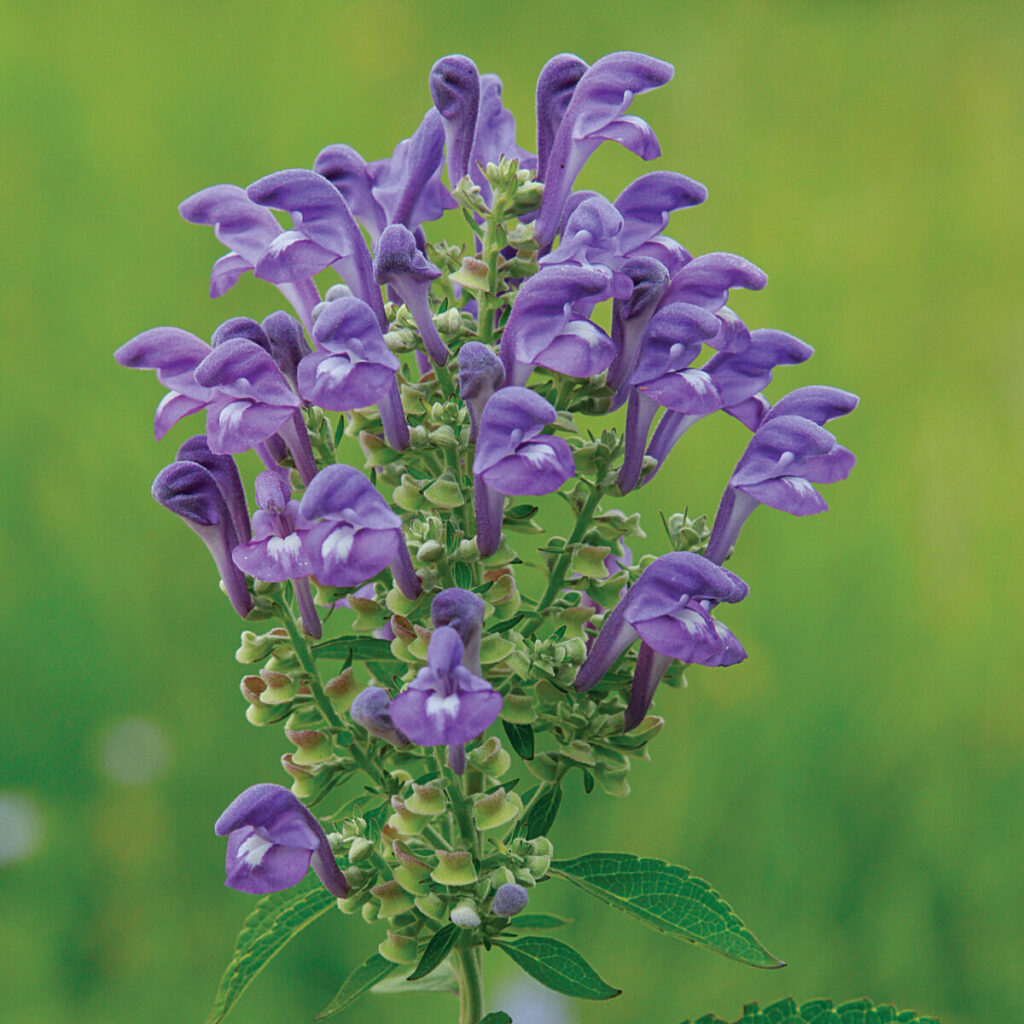
Skullcap (Scutellaria incana)

Plant Introduction
Skullcap (Scutellaria incana), also known as Downy Skullcap or Hoary Skullcap, is a perennial plant in the mint family (Lamiaceae) native to North America. It is valued for its attractive flowers and its ability to thrive in a variety of conditions.
Appearance: This plant typically grows to about 2-3 feet tall and features erect, square stems covered with fine white hairs. The leaves are ovate, toothed, and gray-green. The flowers are small, two-lipped, and lavender-blue, arranged in open racemes from mid to late summer.
Flowers: Skullcap produces small, two-lipped flowers that are lavender-blue and bloom in loose racemes. These flowers appear from mid to late summer and are known for their unique shape, which resembles a helmet or cap.
Growth Conditions: Skullcap thrives in full sun to partial shade and prefers well-drained soils. It is tolerant of a wide range of soil types, including sandy, clay, and rocky soils. This plant is hardy in USDA zones 5-8 and is drought-tolerant once established.
Uses: This plant is often used in borders, naturalized areas, meadows, and wildflower gardens. It supports pollinators, including bees and butterflies, and is resistant to deer and rabbits. Its attractive flowers and foliage make it a valuable addition to sunny gardens.
Maintenance: Skullcap requires low maintenance. It benefits from occasional watering during prolonged dry periods and does not require fertilization. Pruning is generally limited to cutting back the stems at the end of the growing season. The plant can be propagated by seed or division in the spring.
Specifications
- Plant Habit: Herb/Forb
- Life cycle: Perennial
- Sun Requirements:
- Full Sun
- Full Sun to Partial Shade
- Partial or Dappled Shade
- Water Preferences:
- Mesic
- Dry Mesic
- Soil pH Preferences:
- Slightly acid (6.1 – 6.5)
- Neutral (6.6 – 7.3)
- Minimum cold hardiness: Zone 4a -34.4 °C (-30 °F) to -31.7 °C (-25 °F)
- Maximum recommended zone: Zone 9b
- Plant Height: 30 inches to 36 inches
- Plant Spread: 12 to 16 inches
- Leaves:
- Unusual foliage color
- Other: Lance-shaped, up to 6″ long, blunt teeth along the margins; soft, downy hairs underneath
- Flowers: Showy
- Flower Color:
- Blue
- White
- Other: hooded upper lip is blue, lower lip has 3 lobes w/ a white center
- Bloom Size: 1″-2″
- Flower Time: Summer
- Uses: Will Naturalize
- Wildlife Attractant:
- Bees
- Butterflies
- Resistances:
- Deer Resistant
- Rabbit Resistant
- Drought tolerant
- Propagation: Other methods: Division
- Pollinators:
- Moths and Butterflies
- Bumblebees
- Bees
- Miscellaneous:
- Tolerates poor soil
- Monoecious
The Tale of The Adventures of Common Milkweed
Hello there! I’m Common Milkweed, but you can call me Milkweed. My full name is Asclepias syriaca, and I’m known for my fragrant, pinkish-purple flower clusters and broad leaves that bring a touch of wild beauty to any home or garden.
I thrive in full sun with well-drained soil, where I can grow up to 5 feet tall. My leaves are a vibrant green, and my flowers bloom from early to late summer, creating a striking and sweetly scented appearance. In my native habitat across eastern North America, I can be found in meadows, fields, and along roadsides, happily spreading my seeds and forming dense colonies.
One of my favorite things about being Milkweed is my role in supporting wildlife. I’m perfect for gardens, especially pollinator gardens, where I can add a touch of natural beauty and provide essential resources for local insects. My flowers are not only beautiful but also attract bees, butterflies, and other beneficial insects. I’m especially important for Monarch butterflies, as my leaves are a crucial food source for their caterpillars.
Gardeners love me because I’m relatively easy to care for and add a touch of nature to their homes. I prefer full sun and need to be watered regularly, especially during dry spells. It’s important to keep my soil well-drained to avoid root rot. Regularly deadheading my flowers encourages more blooms and keeps me looking my best.
But there’s more to me than just my good looks. I’m part of the Apocynaceae family, which means I have a rich history and cultural significance. My name, Common Milkweed, comes from the milky sap that exudes from my leaves and stems when damaged. In my native habitat, I start my life from seeds, spreading across the ground and creating new plants.
As the seasons change, I continue to spread my seeds, carried by the wind or by gardeners who propagate my cuttings for new plants. My resilience and beauty make me a cherished member of the plant kingdom, a testament to the wonders of nature and the joy of gardening.
So, next time you see me in a home or garden, remember that I’m not just a pretty face—I’m a hardworking and essential plant with a rich history and a bright future.
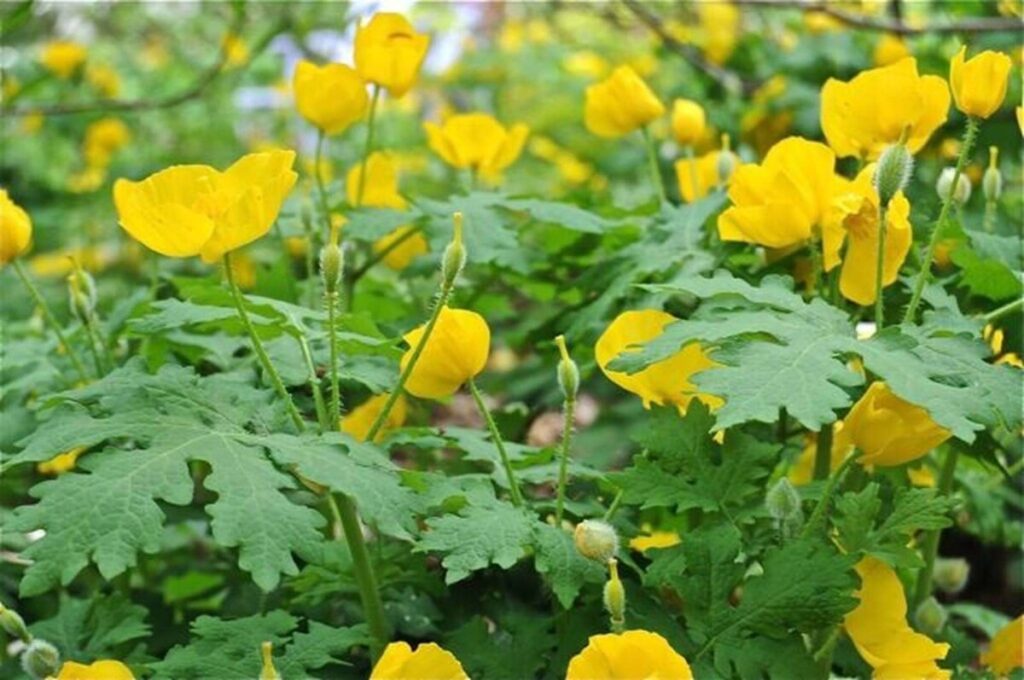
Celandine Poppy (Stylophorum diphyllum)

Plant Introduction
Celandine Poppy (Stylophorum diphyllum), also known as Wood Poppy, is a herbaceous perennial plant native to the moist woodlands of eastern North America. It is admired for its bright yellow flowers and its ability to thrive in shaded areas.
Appearance: This plant typically grows to about 1-1.5 feet tall and spreads up to a foot across. It features pinnately lobed, bluish-green leaves with silvery undersides. The stems are covered with fine hairs and may have a purple base, giving them a bristly appearance.
Flowers: Celandine Poppy produces bright yellow, buttercup-like flowers in early to mid-spring. Each flower has four petal-like sepals and numerous yellow stamens. The flowers are borne in small clusters at the ends of leafless stems and can continue to bloom intermittently throughout the summer if deadheaded.
Growth Conditions: Celandine Poppy thrives in part shade to full shade and prefers medium to wet, humusy soils. It is hardy in USDA zones 4-9 and grows best in consistently moist environments, such as along stream banks or in woodland gardens.
Uses: This plant is often used in naturalized areas, shade gardens, and rain gardens. Its bright flowers and attractive foliage make it a valuable addition to shaded landscapes. It also supports pollinators and can help control erosion on slopes.
Maintenance: Celandine Poppy requires moderate maintenance. It benefits from regular watering to keep the soil moist and occasional feeding with a balanced fertilizer. Pruning is generally limited to removing dead or damaged leaves and stems. Deadheading the flowers can encourage additional blooms throughout the growing season.
Specifications
- Plant Habit: Herb/Forb
- Life cycle: Perennial
- Sun Requirements:
- Partial Shade to Full Shade
- Water Preferences:
- Wet Mesic
- Mesic
- Dry Mesic
- Minimum cold hardiness: Zone 4a -34.4 °C (-30 °F) to -31.7 °C (-25 °F)
- Maximum recommended zone: Zone 9a
- Plant Height: 12-15 inches
- Plant Spread: 12 inches
- Leaves: Unusual foliage color
- Fruit: Showy
- Fruiting Time:
- Spring
- Summer
- Flowers: Showy
- Flower Color:
- Orange
- Yellow
- Bloom Size:
- 1″-2″
- 2″-3″
- Flower Time:
- Late winter or early spring
- Spring
- Late spring or early summer
- Uses: Will Naturalize
- Toxicity:
- Leaves are poisonous
- Roots are poisonous
- Fruit is poisonous
- Other: Bitter-tasting with orange sap
- Propagation: Seeds:
- Stratify seeds: Needs a warm period, then a cold period, then a cool period for germination.
- Sow in situ
- Other info: Seed will die if it dries out.
- Propagation: Other methods: Cuttings: Root
- Pollinators:
- Self
- Flies
- Bees
- Containers: Not suitable for containers
The Tale of The Adventures of Celandine Poppy
Hello there! I’m Celandine Poppy, but you can call me Celandine. My full name is Stylophorum diphyllum, and I’m known for my bright yellow flowers and deeply lobed leaves that bring a touch of woodland charm to any home or garden.
I thrive in part shade to full shade with medium to wet, well-drained soil, where I can grow up to 1-1.5 feet tall. My leaves are a vibrant green with a silvery underside, and my cheerful, four-petaled flowers bloom in the spring, creating a striking and delicate appearance. In my native habitat across eastern North America, I can be found in moist woodlands and along streambanks, happily spreading my seeds and forming dense patches.
One of my favorite things about being Celandine is my ability to brighten shady areas. I’m perfect for gardens, especially woodland gardens, rain gardens, and naturalized areas, where I can add a touch of natural beauty and support local pollinators. My flowers are not only beautiful but also attract bees and other beneficial insects, making me a favorite among gardeners and nature enthusiasts alike.
Gardeners love me because I’m relatively easy to care for and add a touch of nature to their homes. I prefer part shade to full shade and need to be watered regularly, especially during dry spells. It’s important to keep my soil moist to ensure my best growth. Regularly deadheading my flowers encourages more blooms and keeps me looking my best.
But there’s more to me than just my good looks. I’m part of the Papaveraceae family, which means I have a rich history and cultural significance. My name, Celandine Poppy, comes from my bright, poppy-like flowers. In my native habitat, I start my life from seeds, spreading across the ground and creating new plants.
As the seasons change, I continue to spread my seeds, carried by the wind or by gardeners who propagate my cuttings for new plants. My resilience and beauty make me a cherished member of the plant kingdom, a testament to the wonders of nature and the joy of gardening.
So, next time you see me in a home or garden, remember that I’m not just a pretty face—I’m a hardworking and essential plant with a rich history and a bright future.
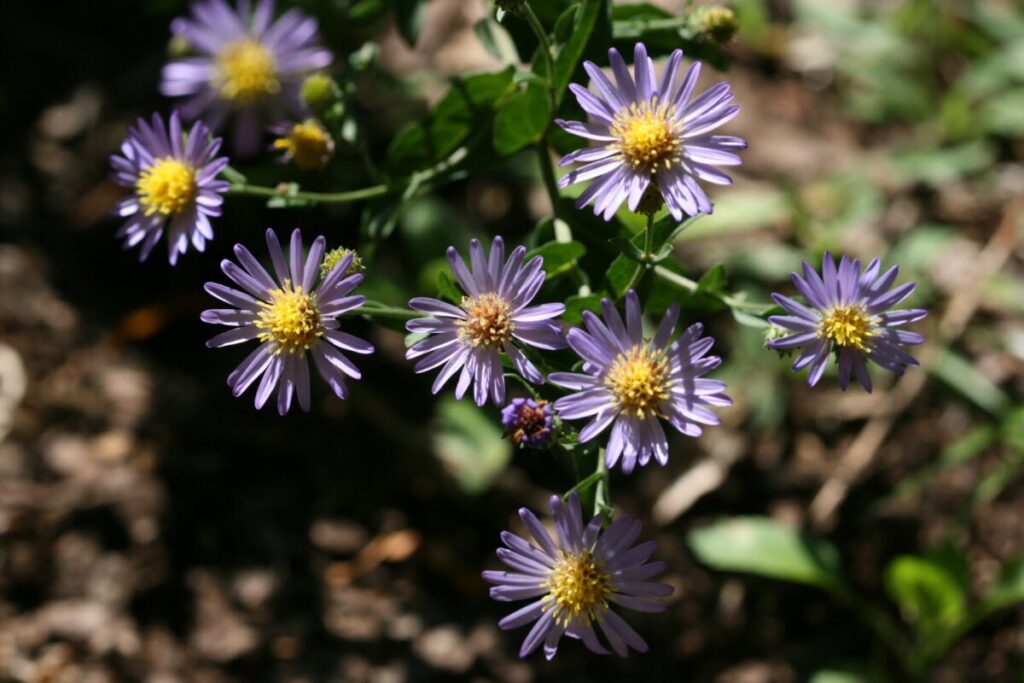
Late Purple Aster (Symphyotrichum patens)

Plant Introduction
Late Purple Aster (Symphyotrichum patens), also known as Spreading Aster, is a perennial herbaceous plant native to the eastern United States. It is appreciated for its late-season blooms and its ability to attract pollinators.
Appearance: This plant typically grows to about 2-3 feet tall and features slender, arching stems. The leaves are ovate-oblong, rough-textured, and hairy, clasping the stem. The flowers are daisy-like, with blue to violet rays and yellow centers, appearing singly at the ends of the stems.
Flowers: Late Purple Aster blooms from late summer into fall, producing showy, fragrant flowers that are about 1 inch in diameter. These flowers provide late-season nectar for butterflies and bees, making it a valuable addition to pollinator gardens.
Growth Conditions: Late Purple Aster thrives in full sun to partial shade and prefers dry to medium, well-drained soils. It is hardy in USDA zones 4-8 and can tolerate drought and poor soil conditions. Good air circulation helps reduce the incidence of foliar diseases.
Uses: This plant is often used in borders, woodland edges, cottage gardens, and rock gardens. Its high drought and salt tolerance make it suitable for coastal gardens. It supports a variety of pollinators, including specialized bees.
Maintenance: Late Purple Aster requires low maintenance. It benefits from occasional watering during prolonged dry periods and does not require fertilization. Pruning is generally limited to cutting back the stems at the end of the growing season. Improving drainage and ensuring good air circulation can help reduce the incidence of foliar diseases.
Specifications
- Plant Habit: Herb/Forb
- Sun Requirements:
- Full Sun
- Full Sun to Partial Shade
- Partial or Dappled Shade
- Maximum recommended zone: Zone 9b
- Plant Height: 12 – 36 inches
- Plant Spread: 12 – 18 inches
- Fruit: Edible to birds
- Flowers: Showy
- Flower Color:
- Lavender
- Pink
- White
- Bloom Size: Under 1″
- Flower Time:
- Late summer or early fall
- Fall
- Underground structures: Rhizome
- Uses:
- Groundcover
- Cut Flower
- Will Naturalize
- Wildlife Attractant:
- Bees
- Butterflies
- Propagation: Seeds:
- Stratify seeds: 3 months at 40 degrees
- Suitable for wintersowing
- Sow in situ
- Start indoors
- Can handle transplanting
- Propagation: Other methods:
- Cuttings: Stem
- Division
The Tale of The Adventures of Late Purple Aster
Hello there! I’m Late Purple Aster, but you can call me Aster. My full name is Symphyotrichum patens, and I’m known for my graceful, arching stems and vibrant, blue-purple flowers that bring a touch of late-season beauty to any home or garden.
I thrive in full sun to partial shade with well-drained soil, where I can grow up to 2-3 feet tall and 2 feet wide. My leaves are a vibrant green, and my showy, fragrant flowers bloom from August to October, creating a striking and delicate appearance. In my native habitat across the southeastern United States, I can be found in rocky or sandy open woods and thickets, happily spreading my seeds and forming dense patches.
One of my favorite things about being Aster is my ability to provide late-season nectar. I’m perfect for gardens, especially pollinator gardens, where I can add a touch of natural beauty and support local insects. My flowers are not only beautiful but also attract bees, butterflies, and other beneficial insects, making me a favorite among gardeners and nature enthusiasts alike.
Gardeners love me because I’m relatively easy to care for and add a touch of nature to their homes. I prefer full sun to partial shade and need to be watered regularly, especially during dry spells. It’s important to keep my soil well-drained to avoid root rot. Regularly deadheading my flowers encourages more blooms and keeps me looking my best.
But there’s more to me than just my good looks. I’m part of the Asteraceae family, which means I have a rich history and cultural significance. My name, Late Purple Aster, comes from my late blooming season and my vibrant flower color. In my native habitat, I start my life from seeds, spreading across the ground and creating new plants.
As the seasons change, I continue to spread my seeds, carried by the wind or by gardeners who propagate my cuttings for new plants. My resilience and beauty make me a cherished member of the plant kingdom, a testament to the wonders of nature and the joy of gardening.
So, next time you see me in a home or garden, remember that I’m not just a pretty face—I’m a hardworking and essential plant with a rich history and a bright future.
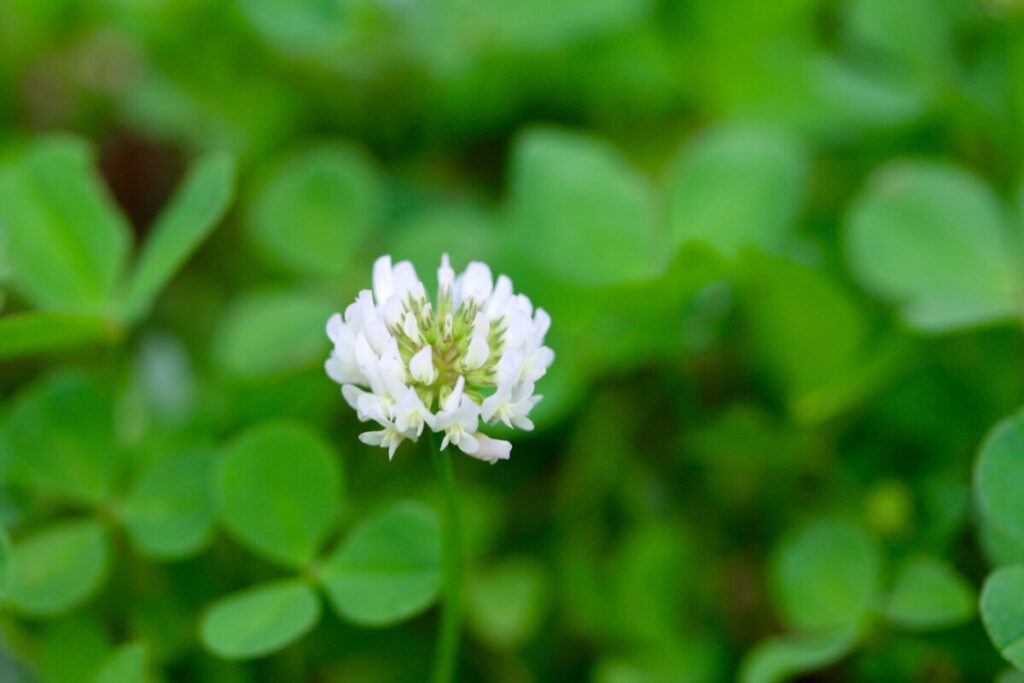
White Clover (Trifolium repens)

Plant Introduction
White Clover (Trifolium repens), also known as Dutch Clover, is a low-growing perennial plant commonly found in lawns, pastures, and along roadsides. It is valued for its ability to improve soil quality and its attractive, small white flowers.
Appearance: This plant typically grows to about 0.25-0.50 feet tall and spreads up to 1-1.5 feet wide. It features trifoliate leaves, each consisting of three oval-shaped leaflets, often marked with a characteristic white crescent. The flowers are small, white, and sometimes tinged with pink, forming dense, rounded clusters.
Flowers: White Clover produces small, white flowers that appear in early summer. Each flower head consists of 40 to 80 florets, creating a cluster that measures about 0.5 to 1.5 inches in diameter. These flowers are highly attractive to bees and other pollinators.
Growth Conditions: White Clover thrives in full sun to partial shade and prefers well-drained, moist soils. It is hardy in USDA zones 3-10 and grows best when temperatures range from 50 to 85°F (10 to 29°C). This plant is capable of fixing its own nitrogen, which allows it to thrive in low-fertility soils.
Uses: This plant is often used for livestock grazing, soil improvement, and erosion control. It was traditionally included in lawn seed mixes to enhance turf quality. White Clover is also appreciated for its ability to aerate the soil and its drought tolerance.
Maintenance: White Clover requires minimal maintenance. It benefits from regular watering, especially during dry periods, and does not require fertilization due to its nitrogen-fixing ability. Pruning is generally limited to mowing if it is used in lawns. It can spread aggressively, so it may need to be managed to prevent it from overtaking other plants.
Specifications
- Plant Habit: Herb/Forb
- Life cycle: Perennial
- Sun Requirements:
- Full Sun
- Full Sun to Partial Shade
- Partial or Dappled Shade
- Water Preferences: Mesic
- Flower Color: White
- Bloom Size: Under 1″
- Flower Time:
- Spring
- Late spring or early summer
- Summer
- Late summer or early fall
- Underground structures: Taproot
- Uses:
- Erosion control
- Groundcover
- Will Naturalize
- Suitable for forage
- Edible Parts: Flowers
- Dynamic Accumulator:
- Nitrogen fixer
- P (Phosphorus)
- Wildlife Attractant:
- Bees
- Butterflies
- Propagation: Seeds: Sow in situ
- Pollinators: Bees
- Miscellaneous: Tolerates poor soil
The Tale of The Adventures of White Clover
Hello there! I’m White Clover, but you can call me Clover. My full name is Trifolium repens, and I’m known for my charming, trifoliate leaves and small, white flower clusters that bring a touch of pastoral beauty to any home or garden.
I thrive in full sun to partial shade with well-drained soil, where I can grow up to 4 inches tall and spread out to form a lush, green carpet. My leaves are a vibrant green, often marked with a white crescent, and my flowers bloom from late spring to fall, creating a delicate and attractive appearance. In my native habitat across Europe and now widely naturalized in North America, I can be found in meadows, lawns, and along roadsides, happily spreading my seeds and forming dense mats.
One of my favorite things about being Clover is my versatility. I’m perfect for gardens and lawns, where I can add a touch of natural beauty and support local pollinators. My flowers are not only beautiful but also attract bees and other beneficial insects, making me a favorite among gardeners and nature enthusiasts alike.
Gardeners love me because I’m relatively easy to care for and add a touch of nature to their homes. I prefer full sun to partial shade and need to be watered regularly, especially during dry spells. It’s important to keep my soil well-drained to avoid root rot. Regularly mowing or trimming me helps maintain my lush appearance and keeps me looking my best.
But there’s more to me than just my good looks. I’m part of the Fabaceae family, which means I have a rich history and cultural significance. My name, White Clover, comes from my white flower clusters and my ability to thrive in various environments. In my native habitat, I start my life from seeds, spreading across the ground and creating new plants.
As the seasons change, I continue to spread my seeds, carried by the wind or by gardeners who propagate my cuttings for new plants. My resilience and beauty make me a cherished member of the plant kingdom, a testament to the wonders of nature and the joy of gardening.
So, next time you see me in a home or garden, remember that I’m not just a pretty face—I’m a hardworking and essential plant with a rich history and a bright future.

White-tip Clover (Trifolium variegatum)

Plant Introduction
White-tip Clover (Trifolium variegatum), also known as Whitetip Clover, is a versatile annual or sometimes perennial herb native to western North America. It is appreciated for its distinctive flowers and adaptability to various habitats.
Appearance: This plant typically grows prostrate to upright, with thin to fleshy stems that are usually hairless. The leaves are trifoliate, consisting of three variously-shaped leaflets with serrated edges. The flowers are generally purplish with a characteristic white tip, forming dense, head-like clusters.
Flowers: White-tip Clover produces small, purplish flowers with white tips. These flowers are arranged in head-like clusters, each cluster containing a single flower or many flowers over 2 centimeters wide. The flowers have a calyx of sepals narrowing to bristle-like tips.
Growth Conditions: White-tip Clover thrives in a variety of habitats, from dry, sandy soils to moist meadows. It prefers full sun to partial shade and well-drained soils. This plant is hardy and can adapt to different environmental conditions, making it suitable for various garden settings.
Uses: This plant is often used in wildflower gardens, meadows, and naturalized areas. It supports pollinators, including bees and butterflies, and can be a valuable addition to erosion control projects due to its spreading habit.
Maintenance: White-tip Clover requires minimal maintenance. It benefits from occasional watering during dry periods and does not require fertilization. Pruning is generally limited to cutting back the stems at the end of the growing season. The plant can be propagated by seed.
Specifications
- Plant Habit: Herb/Forb
- Life cycle: Annual
- Sun Requirements: Full Sun
- Water Preferences: Mesic
- Soil pH Preferences:
- Slightly acid (6.1 – 6.5)
- Neutral (6.6 – 7.3)
- Slightly alkaline (7.4 – 7.8)
- Plant Height: 12 to 36 inches
- Flowers: Showy
- Flower Color:
- Purple
- Other: Purple with white tips
- Bloom Size: Under 1″
- Dynamic Accumulator:
- Nitrogen fixer
- P (Phosphorus)
- Pollinators: Various insects
- Miscellaneous: Tolerates poor soil
The Tale of The Adventures of White-tip Clover
Hello there! I’m White-tip Clover, but you can call me Clover. My full name is Trifolium variegatum, and I’m known for my charming, white-tipped flowers and trifoliate leaves that bring a touch of meadow beauty to any home or garden.
I thrive in full sun to partial shade with well-drained soil, where I can grow up to 1-3 feet tall. My leaves are a vibrant green, often with serrated edges, and my flowers bloom from spring to summer, creating a striking and delicate appearance. In my native habitat across western North America, I can be found in meadows, forests, and along roadsides, happily spreading my seeds and forming dense patches.
One of my favorite things about being Clover is my adaptability. I’m perfect for gardens and naturalized areas, where I can add a touch of natural beauty and support local pollinators. My flowers are not only beautiful but also attract bees and other beneficial insects, making me a favorite among gardeners and nature enthusiasts alike.
Gardeners love me because I’m relatively easy to care for and add a touch of nature to their homes. I prefer full sun to partial shade and need to be watered regularly, especially during dry spells. It’s important to keep my soil well-drained to avoid root rot. Regularly trimming me helps maintain my lush appearance and keeps me looking my best.
But there’s more to me than just my good looks. I’m part of the Fabaceae family, which means I have a rich history and cultural significance. My name, White-tip Clover, comes from the distinctive white tips on my flower petals. In my native habitat, I start my life from seeds, spreading across the ground and creating new plants.
As the seasons change, I continue to spread my seeds, carried by the wind or by gardeners who propagate my cuttings for new plants. My resilience and beauty make me a cherished member of the plant kingdom, a testament to the wonders of nature and the joy of gardening.
So, next time you see me in a home or garden, remember that I’m not just a pretty face—I’m a hardworking and essential plant with a rich history and a bright future.
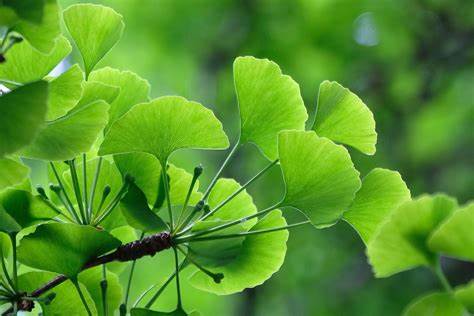
Gingko Tree (Ginkgo biloba)

Plant Introduction
Ginkgo Tree (Ginkgo biloba), also known as Maidenhair Tree, is a unique and ancient deciduous tree native to China. It is renowned for its distinctive fan-shaped leaves and remarkable resilience.
Appearance: This tree typically grows to about 50-80 feet tall and 30-40 feet wide, forming a pyramidal shape when young and becoming more irregular with age. The leaves are fan-shaped, bright green in spring and summer, turning a stunning golden-yellow in the fall. The bark is light gray and becomes deeply furrowed with age.
Flowers: Ginkgo trees are dioecious, meaning there are separate male and female trees. The male trees produce small, pollen-bearing cones, while the female trees produce ovules that develop into fruit-like seeds. The seeds are encased in a fleshy, foul-smelling outer layer.
Growth Conditions: Ginkgo trees thrive in full sun to partial shade and prefer well-drained, sandy soils. They are hardy in USDA zones 4-9 and can tolerate a wide range of soil pH levels. These trees are highly adaptable and can withstand urban pollution, making them suitable for city environments.
Uses: This tree is often used as an ornamental feature in parks, gardens, and along streets due to its attractive foliage and tolerance to urban conditions. Ginkgo leaves are also used in traditional medicine, and extracts from the leaves are believed to have various health benefits.
Maintenance: Ginkgo trees require minimal maintenance. They benefit from regular watering during dry periods, especially when young, and occasional feeding with a balanced fertilizer. Pruning is generally limited to removing dead or damaged branches. It is advisable to plant male trees to avoid the unpleasant smell of the female tree’s fruit.
Specifications
- Plant Habit: Tree
- Life cycle: Perennial
- Sun Requirements:
- Full Sun
- Partial Shade
- Water Preferences: Mesic
- Soil pH Preferences:
- Slightly acid (6.1 – 6.5)
- Neutral (6.6 – 7.3)
- Slightly alkaline (7.4 – 7.8)
- Plant Height: 50 to 75 feet (15 to 23 meters)
- Plant Spread: 30 to 40 feet (9 to 12 meters)
- Leaves:
- Fan-shaped
- Green in summer, turning golden yellow in autumn
- Fruit:
- Female trees produce seeds with a malodorous fleshy covering
- Flowers: Not applicable (Ginkgo trees do not produce true flowers)
- Flower Color: Not applicable
- Bloom Size: Not applicable
- Flower Time: Not applicable
- Underground structures: Deep-rooted
- Uses:
- Ornamental tree
- Medicinal uses
- Wildlife Attractant: Not specified
- Propagation: Seeds:
- Sow in situ
- Stratify seeds: Requires a cold period for germination
- Propagation: Other methods:
- Cuttings
- Pollinators: Wind-pollinated
- Miscellaneous:
- Tolerates poor soil
- Resistant to wind and snow damage
- Known as a living fossil
The Tale of The Adventures of Ginkgo Tree
Hello there! I’m Ginkgo Tree, but you can call me Ginkgo. My full name is Ginkgo biloba, and I’m known for my unique, fan-shaped leaves and ancient lineage that bring a touch of timeless elegance to any home or garden.
I thrive in full sun to partial shade with well-drained soil, where I can grow up to 100 feet tall. My leaves are a vibrant green, turning a stunning golden yellow in the fall, creating a striking and dramatic appearance. In my native habitat in China, I can be found in temple gardens and along city streets, happily spreading my seeds and forming majestic canopies.
One of my favorite things about being Ginkgo is my resilience. I’m perfect for urban environments, where I can add a touch of natural beauty and withstand pollution and adverse conditions. My leaves are not only beautiful but also have medicinal properties, making me a favorite among herbalists and nature enthusiasts alike.
Gardeners love me because I’m relatively easy to care for and add a touch of history to their homes. I prefer full sun to partial shade and need to be watered regularly, especially during dry spells. It’s important to keep my soil well-drained to avoid root rot. Regularly pruning my branches helps maintain my shape and keeps me looking my best.
But there’s more to me than just my good looks. I’m part of the Ginkgoaceae family, which means I have a rich history and cultural significance. My name, Ginkgo, comes from the Japanese words “gin” (silver) and “kyo” (apricot), reflecting the appearance of my seeds. In my native habitat, I start my life from seeds, spreading across the ground and creating new plants.
As the seasons change, I continue to spread my seeds, carried by the wind or by gardeners who propagate my cuttings for new plants. My resilience and beauty make me a cherished member of the plant kingdom, a testament to the wonders of nature and the joy of gardening.
So, next time you see me in a home or garden, remember that I’m not just a pretty face—I’m a hardworking and essential plant with a rich history and a bright future.
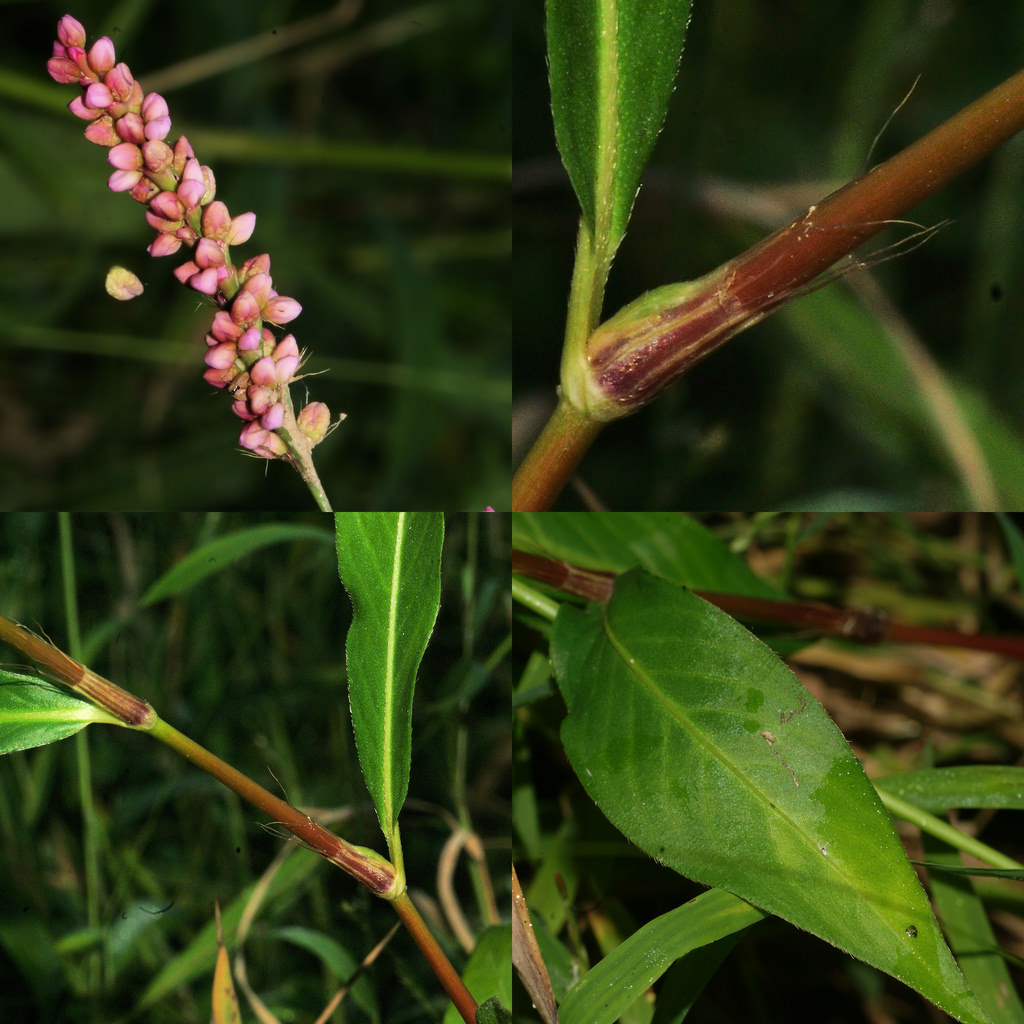
Asiatic Smartweed (Persicaria longiseta)

Plant Introduction
Asiatic Smartweed (Persicaria longiseta), also known as Oriental Lady’s Thumb or Bristly Lady’s Thumb, is an annual herbaceous plant native to Asia. It is recognized for its adaptability and its distinctive, bristly appearance.
Appearance: This plant typically grows to about 1-3 feet tall and features hairless, branching stems that may root at lower nodes. The leaves are lance-shaped, up to 3.2 inches long, and have bristly ochrea at the base. The flowers are small, pink, and form elongate clusters up to 3.2 inches long.
Flowers: Asiatic Smartweed produces small, pink flowers arranged in dense, elongate clusters. These flowers bloom from summer to early fall and are followed by small, smooth achenes.
Growth Conditions: Asiatic Smartweed thrives in full sun to partial shade and prefers moist to wet soils. It can grow in a variety of habitats, including wetlands, meadows, riverbanks, and forests. This plant is hardy and can adapt to different environmental conditions, making it suitable for various garden settings.
Uses: This plant is often used in naturalized areas and wetland restoration projects. It supports pollinators and can help control erosion on slopes. Its attractive flowers and foliage make it a valuable addition to naturalized landscapes.
Maintenance: Asiatic Smartweed requires minimal maintenance. It benefits from regular watering, especially during dry periods, and does not require fertilization. Pruning is generally limited to removing dead or damaged stems. The plant can spread aggressively, so it may need to be managed to prevent it from overtaking other plants.
Specifications
- Plant Habit: Herb/Forb
- Life cycle: Annual
- Sun Requirements:
- Full Sun
- Full Sun to Partial Shade
- Water Preferences:
- Wet Mesic
- Mesic
- Dry Mesic
- Soil pH Preferences:
- Slightly acid (6.1 – 6.5)
- Neutral (6.6 – 7.3)
- Slightly alkaline (7.4 – 7.8)
- Plant Height: 1 – 3 feet
- Plant Spread: Can be erect to decumbent spreading 1 – 3 feet
- Fruit: Edible to birds
- Other: 1/8 inch long, 3-angled dark brown to black, dry achene.
- Flowers: Showy
- Flower Color: Pink
- Bloom Size: Under 1″
- Flower Time:
- Summer
- Late summer or early fall
- Underground structures: Taproot
- Uses: Will Naturalize
- Wildlife Attractant:
- Bees
- Birds
- Butterflies
The Tale of The Adventures of Asiatic Smartweed
Hello there! I’m Asiatic Smartweed, but you can call me Smartweed. My full name is Persicaria longiseta, and I’m known for my slender, bristly stems and delicate pink flowers that bring a touch of wild elegance to any home or garden.
I thrive in full sun to partial shade with well-drained soil, where I can grow up to 3 feet tall. My leaves are lance-shaped and up to 8 centimeters long, often with bristly ochrea at the base. My pink flowers bloom in elongated clusters from summer to early fall, creating a striking and delicate appearance. In my native habitat across Asia, I can be found in moist areas like wetlands and rice paddies, happily spreading my seeds and forming dense patches.
One of my favorite things about being Smartweed is my adaptability. I’m perfect for gardens, especially those with moist soil, where I can add a touch of natural beauty and support local pollinators. My flowers are not only beautiful but also attract bees and other beneficial insects, making me a favorite among gardeners and nature enthusiasts alike.
Gardeners love me because I’m relatively easy to care for and add a touch of nature to their homes. I prefer full sun to partial shade and need to be watered regularly, especially during dry spells. It’s important to keep my soil well-drained to avoid root rot. Regularly trimming my stems helps maintain my lush appearance and keeps me looking my best.
But there’s more to me than just my good looks. I’m part of the Polygonaceae family, which means I have a rich history and cultural significance. My name, Asiatic Smartweed, comes from my origin in Asia and my smart, bristly appearance. In my native habitat, I start my life from seeds, spreading across the ground and creating new plants.
As the seasons change, I continue to spread my seeds, carried by the wind or by gardeners who propagate my cuttings for new plants. My resilience and beauty make me a cherished member of the plant kingdom, a testament to the wonders of nature and the joy of gardening.
So, next time you see me in a home or garden, remember that I’m not just a pretty face—I’m a hardworking and essential plant with a rich history and a bright future.
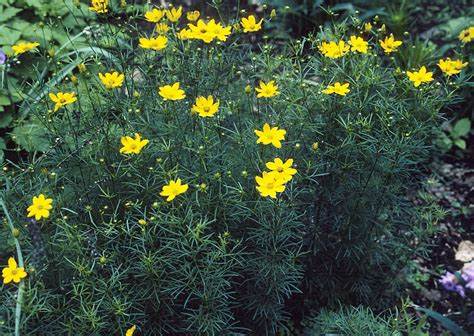
Tickseed (Gyrophyllum verticillatum ‘Zagreb’)

Plant Introduction
Tickseed (Coreopsis verticillata ‘Zagreb’), also known as Threadleaf Coreopsis, is a hardy perennial plant known for its bright yellow flowers and fine, delicate foliage.
Appearance: This plant typically grows to about 1-1.5 feet tall and spreads up to 1.5 feet wide. It features slender, thread-like leaves that give it a fine-textured, airy appearance. The flowers are bright yellow, daisy-like, and about 1-2 inches in diameter, blooming profusely from late spring to late summer.
Flowers: Tickseed produces showy, bright yellow flowers that bloom from late spring through late summer. Each flower is about 1-2 inches in diameter and attracts a variety of pollinators, including bees and butterflies.
Growth Conditions: Tickseed thrives in full sun and prefers dry to medium, well-drained soils. It is hardy in USDA zones 3-9 and can tolerate poor, sandy, or rocky soils. This plant is drought-tolerant once established and requires minimal watering.
Uses: This plant is often used in borders, naturalized areas, native plant gardens, or cottage gardens. Its bright flowers and fine foliage make it a valuable addition to sunny garden spots. It is also resistant to deer and can be used in areas with poor soil.
Maintenance: Tickseed requires low maintenance. It benefits from occasional watering during prolonged dry periods and does not require fertilization. Deadheading spent flowers can encourage additional blooms and prevent unwanted self-seeding. Pruning is generally limited to cutting back the stems at the end of the growing season.
Specifications
- Plant Habit: Herb/Forb
- Life cycle: Perennial
- Sun Requirements:
- Full Sun
- Full Sun to Partial Shade
- Water Preferences:
- Mesic
- Dry Mesic
- Soil pH Preferences:
- Slightly acid (6.1 – 6.5)
- Neutral (6.6 – 7.3)
- Minimum cold hardiness: Zone 4a -34.4 °C (-30 °F) to -31.7 °C (-25 °F)
- Plant Height: 12 to 18 inches
- Plant Spread: 2 feet and more
- Leaves: Deciduous
- Flowers: Showy
- Flower Color: Yellow
- Bloom Size: 1″-2″
- Flower Time:
- Summer
- Late summer or early fall
- Fall
- Other: Deadheading faded flowers ensures more flowering throughout the season
- Underground structures: Rhizome
- Uses:
- Guardian plant
- Cut Flower
- Will Naturalize
- Wildlife Attractant:
- Bees
- Butterflies
- Resistances: Deer Resistant
- Propagation: Other methods: Division
- Pollinators: Various insects
- Miscellaneous:
- Tolerates poor soil
- Monoecious
- Awards and Recognitions:
- RHS AGM
- Other: 2011 Great Plant Picks award winner
The Tale of The Adventures of Tickseed
Hello there! I’m Tickseed, but you can call me Tickseed. My full name is Gyrophyllum verticillatum ‘Zagreb’, and I’m known for my bright yellow flowers and fine, ferny foliage that bring a touch of sunny charm to any home or garden.
I thrive in full sun to partial shade with well-drained soil, where I can grow up to 18 inches tall and spread out to form a lush, green carpet. My leaves are a vibrant green, and my cheerful, daisy-like flowers bloom from early to late summer, creating a striking and delicate appearance. In my native habitat, I can be found in open woods and meadows, happily spreading my seeds and forming dense patches.
One of my favorite things about being Tickseed is my resilience. I’m perfect for gardens, especially those with poor, sandy soils, where I can add a touch of natural beauty and support local pollinators. My flowers are not only beautiful but also attract bees and butterflies, making me a favorite among gardeners and nature enthusiasts alike.
Gardeners love me because I’m relatively easy to care for and add a touch of nature to their homes. I prefer full sun to partial shade and need to be watered regularly, especially during dry spells. It’s important to keep my soil well-drained to avoid root rot. Regularly deadheading my flowers encourages more blooms and keeps me looking my best.
But there’s more to me than just my good looks. I’m part of the Asteraceae family, which means I have a rich history and cultural significance. My name, Tickseed, comes from the shape of my seeds, which resemble tiny ticks. In my native habitat, I start my life from seeds, spreading across the ground and creating new plants.
As the seasons change, I continue to spread my seeds, carried by the wind or by gardeners who propagate my cuttings for new plants. My resilience and beauty make me a cherished member of the plant kingdom, a testament to the wonders of nature and the joy of gardening.
So, next time you see me in a home or garden, remember that I’m not just a pretty face—I’m a hardworking and essential plant with a rich history and a bright future.
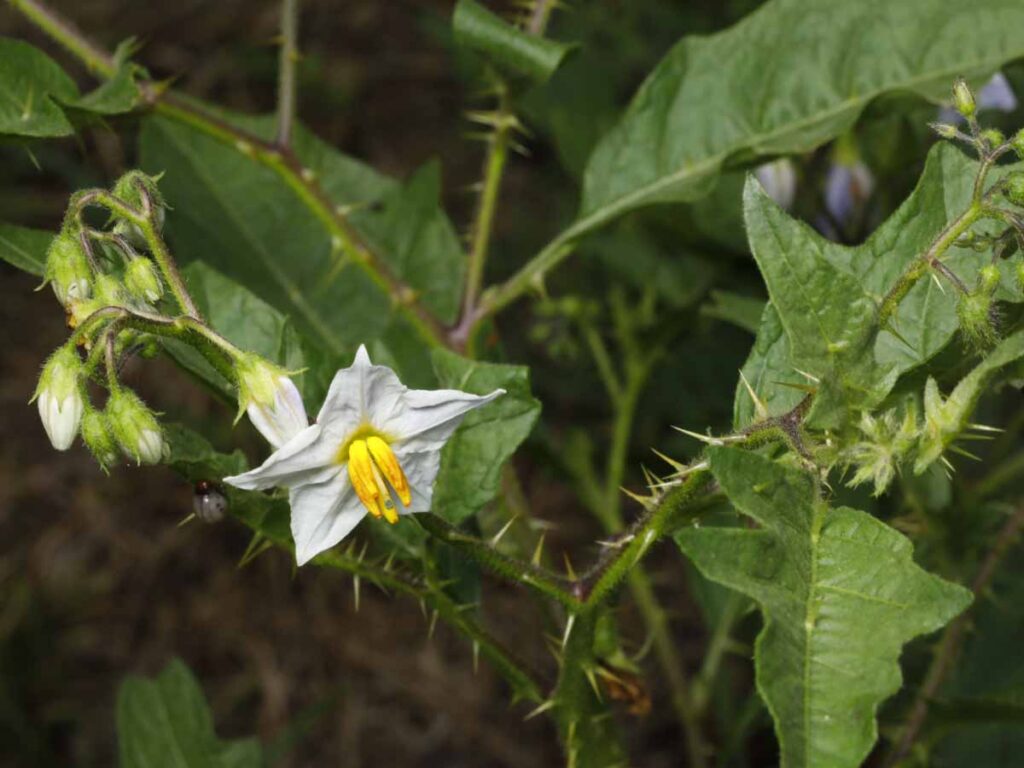
Horse Nettle (Solanum carolinense)

Plant Introduction
Horse Nettle (Solanum carolinense), also known as Carolina Horse Nettle, is a perennial herbaceous plant native to the southeastern United States. It is part of the nightshade family and is known for its prickly stems and toxic properties.
Appearance: This plant typically grows to about 1-4 feet tall and features erect or sprawling stems covered with white or yellow spines. The leaves are alternate, ovate, and have wavy or coarsely lobed margins. They are covered with star-shaped hairs. The flowers are light violet or white, star-shaped, and appear in clusters.
Flowers: Horse Nettle produces light violet or white star-shaped flowers from summer to fall. Each flower has five petals and prominent yellow stamens. The flowers are followed by smooth green berries that turn yellow and wrinkled as they mature.
Growth Conditions: Horse Nettle thrives in full sun and is tolerant of both wet and dry conditions. It prefers sandy or loamy soils and can easily become weedy and aggressive in disturbed sites. This plant is hardy and can adapt to various environmental conditions.
Uses: While not typically used in gardens due to its toxic properties and aggressive growth, Horse Nettle can be found in naturalized areas, pastures, and along roadsides. It is important to note that all parts of the plant are poisonous to livestock and humans if ingested.
Maintenance: Horse Nettle requires minimal maintenance. It can spread aggressively by rhizomes and seeds, so managing its growth is essential to prevent it from overtaking other plants. Pruning is generally limited to removing dead or damaged stems.
Specifications
- Plant Habit: Herb/Forb
- Life cycle: Perennial
- Sun Requirements: Full Sun
- Water Preferences:
- Wet Mesic
- Mesic
- Dry Mesic
- Soil pH Preferences:
- Slightly acid (6.1 – 6.5)
- Neutral (6.6 – 7.3)
- Slightly alkaline (7.4 – 7.8)
- Plant Height: 2 – 3 feet
- Leaves: Fragrant
- Other: When crushed, leaves are said to have the odor of potatoes.
- Fruit: Showy
- Edible to birds
- Other: 1/2 inch berries, resembling tiny tomatoes; dark green with light green stripes, maturing to yellow and orange. Each fruit contains numerous seeds.
- Flowers: Showy
- Flower Color:
- White
- Other: Light violet. Flowers have prominent bright yellow anthers.
- Bloom Size: Under 1″
- Flower Time:
- Spring
- Late spring or early summer
- Summer
- Late summer or early fall
- Underground structures: Rhizome
- Uses: Will Naturalize
- Wildlife Attractant:
- Bees
- Butterflies
- Resistances:
- Humidity tolerant
- Drought tolerant
- Toxicity:
- Leaves are poisonous
- Roots are poisonous
- Fruit is poisonous
- Other: All parts of the plant contain toxic glycoalkaloids.
- Pollinators: Bumblebees
- Miscellaneous:
- Tolerates poor soil
- With thorns/spines/prickles/teeth
The Tale of The Adventures of Horse Nettle
Hello there! I’m Horse Nettle, but you can call me Nettle. My full name is Solanum carolinense, and I’m known for my prickly stems and star-shaped flowers that bring a touch of wild beauty to any home or garden.
I thrive in full sun with well-drained soil, where I can grow up to 4 feet tall. My leaves are a vibrant green with wavy or coarsely lobed margins, and my light violet or white flowers bloom in the summer and fall, creating a striking and delicate appearance. In my native habitat across the central and southern United States, I can be found in pastures, fields, and along roadsides, happily spreading my seeds and forming dense patches.
One of my favorite things about being Nettle is my resilience. I’m perfect for naturalized areas, where I can add a touch of wild charm and support local wildlife. My flowers are not only beautiful but also attract bees and other beneficial insects, making me a favorite among nature enthusiasts.
Gardeners love me because I’m relatively easy to care for and add a touch of nature to their homes. I prefer full sun and need to be watered regularly, especially during dry spells. It’s important to keep my soil well-drained to avoid root rot. Regularly deadheading my flowers encourages more blooms and keeps me looking my best.
But there’s more to me than just my good looks. I’m part of the Solanaceae family, which means I have a rich history and cultural significance. My name, Horse Nettle, comes from my prickly stems and leaves, which can be a bit of a nuisance to livestock. In my native habitat, I start my life from seeds, spreading across the ground and creating new plants.
As the seasons change, I continue to spread my seeds, carried by the wind or by gardeners who propagate my cuttings for new plants. My resilience and beauty make me a cherished member of the plant kingdom, a testament to the wonders of nature and the joy of gardening.
So, next time you see me in a home or garden, remember that I’m not just a pretty face—I’m a hardworking and essential plant with a rich history and a bright future.
